The LG UA7500 with an IPS panel also presents itself as a television mainly designed for everyday use. SDR content looks good on it, upscaling and image processing are at quite a decent level, and webOS, as always, offers a lot of freedom – from YouTube to Netflix, as well as USB recording and AirPlay support. Similar to the VA version, here we also find a set of features for gamers that may please occasional console users – ALLM, VRR in the range of 48–60 Hz, or Game Bar. This means that even with hardware limitations, you can comfortably start your favorite game after work or school. The biggest advantage of the IPS variant is the wide viewing angles – the image retains its colors even when viewed from the side. However, the price for that is a much weaker black, which resembles dark gray rather than deep pitch, so this screen is best viewed with the lights on. HDR is also not a strong point of this model, as its low brightness and limited color gamut significantly "flatten" it. But if we are looking for a television for everyday entertainment – news, movies, series, or YouTube – the UA7500 performs this role quite well. It's a "regular" in the best sense of the word: cheap, easy to use, and with a system that offers a lot of possibilities.
- Matching (Score)
- Our verdict
- TV appearance
- Where to buy
- Contrast and black detail
- HDR effect quality
- Factory color reproduction
- Color reproduction after calibration
- Smoothness of tonal transitions
- Image scaling and smoothness of tonal transitions
- Blur and motion smoothness
- Console compatibility and gaming features
- Input lag
- Compatibility with PC
- Viewing angles
- TV efficiency during daytime
- Details about the matrix
- TV features
- Apps
- Playing files from USB
- Sound
LG UA75006LA (IPS) vs LG QNED86A / QNED85A / QNED87A
Direct compare
QNED85A / QNED86A / QNED87A / A6A / A6B / A6C
Available screen sizes: 43”
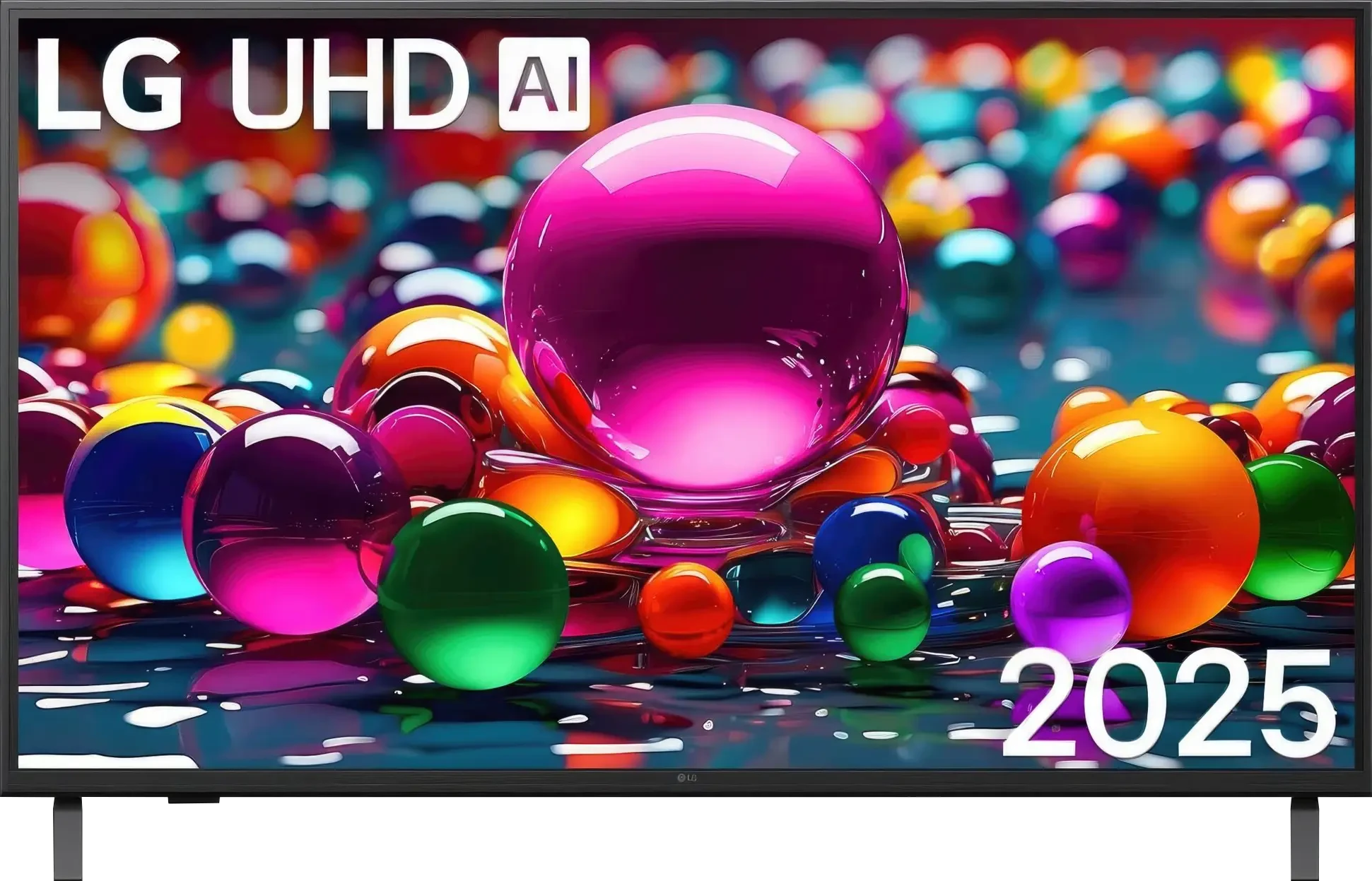
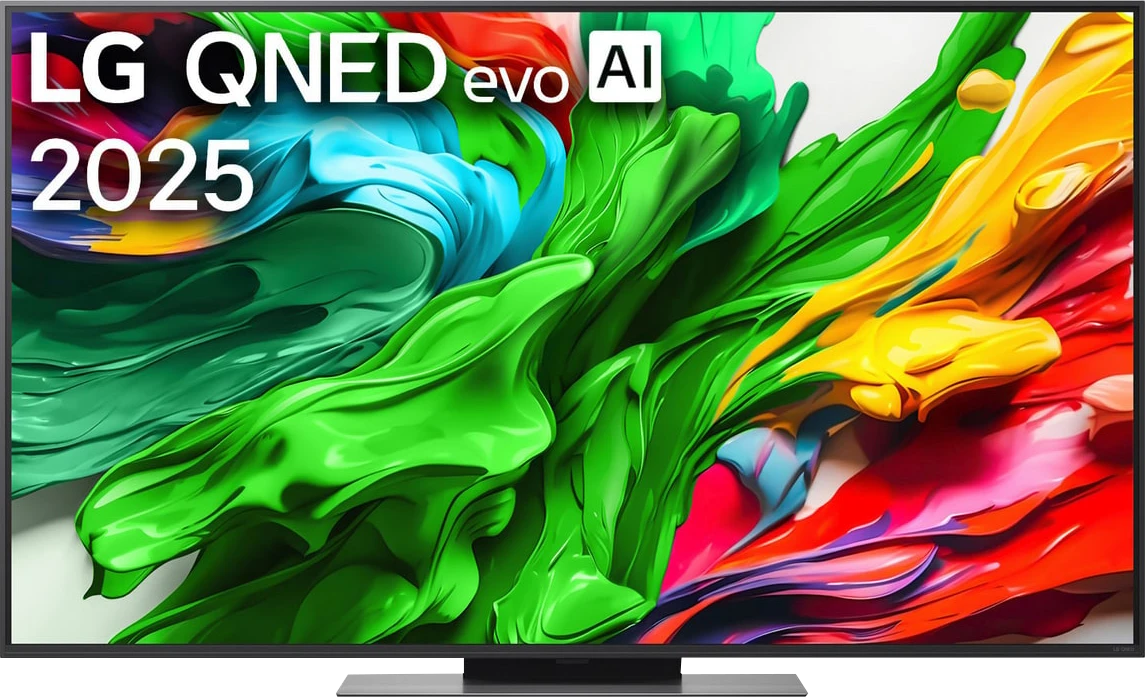
Panel type: LCD IPS
Resolution: 3840x2160
System: WebOS
Model year: 2025
Complete the survey to find out the result

Panel type: LCD IPS
Resolution: 3840x2160
System: WebOS
Model year: 2025
Complete the survey to find out the result

Overall rating
5.6
7.0
Movies and series in UHD quality
5.0
6.4
Classic TV, YouTube
4.8
6.1
Sports broadcasts (TV and apps)
5.1
7.1
Gaming on console
6.7
8.3
TV as a computer monitor
6.0
8.0
Watching in bright light
4.0
5.8
Utility functions
7.0
8.4
Apps
9.1
9.1
Sound quality
6.0
6.0
Complete the survey to find out what fits your preferences
Advantages
Wide viewing angles, the image does not lose colors as much from the side
Very good font readability when working with PC (chroma 4:4:4)
Ability to record to USB from built-in tuners
WebOS with a large selection of apps and support for AirPlay
Low input lag (below 10 ms)
friendly for the “casual gamer”: ALLM, VRR (48–60 Hz), Game Bar, HGiG
120 Hz panel, good for sports and gaming
Very low input lag
Great for gamers (VRR, ALLM, HGiG, etc.)
Full set of HDMI 2.1 ports
Good compatibility with PC (great font readability)
Bright picture (around 700 nits in HDR), works well in moderately bright rooms
Good viewing angles (IPS)
Supports Dolby Vision
User-friendly webOS operating system with Magic Remote and voice assistant
Ability to record programs to USB
Disadvantages
Very poor black level and low contrast (about 1000:1)
Low brightness (about 250 nits), image easily fades during the day
Missing dynamic HDR formats (Dolby Vision, HDR10+)
Quite a plastic case and no Magic remote included
Very poor black and contrast due to the IPS panel
Lack of the declared 144 Hz in PC mode
Aggressive "light bars" when dimming is enabled (edge local dimming ruins evening movie screenings)
Confusion in markings and versions – even TVs with the same name in different stores can have different stands (central or two legs) or frame colors, which can be very misleading when purchasing.
Our verdict
QNED86A6A is a television that really does a great job in its price class when it comes to sports, gaming, and everyday TV watching. The 120 Hz panel makes the picture smooth and the motion sharp, which will be appreciated by both fans and gamers. Additionally, it has low input lag along with a full set of gaming features such as HGiG, VRR, and ALLM. The TV works just as well with a computer as it does with a console, so in the office or on a desk in the 43” version, it will perform excellently as a work monitor. Another strong point is the webOS system. It is a fast, stable, and app-rich operating system that, paired with the Magic remote, provides very convenient control. The new version of the remote is slimmer and fits better in the hand, and the cursor on the screen is a solution that many competitors lack. It also includes classic features – USB recording, Bluetooth for headphones, and a full set of HDMI 2.1 with eARC and Dolby Atmos support. This makes the QNED85 series TVs some of the most "multimedia" televisions in their class. But let's not sugarcoat it; this model also has its significant drawbacks. Its biggest flaw is undoubtedly the contrast, or rather the lack of it. The IPS panel combined with edge "mini-LED" is simply a very bad idea. The screen is simply not suitable for watching movies in a dark living room. The blacks are grayish-blue, and local dimming can generate light stripes resembling lasers, which effectively ruins the viewing experience. For home theater, this is not a choice that can be recommended with full conviction. The second problem may not be directly related to the TV itself but to its sales. It concerns the chaos in naming and the differences in derivative versions. The same model, even with the same designation, can have a different frame color or stand depending on the store. This can really be frustrating for the buyer and create a sense of confusion. In summary: LG QNED86A6A is a great TV for sports, gaming, and everyday television, with a convenient system and great functionality. But if you are looking for a screen specifically for movies or series and require deep blacks, it is better to look towards TVs that can truly be called Mini-LEDs with full confidence.
TV appearance
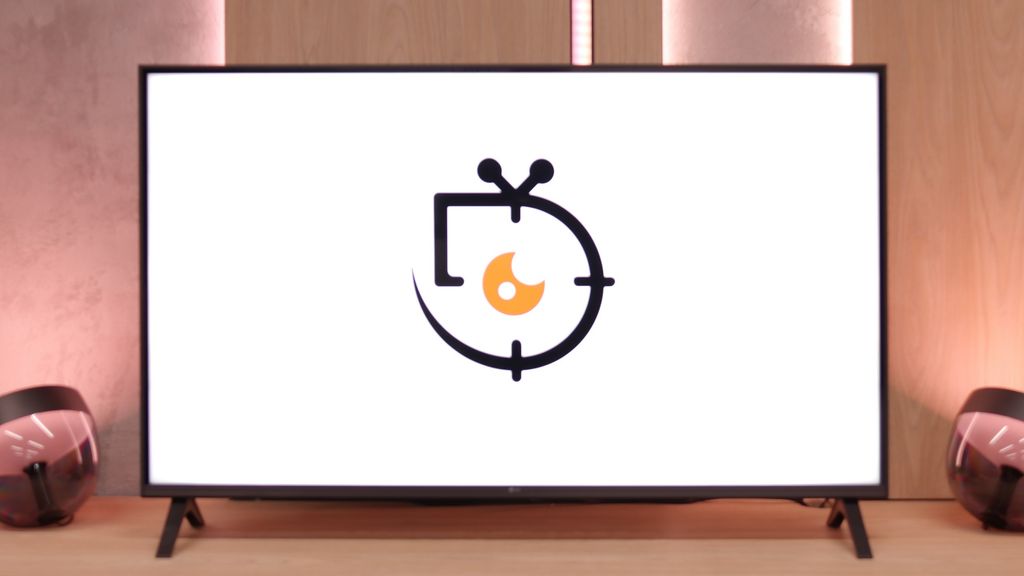
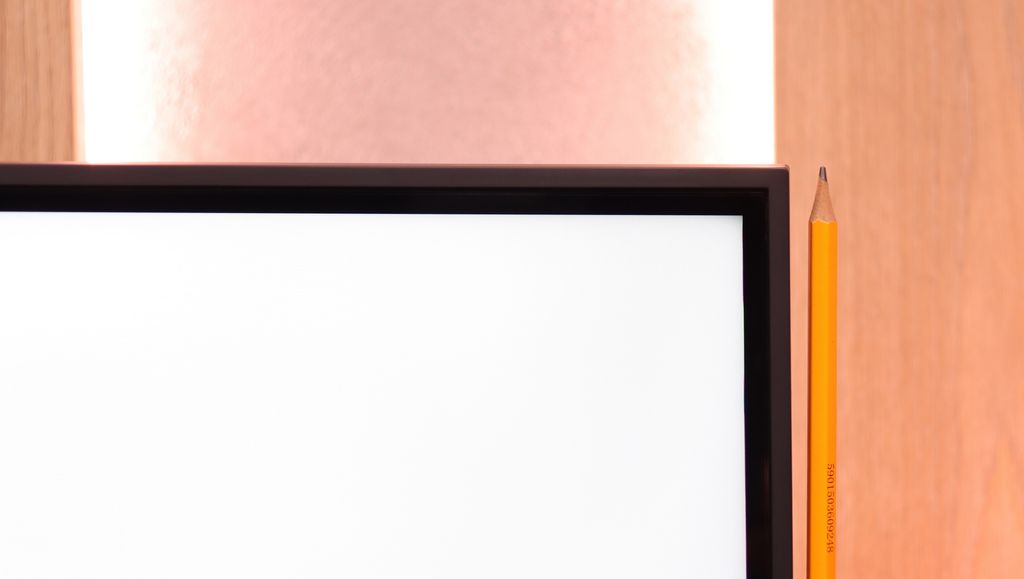
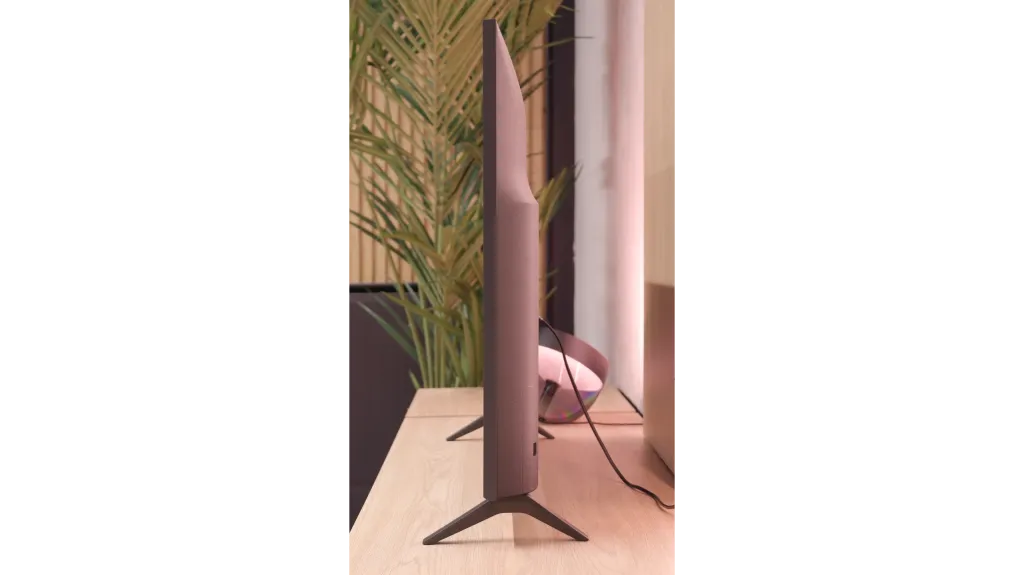
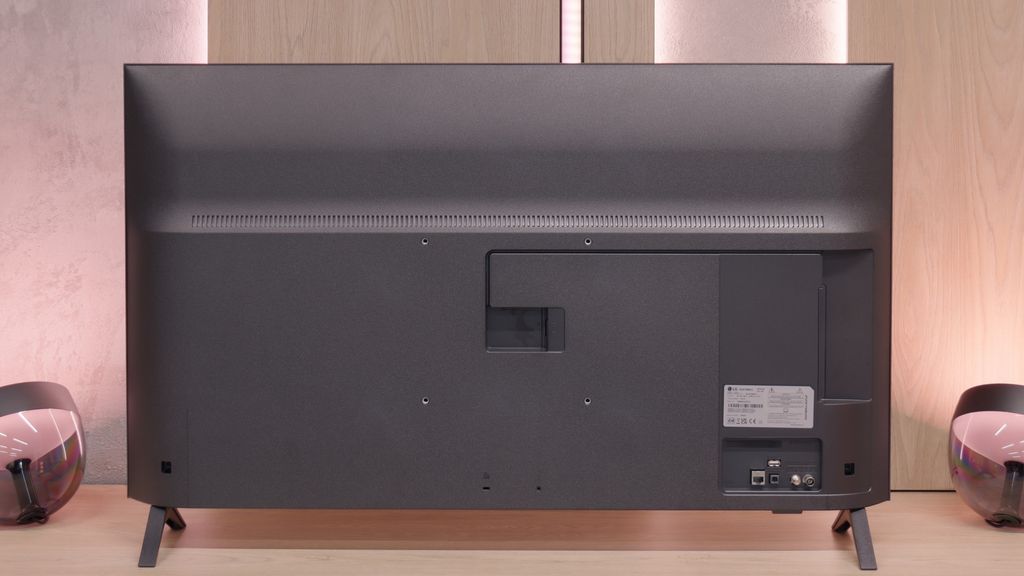
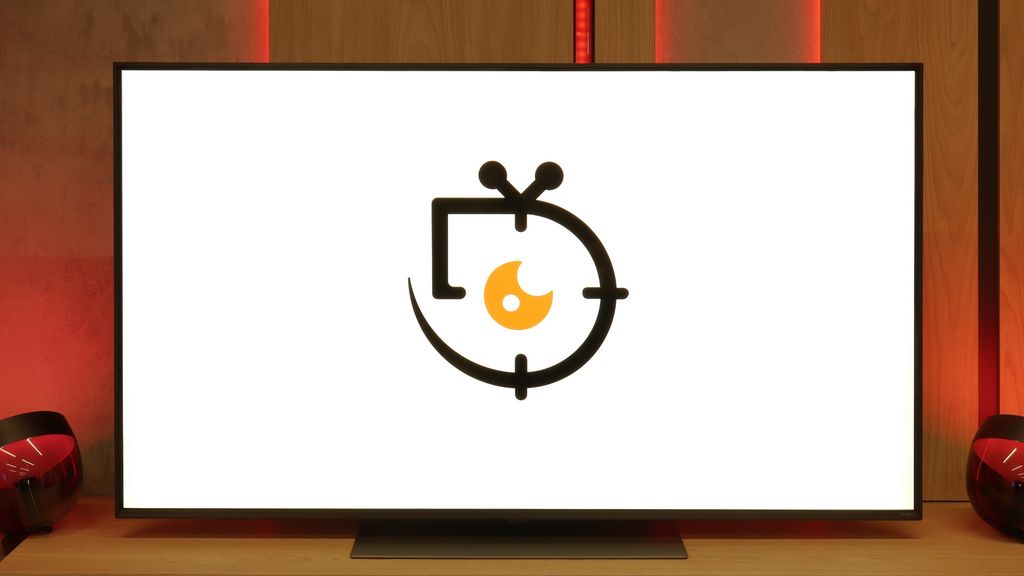
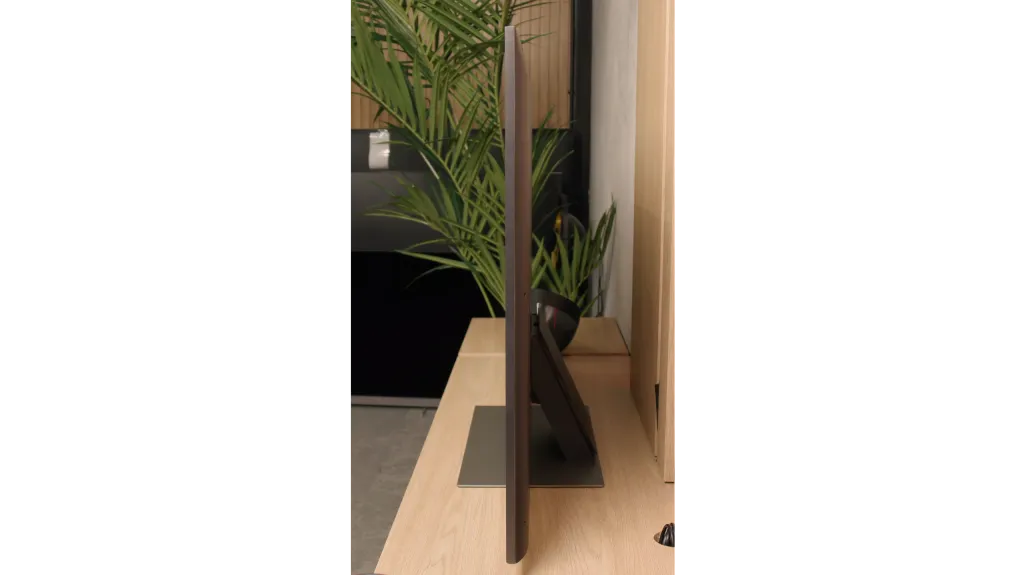
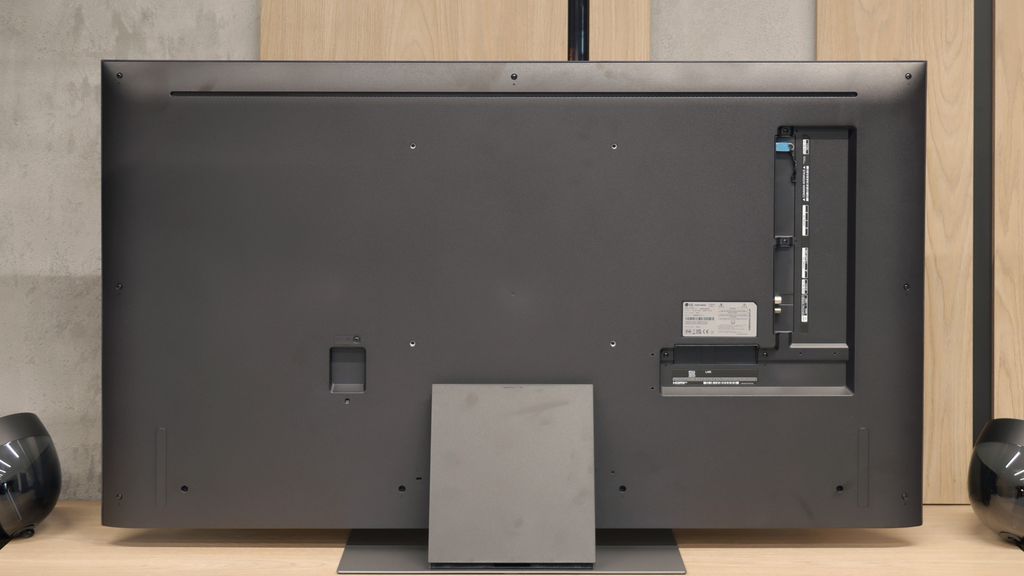
Contrast and black detail
1.9/10
3.5/10
Local dimming function: No
Local dimming function: Yes, number of zones: 6 (1 x 6)
Contrast:

Result
1,100:1

Result
1,050:1

Result
800:1

Result
900:1

Result
1,050:1

Result
4,050:1

Result
1,750:1

Result
4,800:1

Result
1,850:1

Result
1,350:1
Halo effect and black detail visibility:
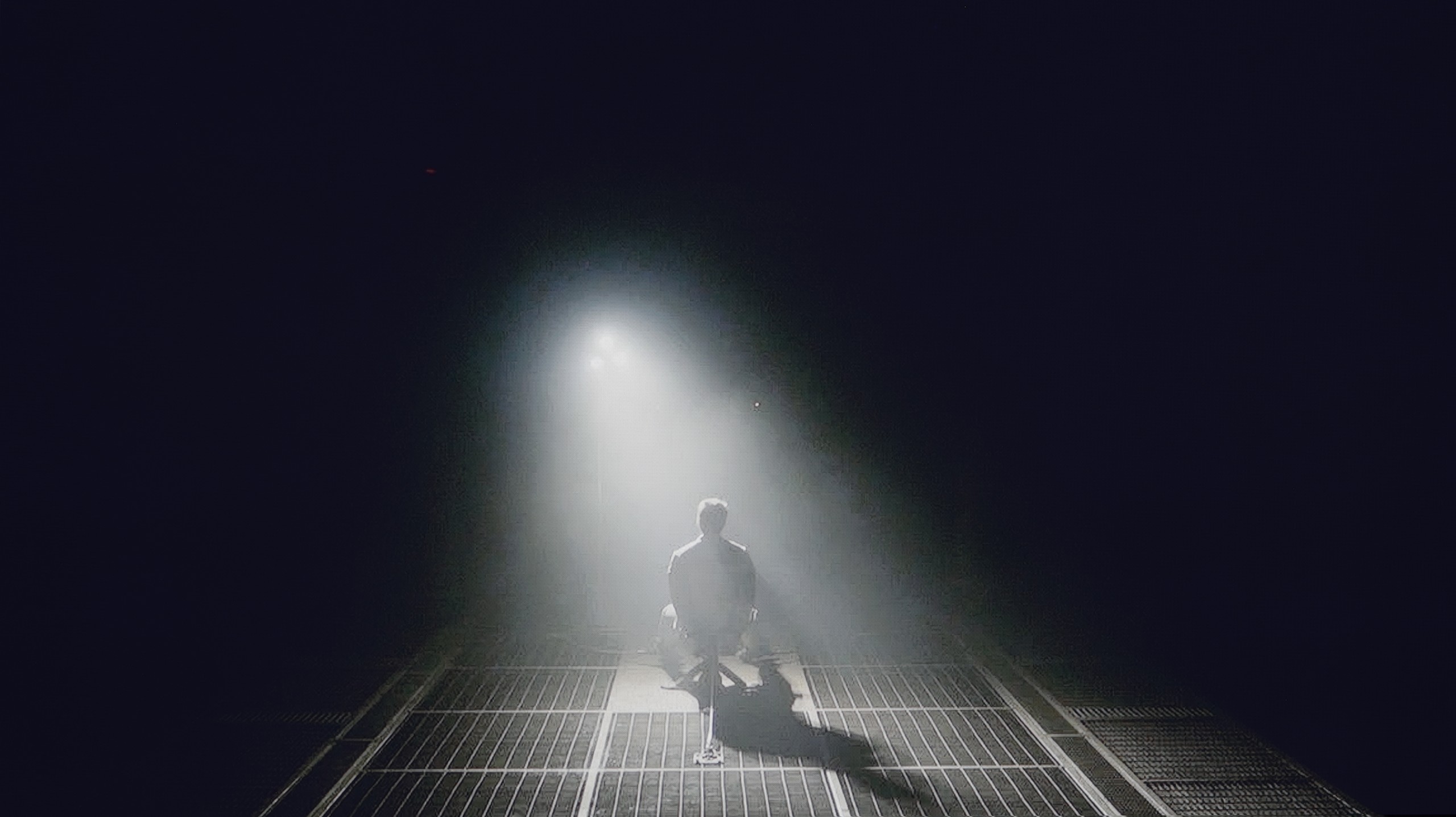
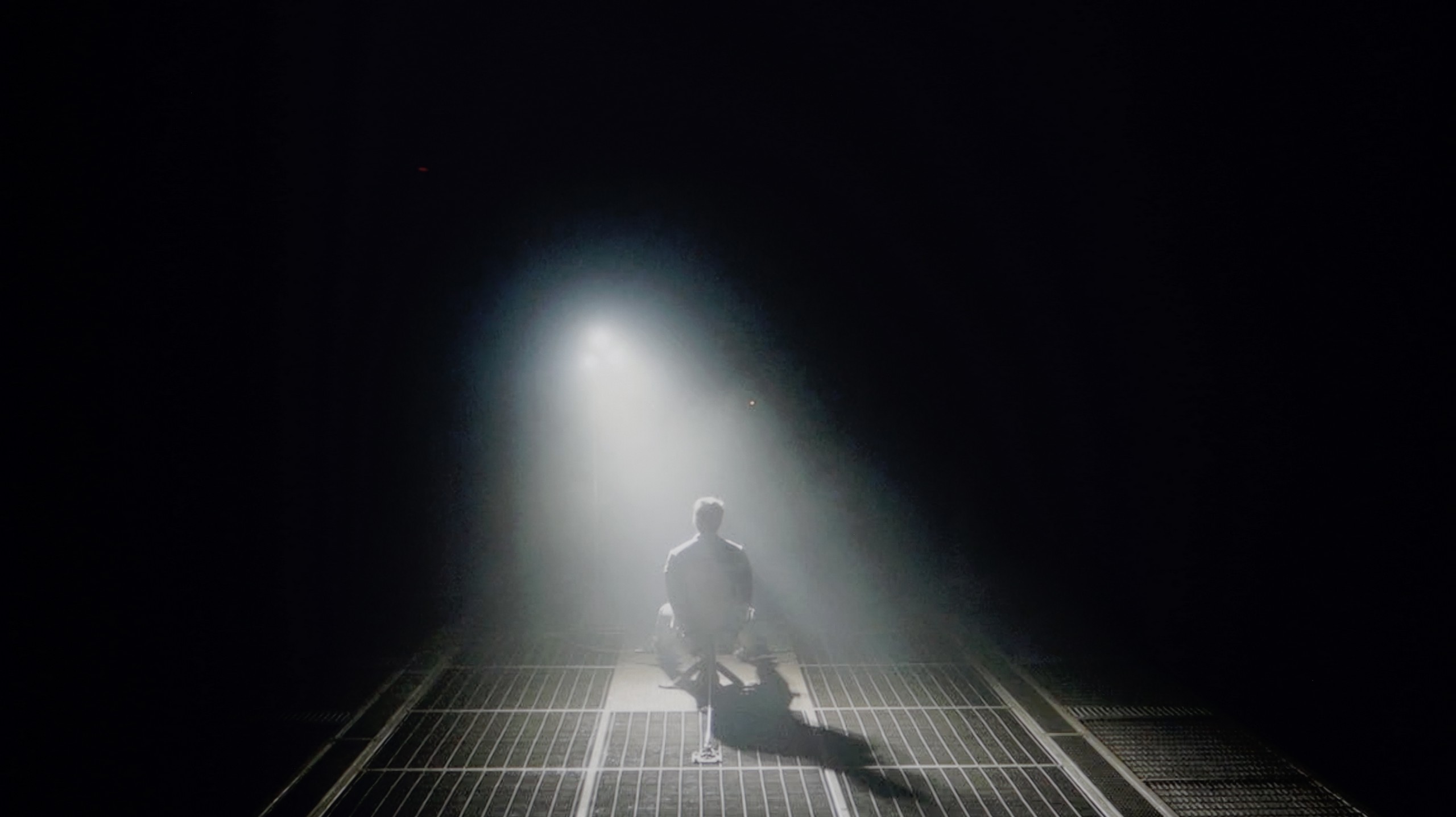
In the case of an IPS panel, the situation looks completely different compared to the version with a VA panel. The contrast stops around 1000:1, which means that blacks are rather muted and resemble a shade of gray. During evening viewing, it is hard to talk about a cinematic atmosphere, as the screen cannot separate the bright and dark parts of the image as clearly as the VA version does. However, we do get wide viewing angles, which work well in larger groups when everyone is looking at the TV from different spots in the living room. It’s a compromise that not everyone will appreciate, but in a bright room, while watching TV during the day, it performs definitely better than during nighttime screenings. Because it is precisely during nighttime screenings that the smallest variant, the LG UA7500, simply does not manage well.
Although the manufacturer describes the QNED86A as a Mini-LED television, one would be hard-pressed to find the multi-zone local dimming system known from more expensive models. In practice, we are dealing with classic edge lighting that only allows for dimming horizontal bands of the screen from top to bottom. Combined with the low-contrast IPS/ADS panel, the effect is simply poor. If we decide to keep local dimming enabled, a problem arises – the television can illuminate selected areas in such a way that it appears like “flying lasers” crossing the screen. This is very distracting, and it is difficult to claim a truly cinematic experience under such conditions. Therefore, in our opinion, it is better to disable this function. However, one has to reckon with the fact that the contrast then drops to around 1500:1, but at least the image does not irritate with artificial flashes.
HDR effect quality
3.7/10
6/10
Luminance measurements in HDR:

Result
250 nit

Result
225 nit

Result
261 nit

Result
160 nit

Result
269 nit

Result
602 nit

Result
524 nit

Result
690 nit

Result
512 nit

Result
500 nit
Scene from the movie “Pan” (about 2800 nits)
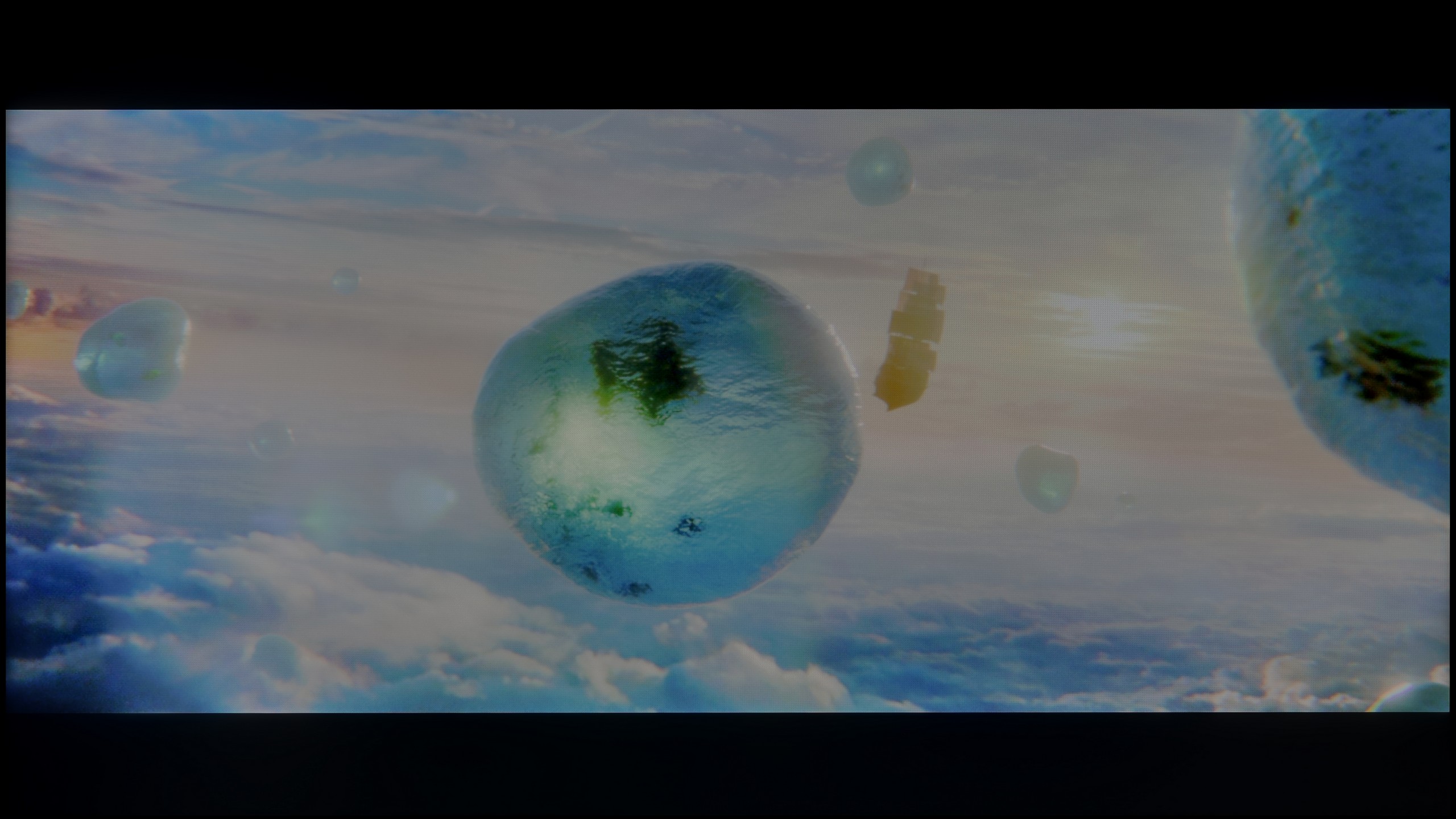
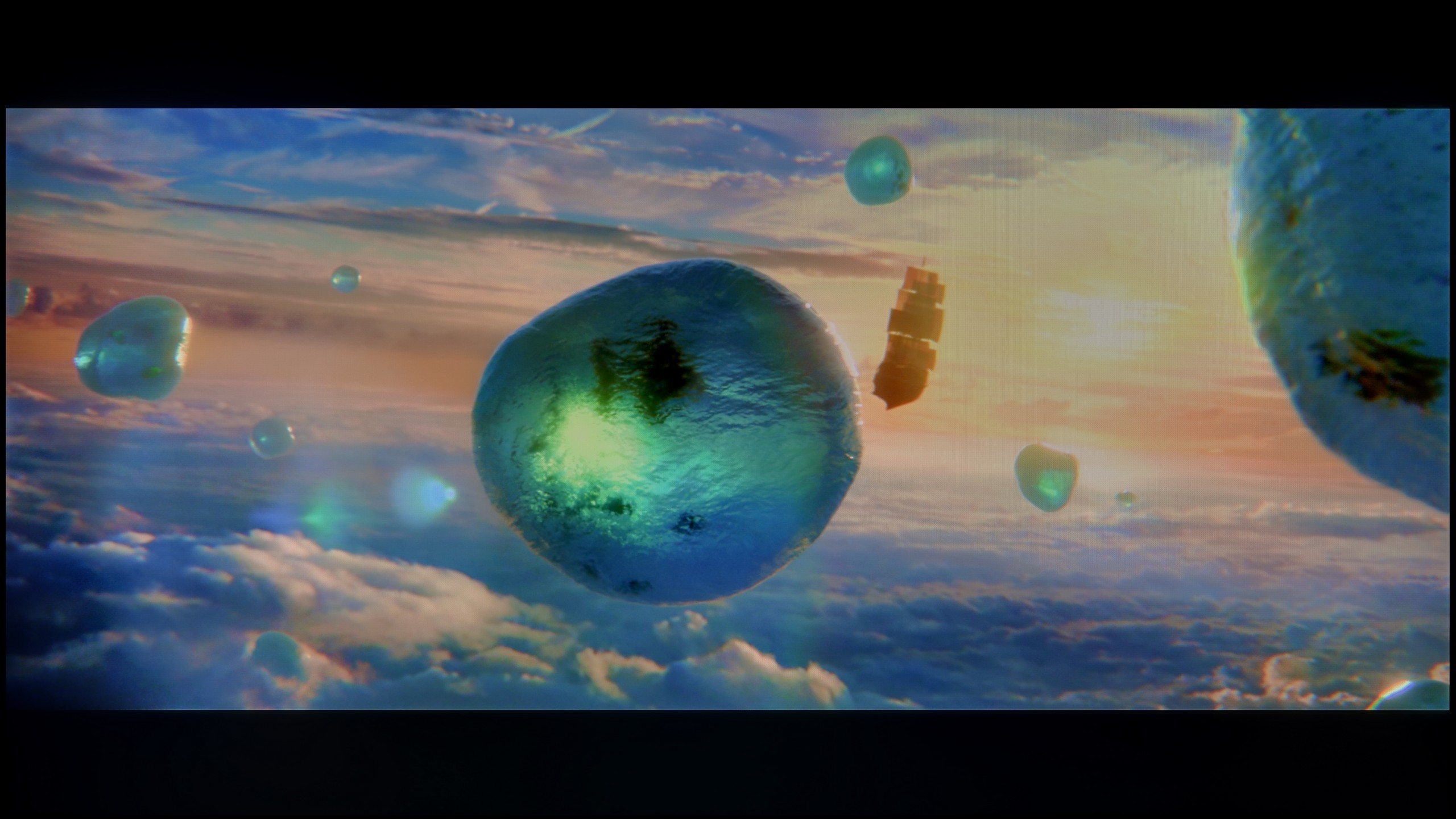
Scene from the movie “Billy Lynn” (about 1100 nits)
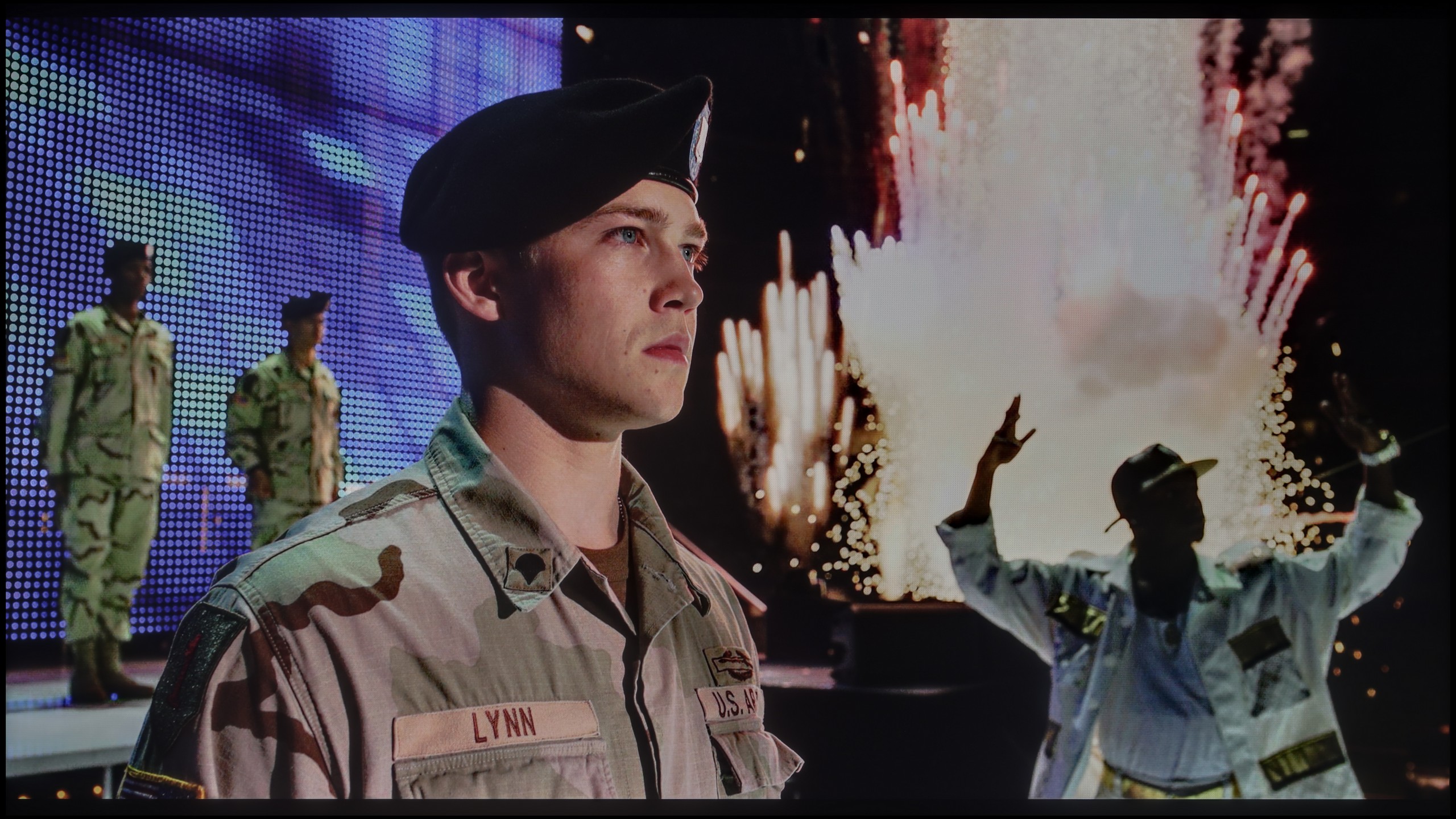
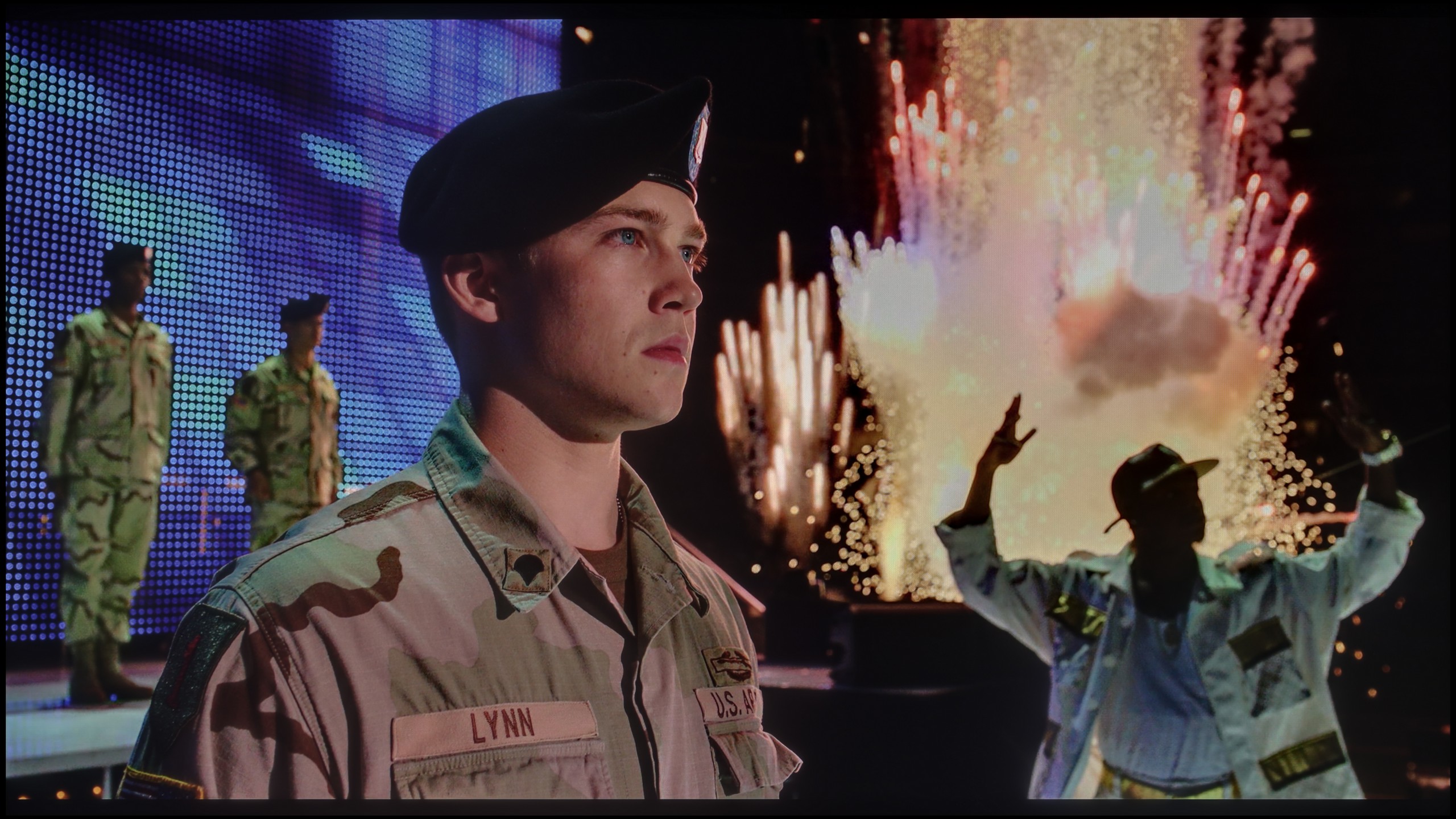
Static HDR10
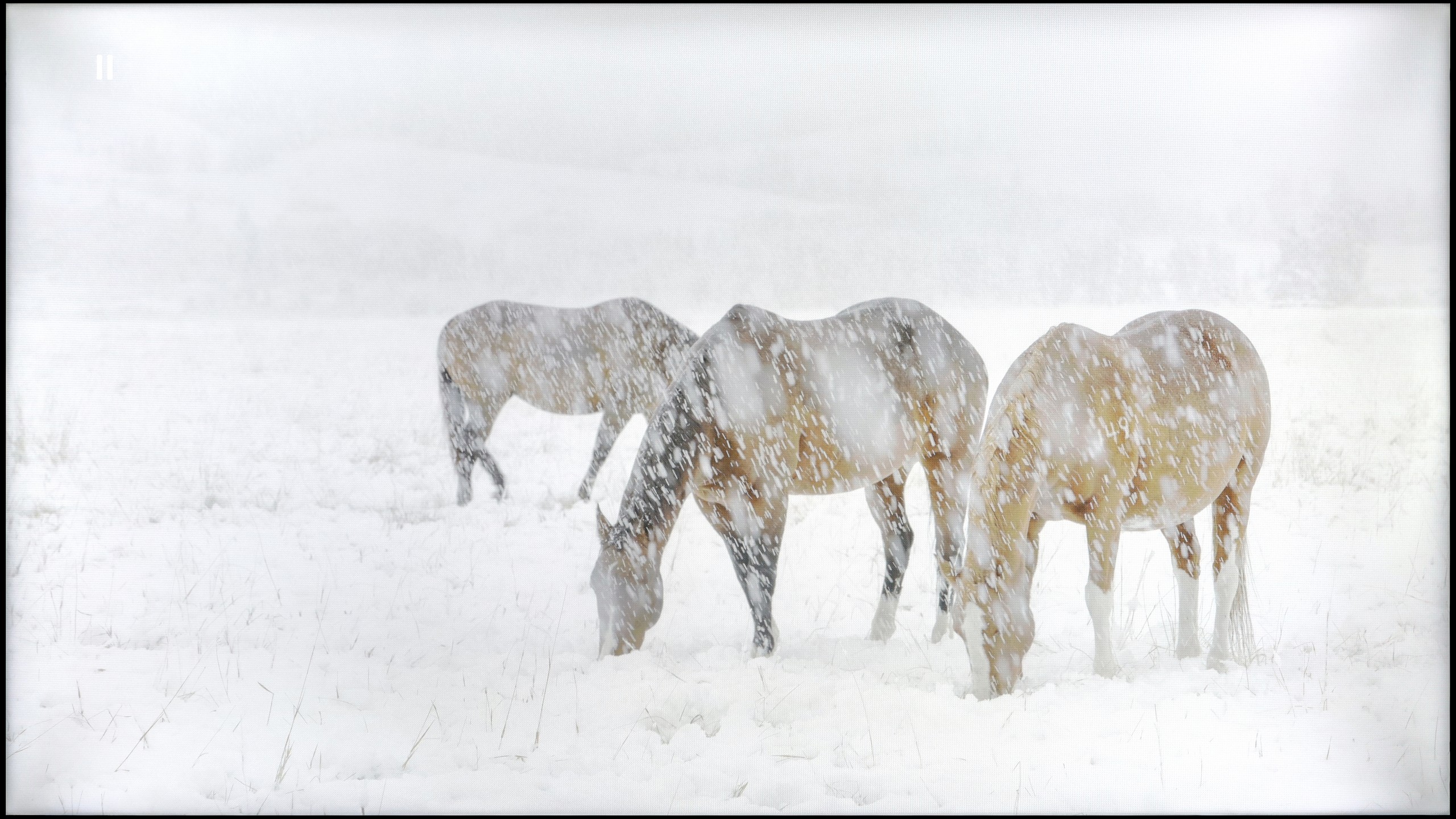
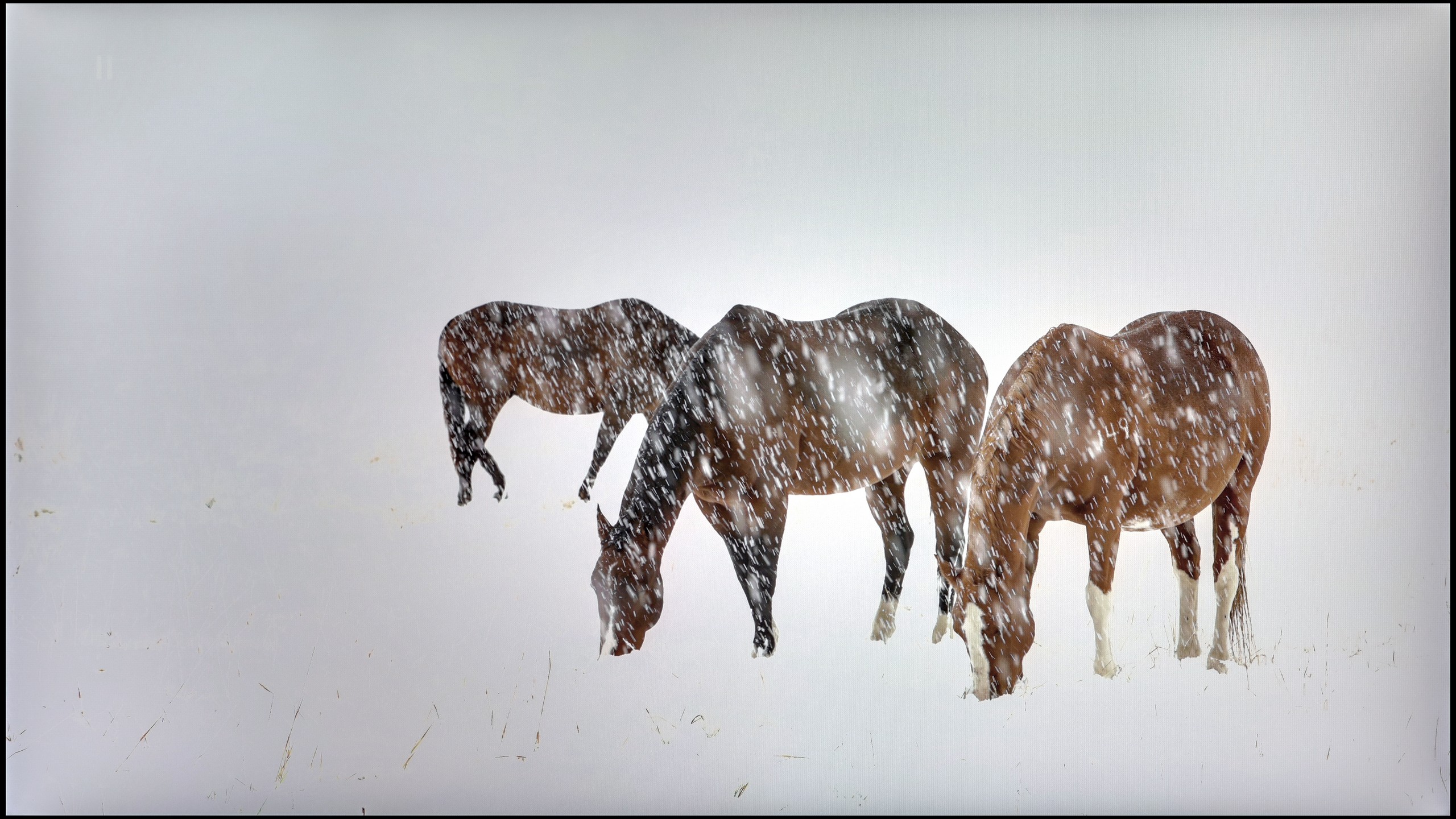
HDR luminance chart:
LG QNED86A / QNED85A / QNED87A
HDR luminance
LG UA75006LA (IPS)
HDR luminance
The situation is even more modest in the IPS version, where the peak brightness reaches only 250 nits. In practice, this means that there can be no real sense of HDR effect, and the materials being viewed resemble ordinary SDR. Similar to the VA case, the image behaves stably on most test screens, but in demanding scenes with fine details, the television tends to slightly dim the image. As a result, blacks appear somewhat better, but at the cost of losing detail in bright elements. The lack of additional color filters is also noticeable here. The UA7500 in the IPS version does not belong to QLEDs or PFS LED panels, and the DCI-P3 color gamut stops at 80%, which means that HDR films present themselves without much color depth and give the impression of being heavily flattened.
Against the backdrop of contrast and black, the brightness of the QNED86A and the overall HDR effect performs much better. This is a television that can reach around 700 nits in the best conditions, so in terms of brightness alone, there is nothing to be ashamed of. As a result, scenes with strong lights, explosions, flashes, or bright parts of the landscape look clear and can make an impression. Interestingly, even in more challenging moments with small, contrasting elements on the screen, the television handles their backlighting well, and the details are quite visible. The problem resurfaces when there are a lot of dark tones. The lack of effective local dimming causes black to virtually disappear, and instead, we get a gray glow spreading across the entire screen. This kills the sense of depth and makes the image look flat, as if it lacks a cinematic quality. In bright animations or colorful family films, this won't be an issue because colors and bright light dominate there. But in horrors or productions set in darkness, these limitations are very palpable. As a consolation, it’s worth mentioning that the QNED86A is actually a QLED television with a PFS LED filter, which gives it very good coverage of wide color gamuts. Both the DCI-P3 palette and the wider BT.2020 perform really solid here. This ensures that colors in HDR films are saturated, vibrant, and have the right depth – even if the black itself disappoints, the colors can save the viewing experience and make the image look attractive.
Factory color reproduction
5.6/10
5.6/10
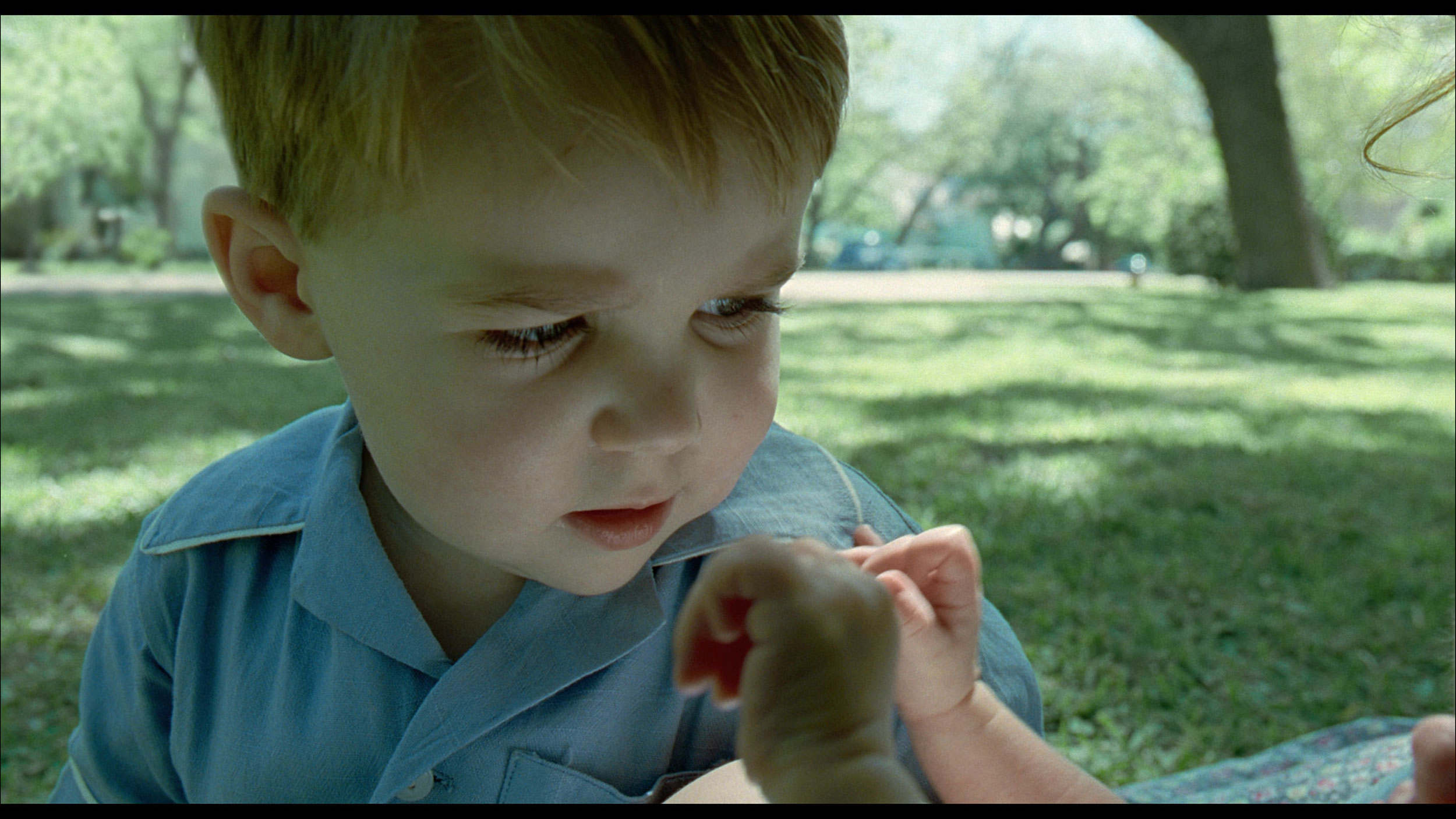
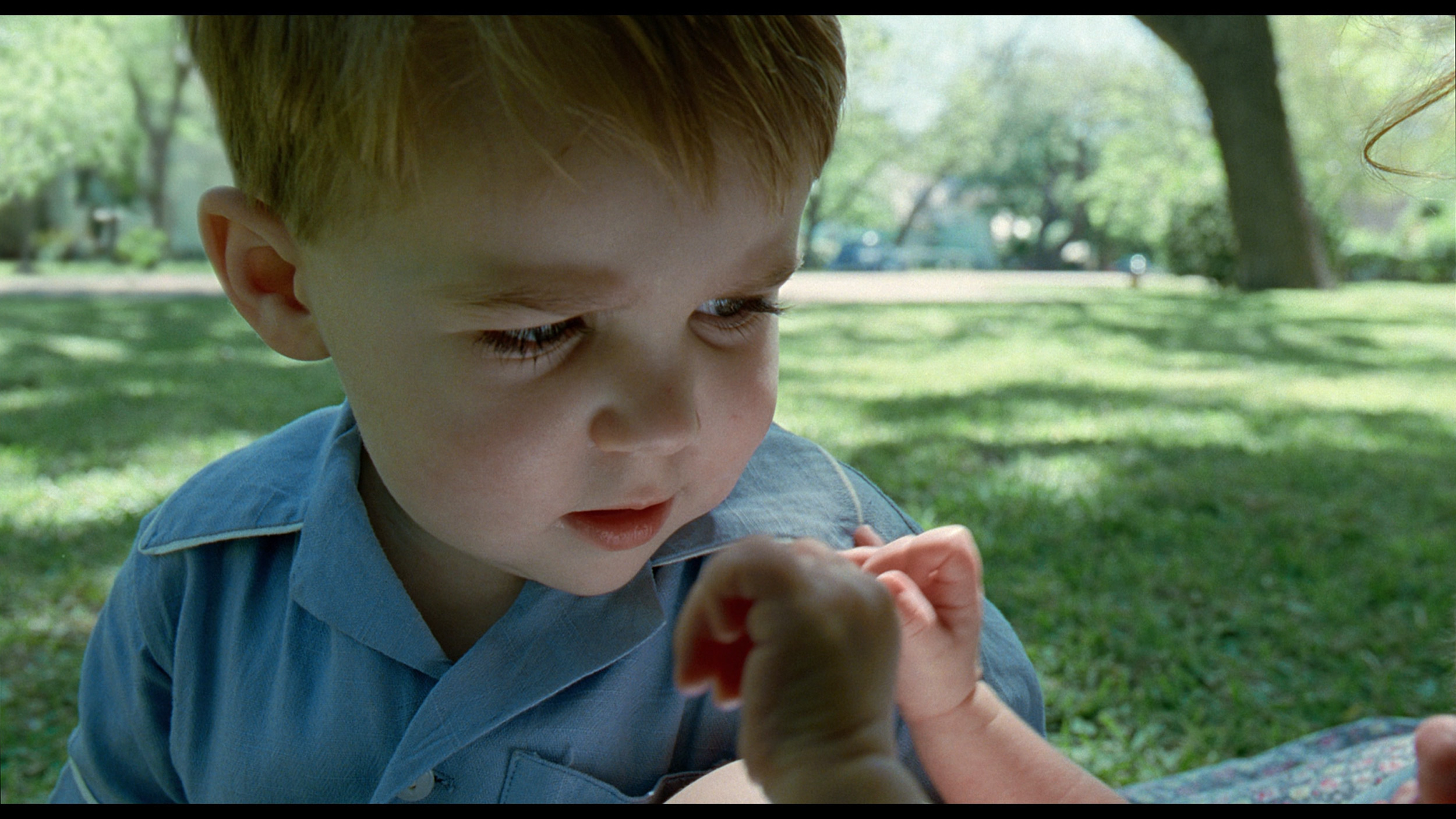
Factory Mode
After calibration


Factory Mode
After calibration
The Filmmaker mode on the LG UA7500 performs better than one might expect from such a budget TV, but let’s not get carried away with enthusiasm. The picture is fairly well put together and at first glance does not offend, but its weaknesses quickly start to show. This is most evident in scenes with bright points — background lamps or light reflections on the skin are clearly overemphasized. The faces of the characters often look unnatural, as if they have been "blown out." Additionally, the default gamma characteristic brightens the smallest details and causes the image to lose subtlety in darker areas. That said, given its price range, the UA7500 in factory mode provides a pretty decent starting point. However, it is clear that without additional adjustments, these problems cannot be avoided, which is why — as with other TVs — we decided to check what could be achieved after calibration.
We primarily tested the QNED86A in Filmmaker mode, which is designed to provide the most accurate picture. Unfortunately, right out of the box, there were quite a few shortcomings. The most noticeable issue was the poorly adjusted white balance – there was a lack of blue, causing the overall image to lean slightly yellow, and at times, even orange. An even bigger problem turned out to be the way the television manages brightness. Due to its technical limitations – namely, local dimming that only works along the edges of the screen – the QNED86A tends to over-brighten entire scenes. This is where the flattening effect we mentioned earlier comes from. Instead of distinct depth and contrast, we get something akin to "boosted brightness," which can strain the eye over time.
Color reproduction after calibration
7/10
7.6/10
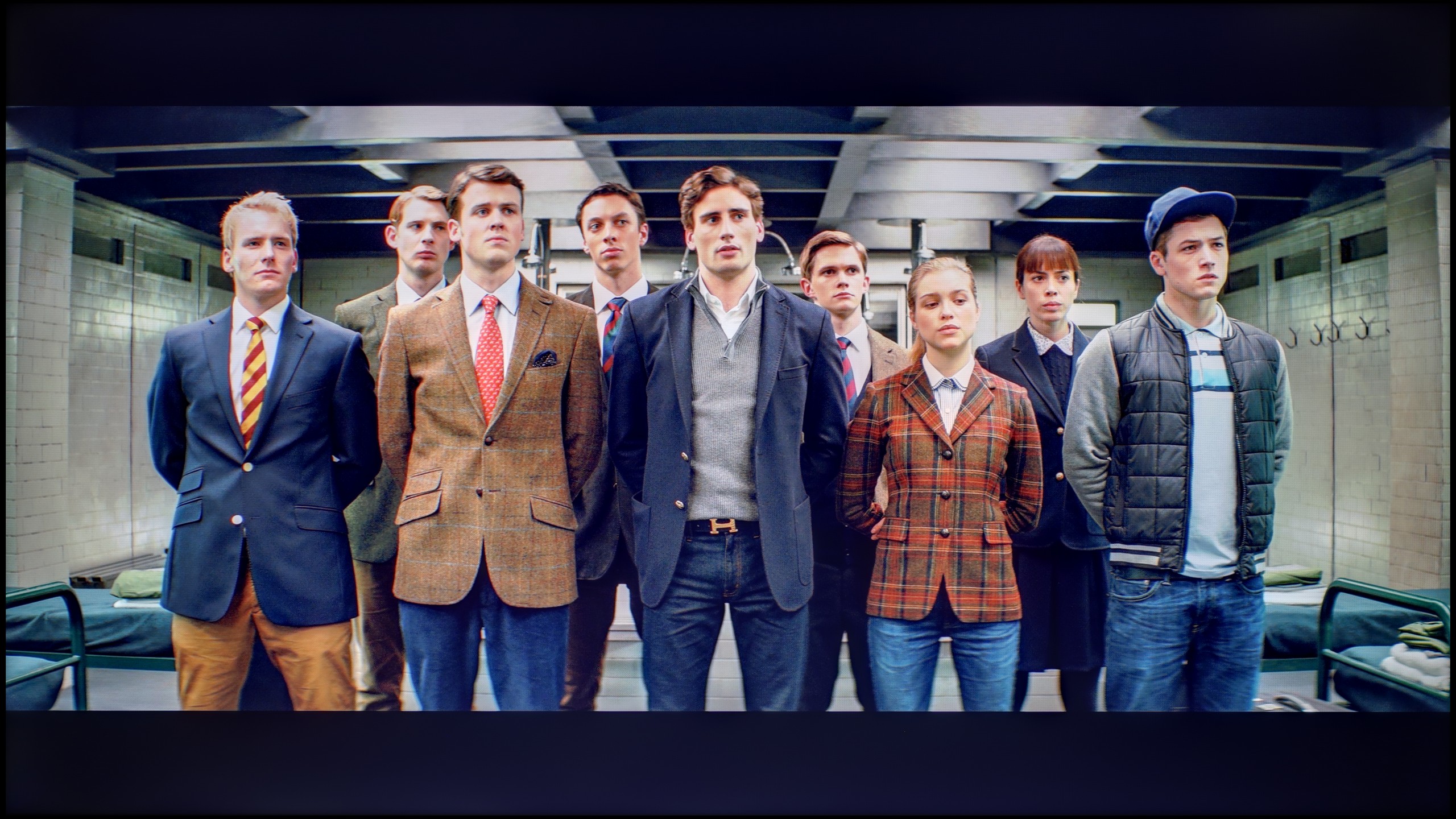
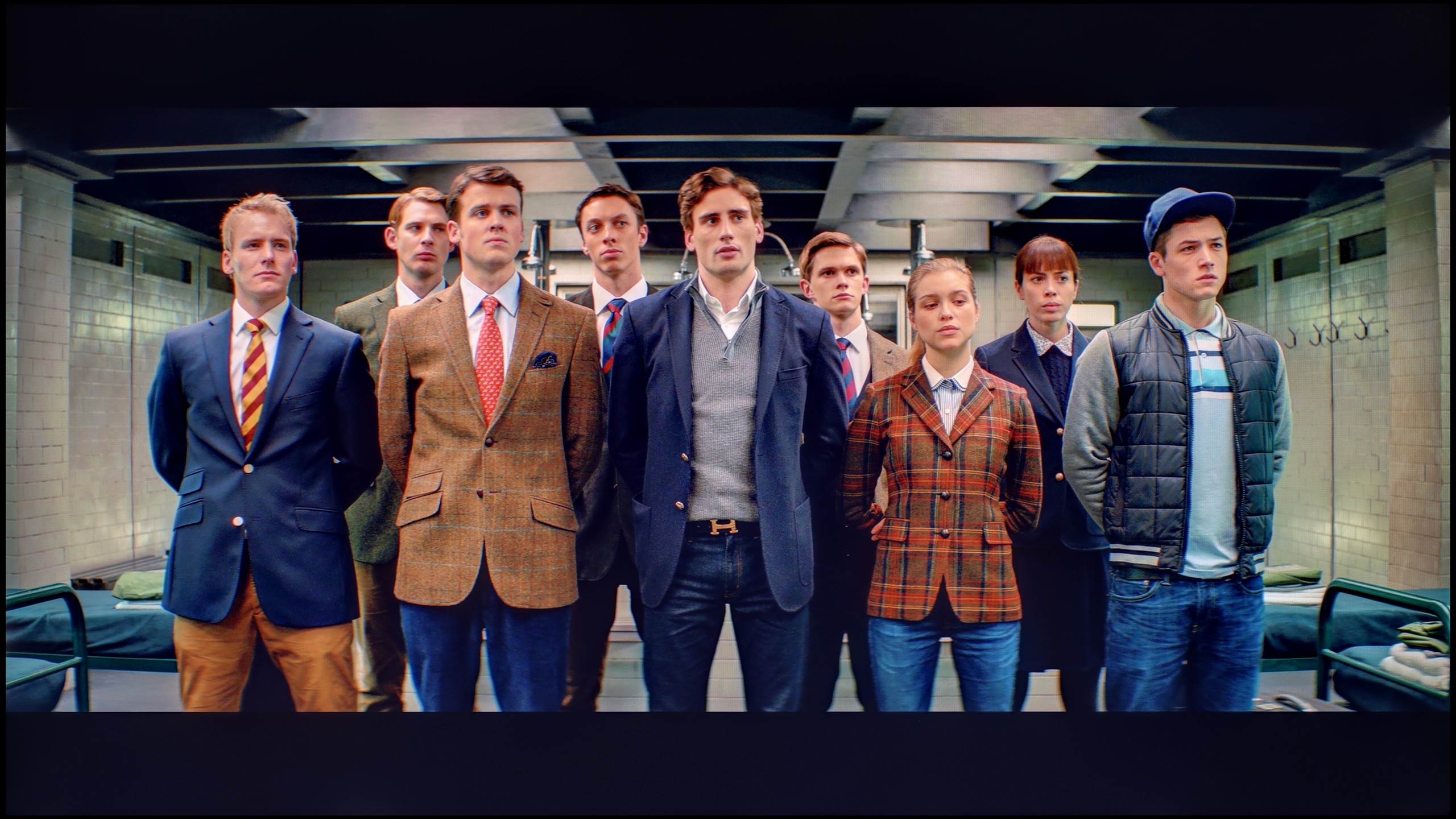
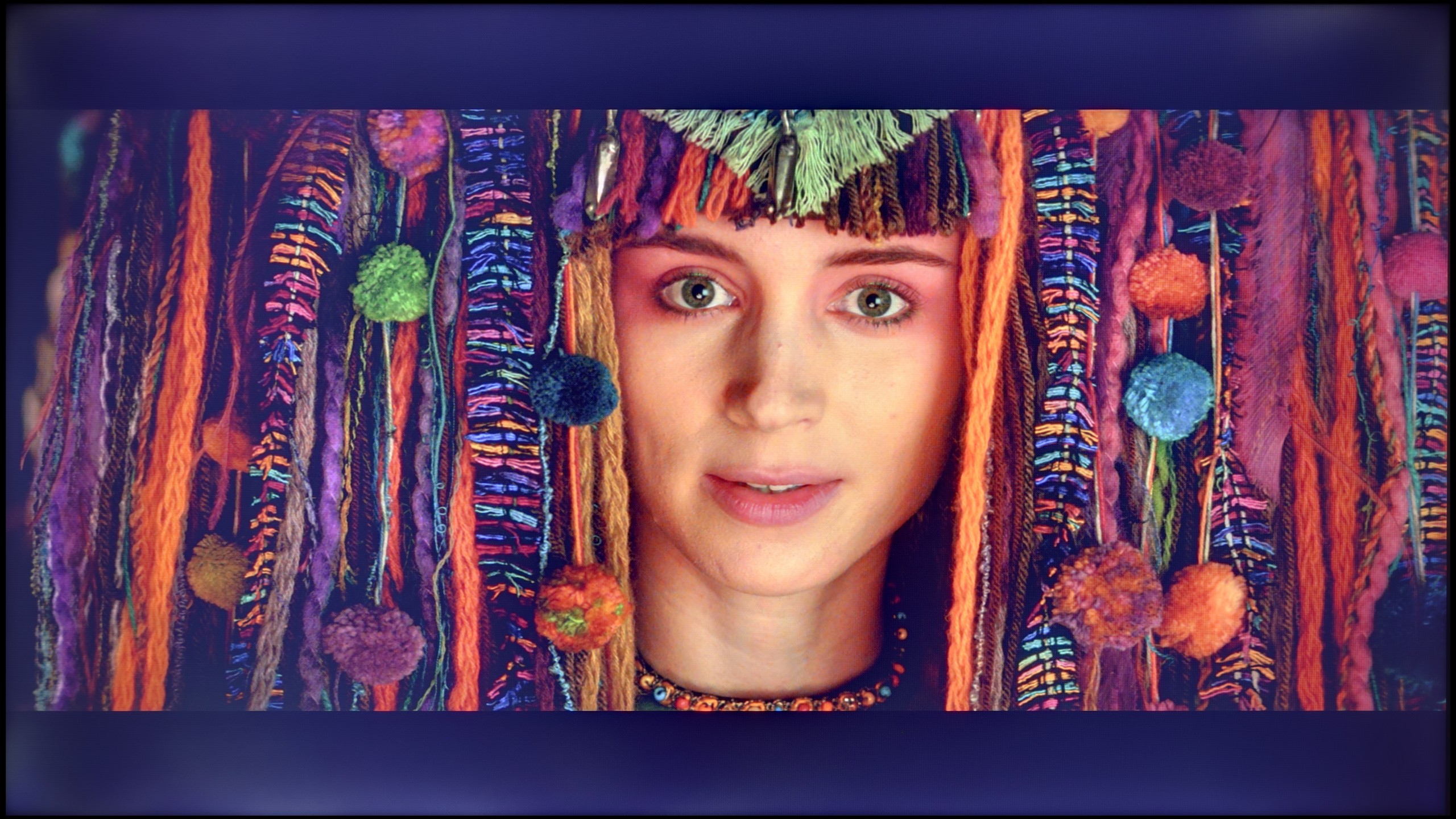
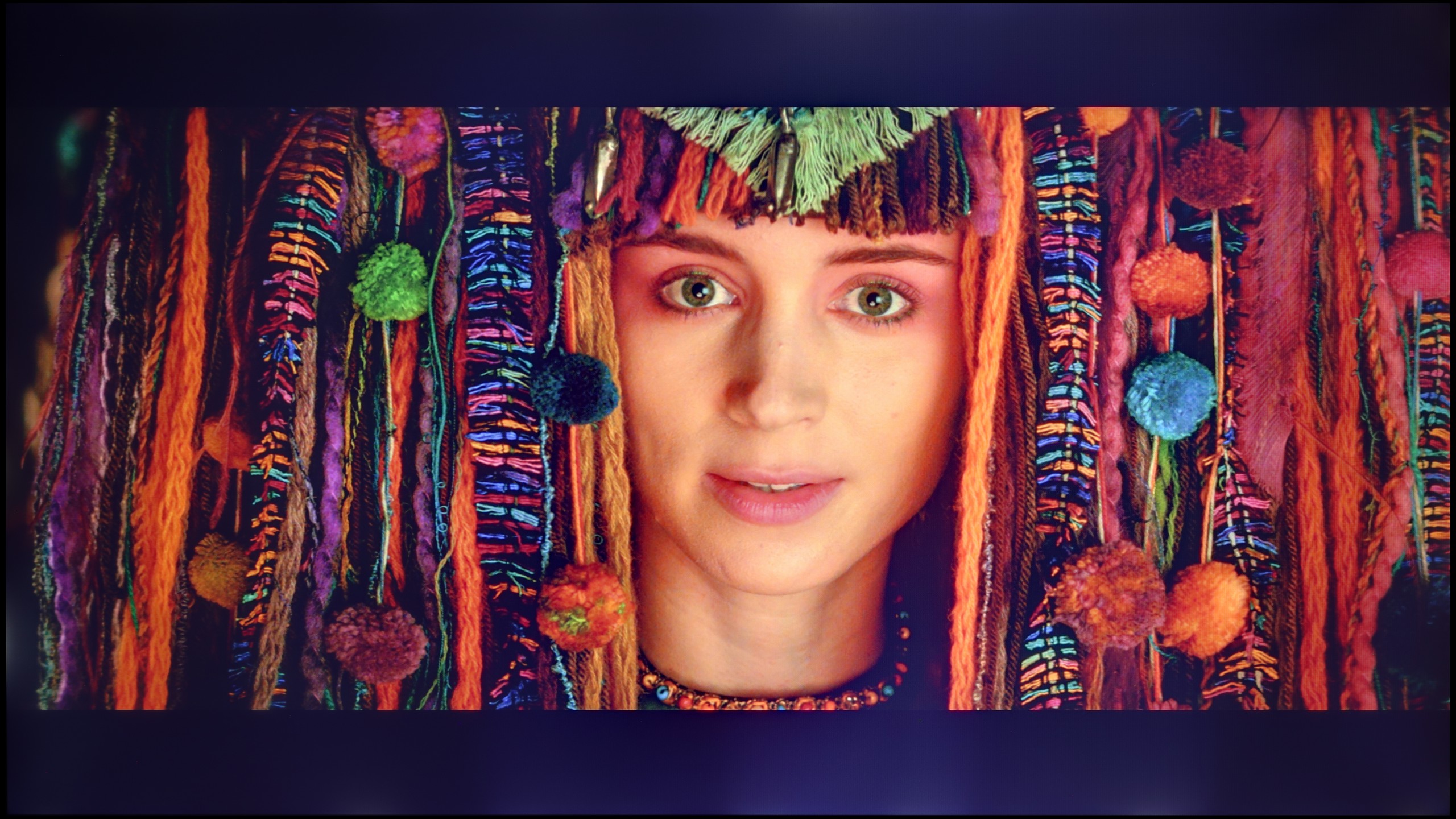
The biggest improvement we noticed was when calibrating the mode designed for everyday SDR content. We managed to smooth out the white balance in an acceptable way and tackle the problem of excessive brightening of small elements due to the gamma characteristic. As a result, the image gained consistency and naturalness that was lacking in the factory settings. After such correction, we can confidently state that for everyday television content, programs, or materials from YouTube, the LG UA7500 performs really well – especially after professional calibration. The situation is somewhat different for HDR content. Here, calibration allowed us to tame the white balance and slightly improve brightness management, but the limitations of the design are immediately apparent. The lack of additional filters to broaden the color palette makes the most vibrant colors appear flat, and the image lacks the intensity we would expect from good HDR. So, in SDR, the UA7500 performs quite well, but in HDR – despite corrections – it remains far behind, and this is a feature one has to come to terms with when choosing this television.
What was saved in the QNED86A6A is undoubtedly the colors. After calibration, the white balance was set with great precision, resulting in deviations on the Colour Checker palette mostly not exceeding the threshold of visibility for the human eye. In other words – the colors finally looked natural, without strange yellow or orange tones that previously ruined the experience. Unfortunately, even the best calibration cannot bypass design limitations. The already mentioned very modest number of local dimming zones and their unfortunate placement made the analysis of the EOTF curve in films still show clear over-brightening of scenes. The image tended to flatten, lacking cinematic depth. Fortunately, this effect is not as noticeable in older productions or SDR content. There, calibration really does its job and allows taming the QNED in such a way that the image can be pleasing. However, the specifics of this design – especially the contrast issues – cannot be entirely overcome.
Smoothness of tonal transitions
8.2/10
8.9/10
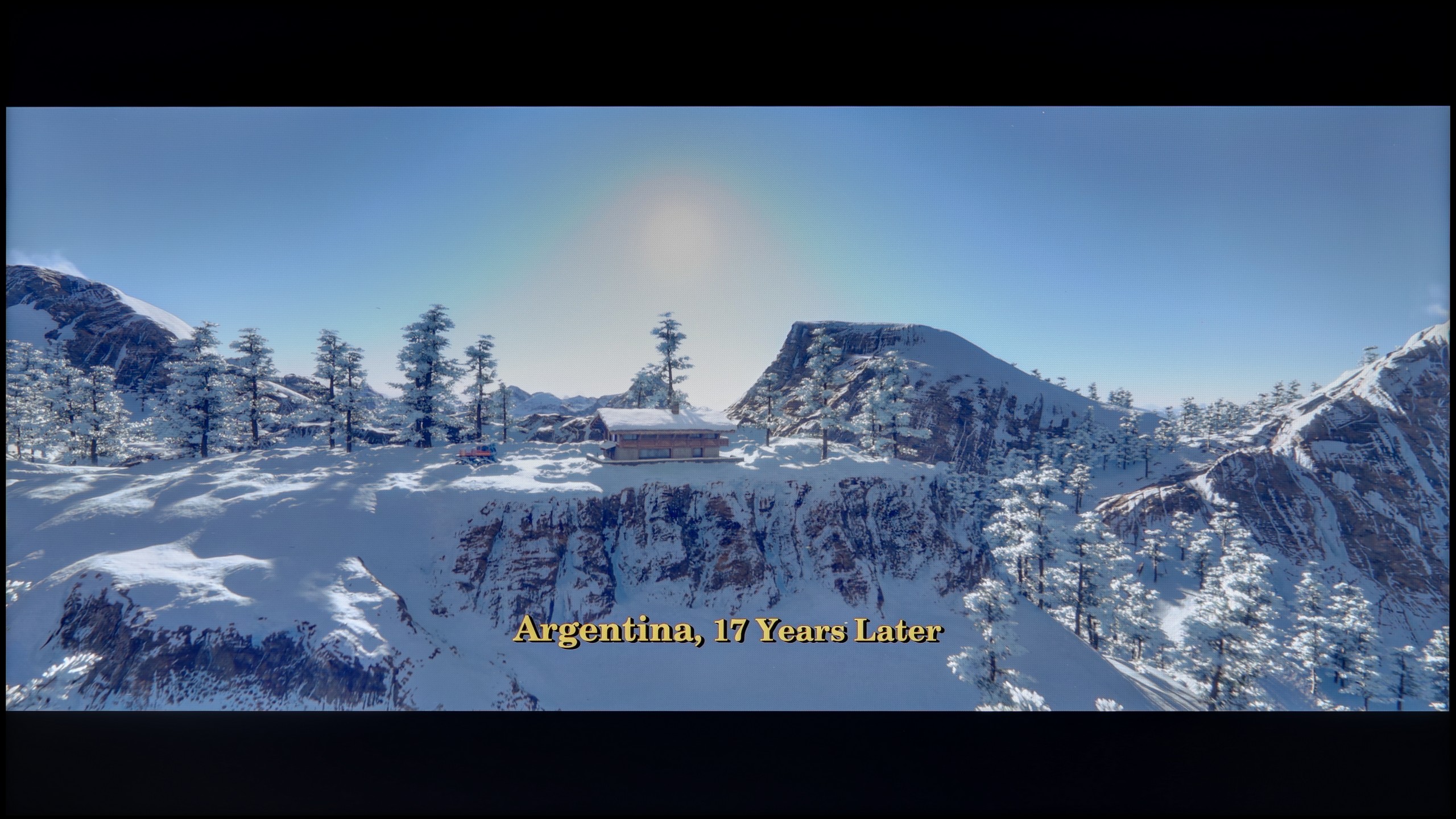
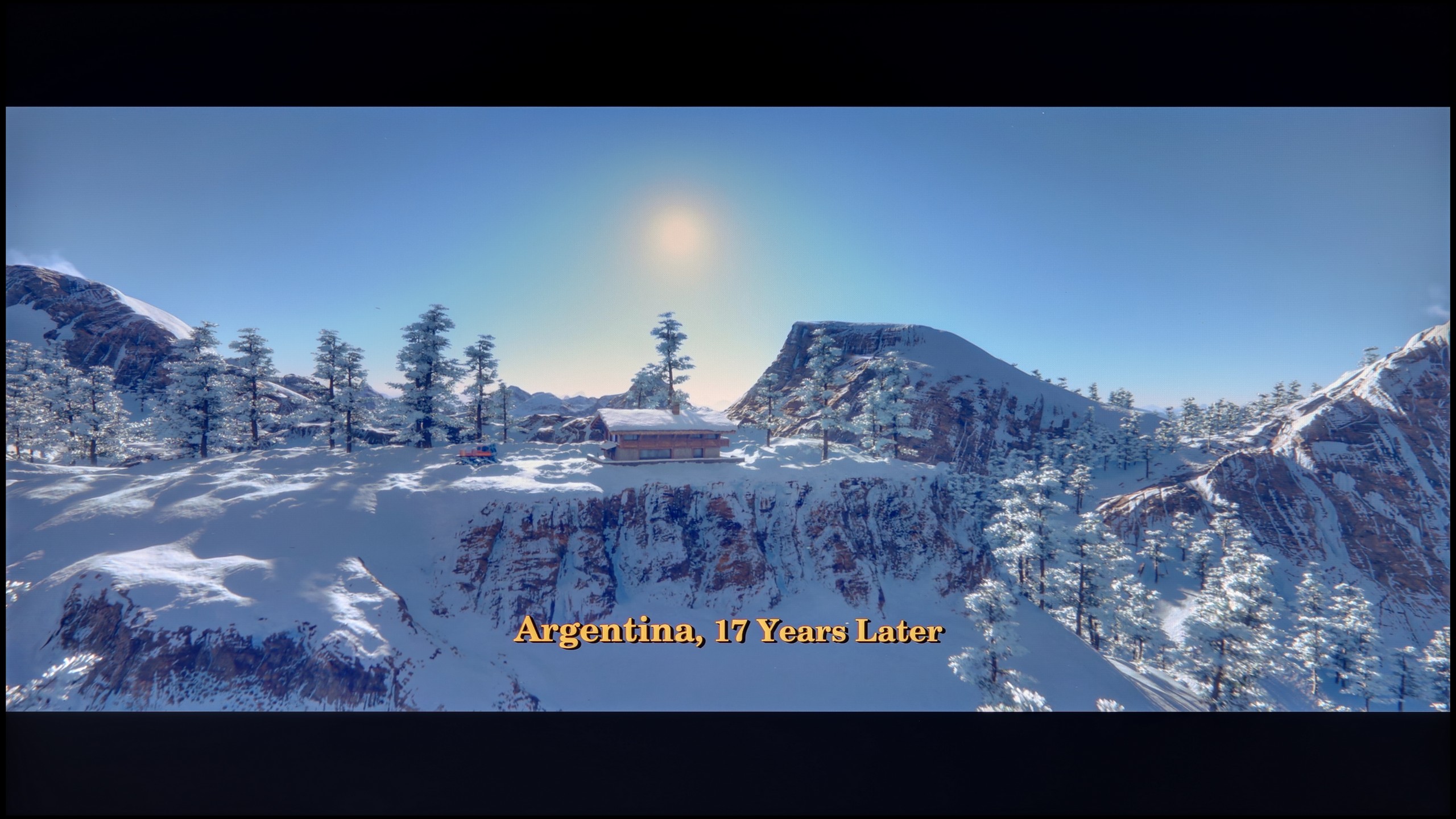
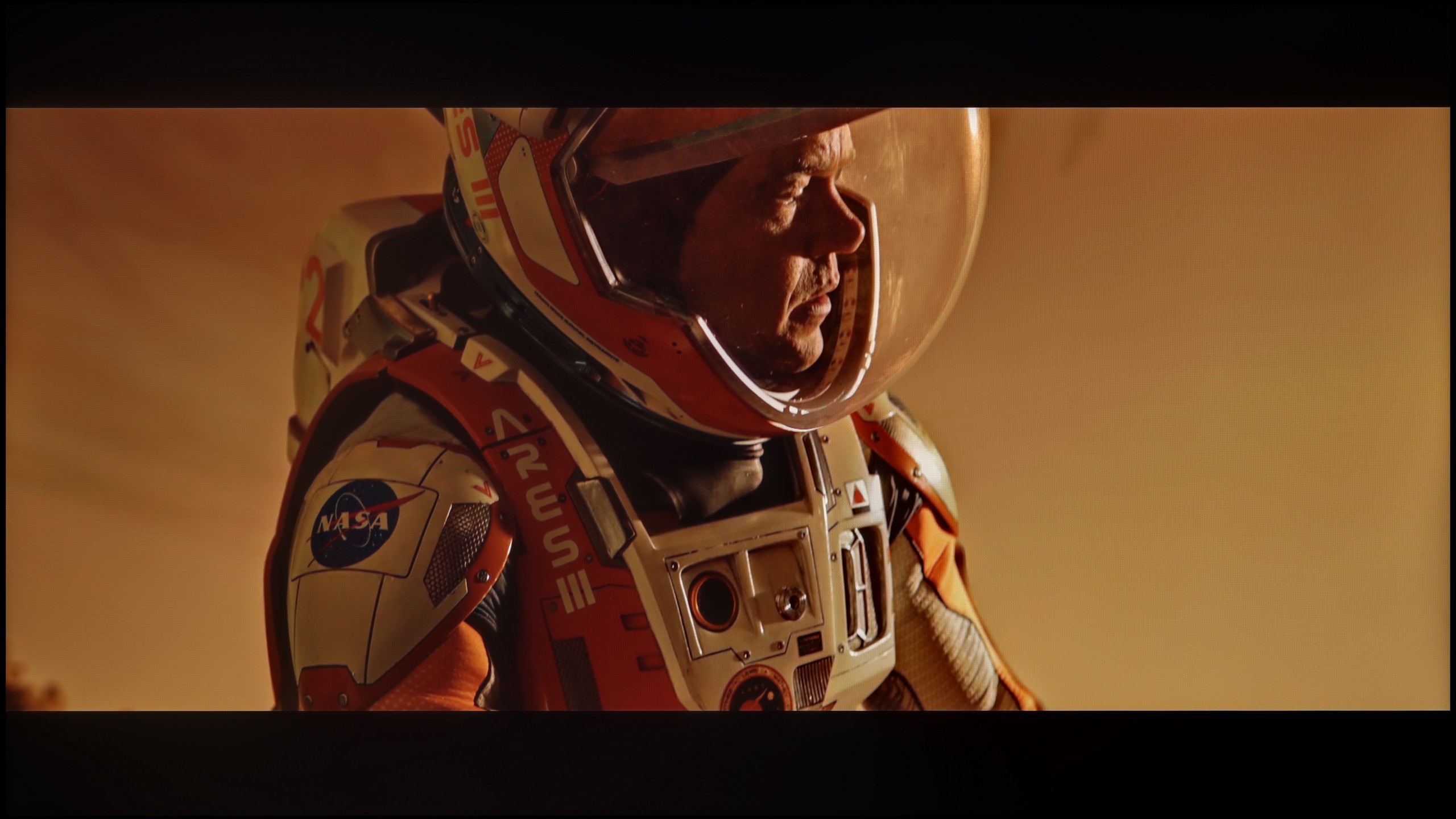
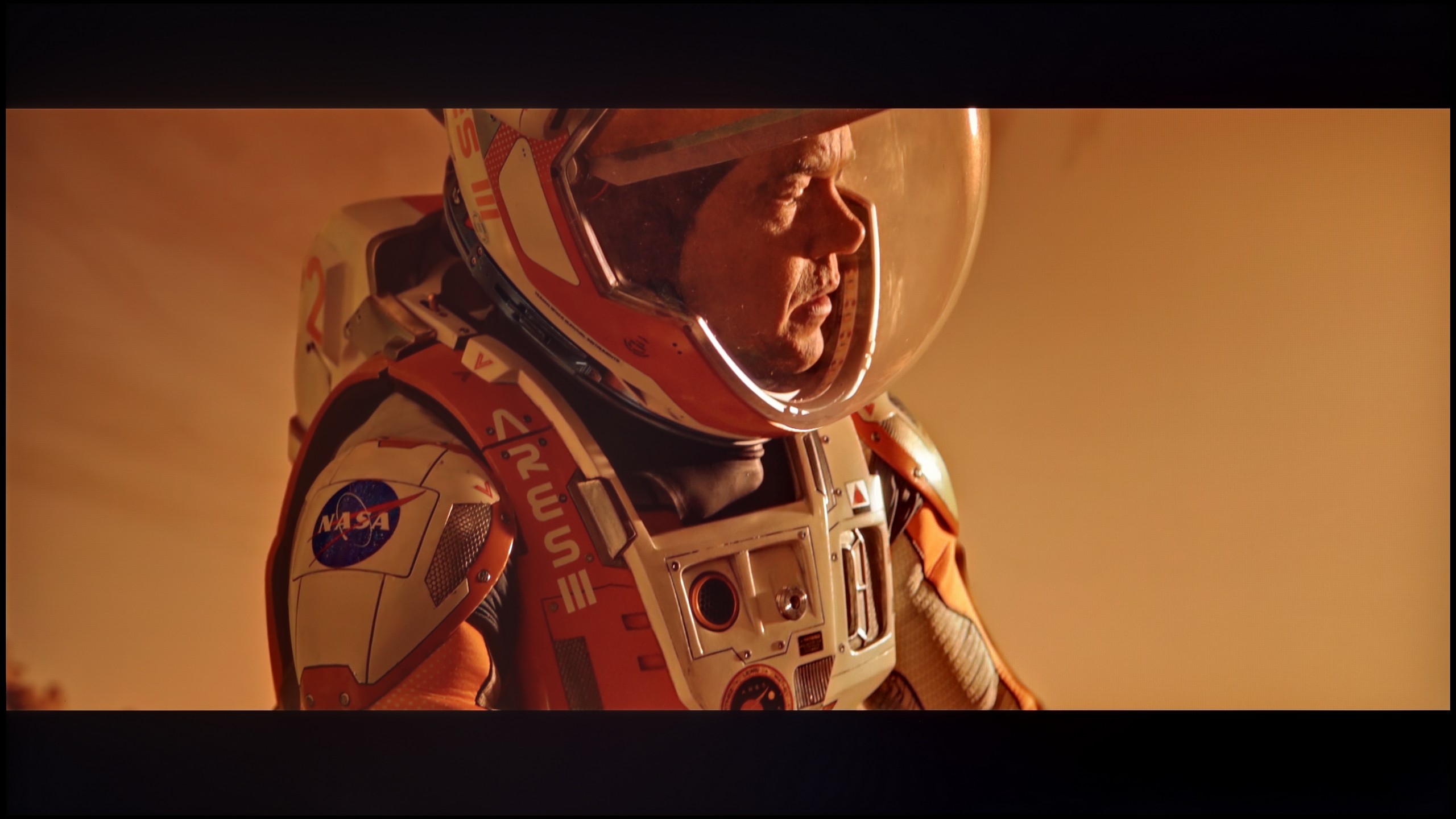
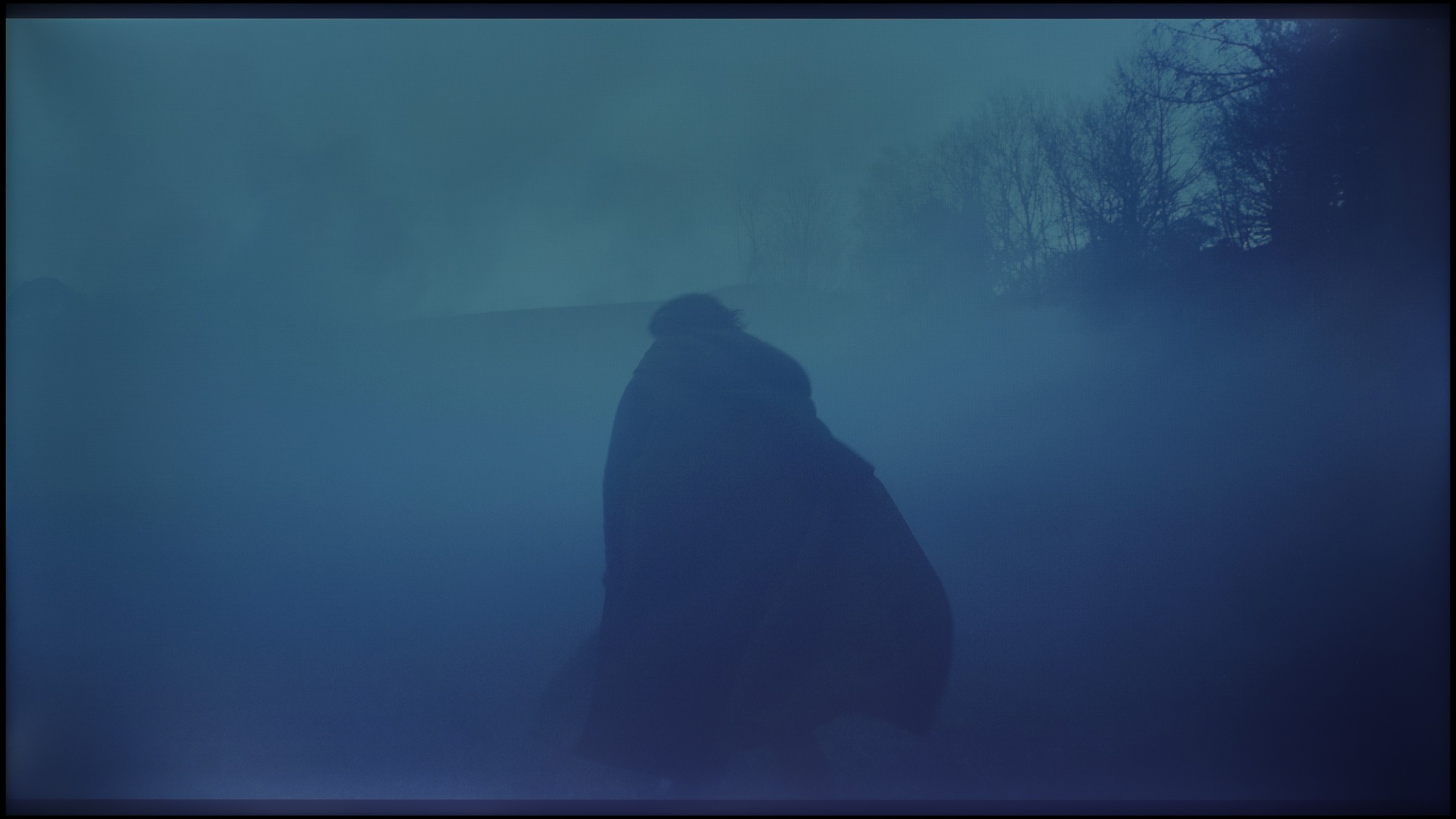
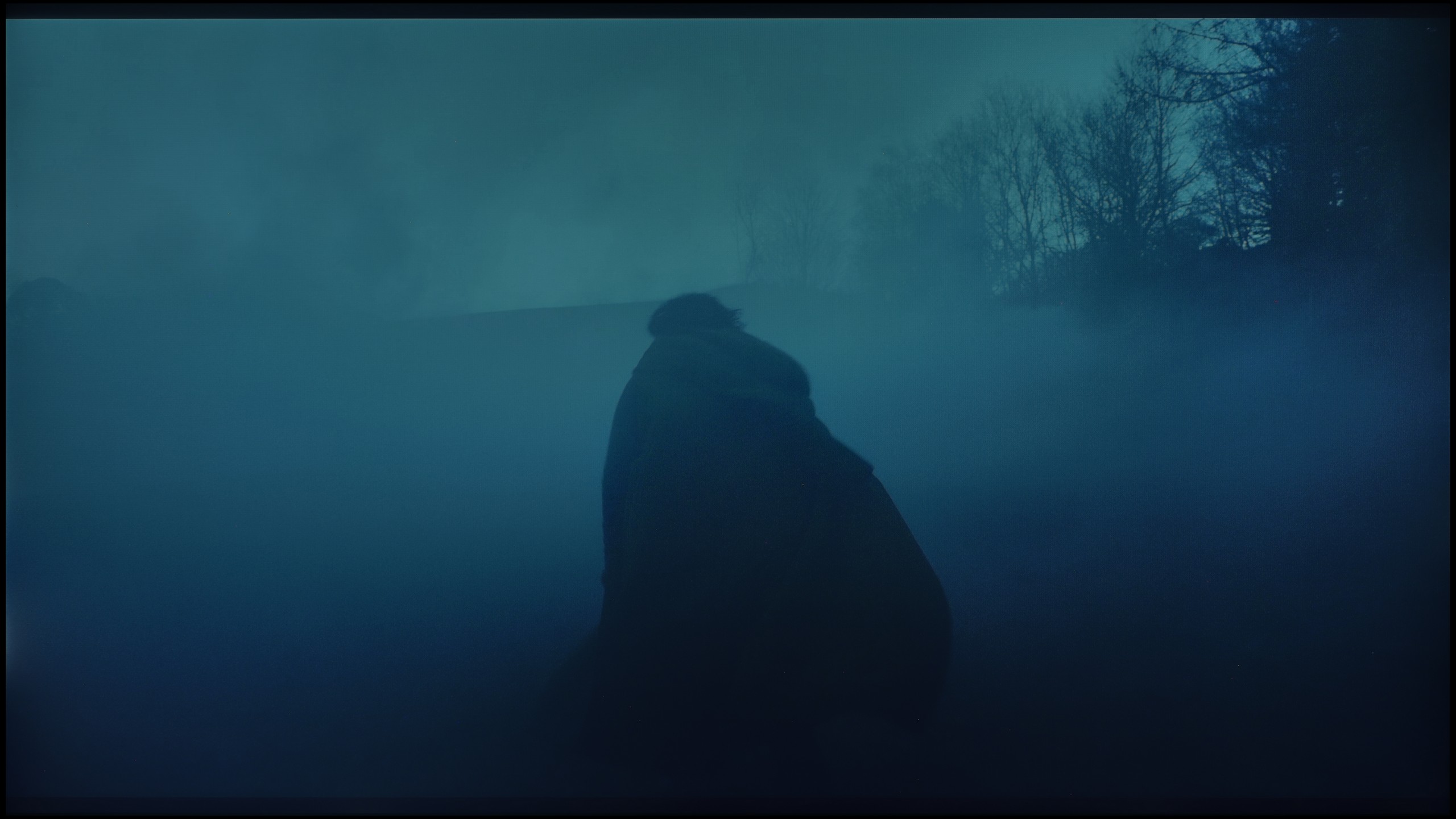
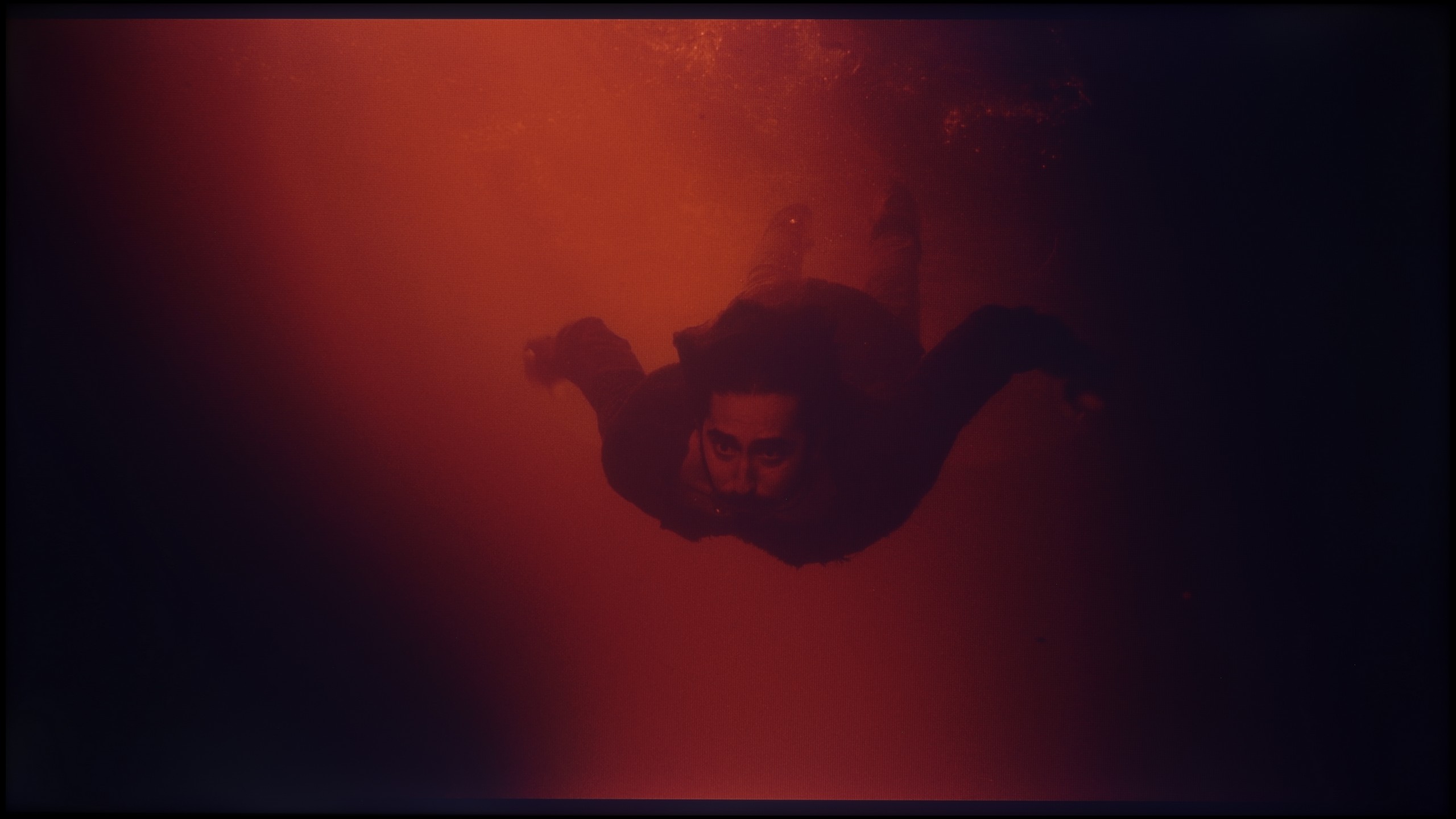
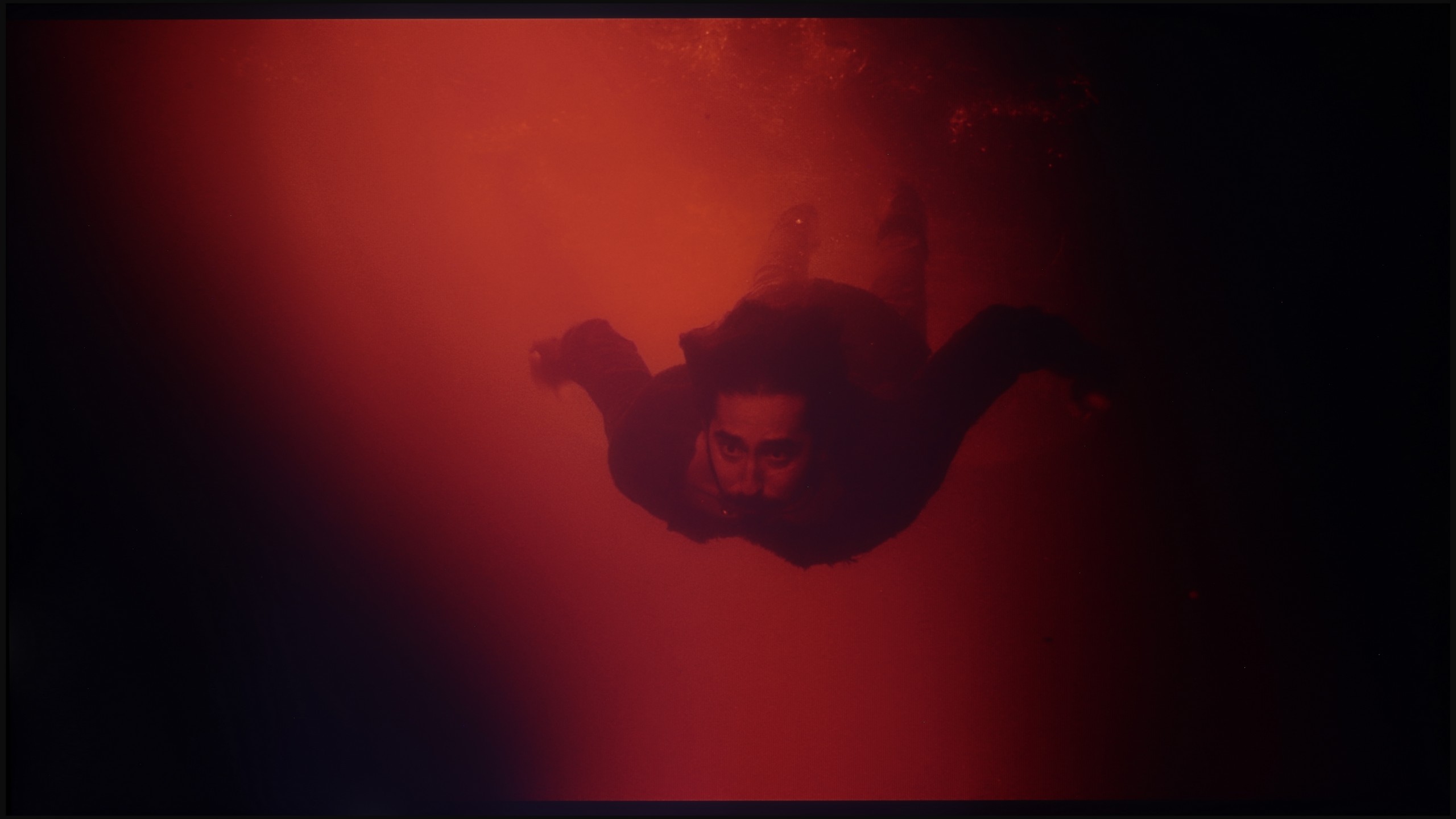




In the version with an IPS panel, one can also speak of decent fluidity – in most scenes, color transitions were smooth and few would notice them during everyday viewing. However, it should be noted that compared to the VA variant, the image seemed more flat, especially in darker areas, where the lower contrast did not allow for as many details to emerge. Nevertheless, color transitions still looked correct and did not pose a significant problem in practice.
The blending of colors is one of the stronger points of the QNED86A. In everyday viewing, the image appears really smooth, without noticeable "steps" or sudden transitions between colors. The television handles color blending quite naturally, so with most materials, it's hard to spot issues with gradation. Any imperfections only appear in extreme conditions – for example, in the darkest scenes of movies, where even much more expensive televisions can have problems. There, you might notice slight banding or characteristic stripes, but these are marginal situations that shouldn't interfere with normal usage. Overall, the QNED86A performs well in this category and has nothing to be ashamed of compared to the competition.
Image scaling and smoothness of tonal transitions
5/10
7.8/10
Smooth transition function
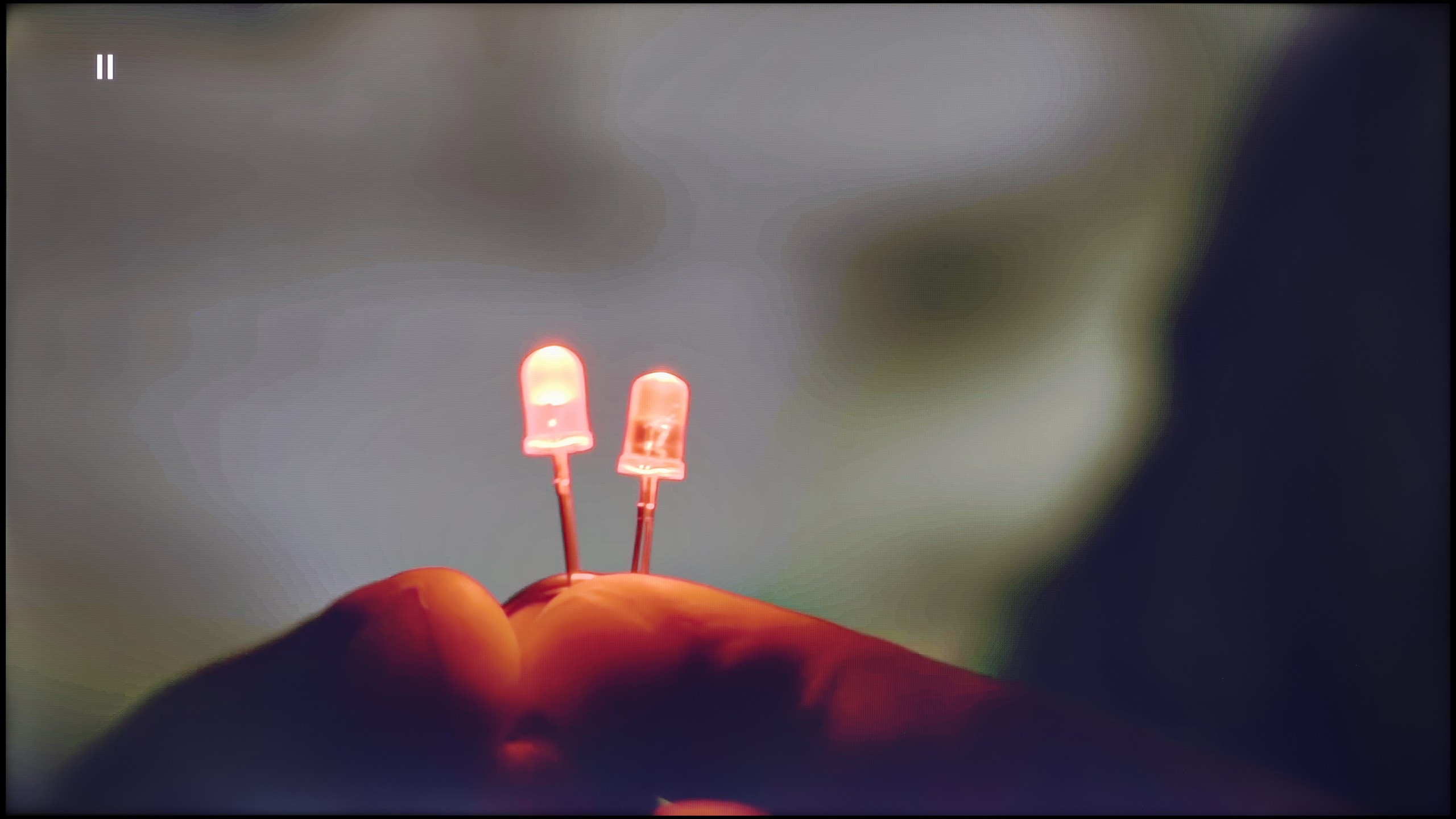
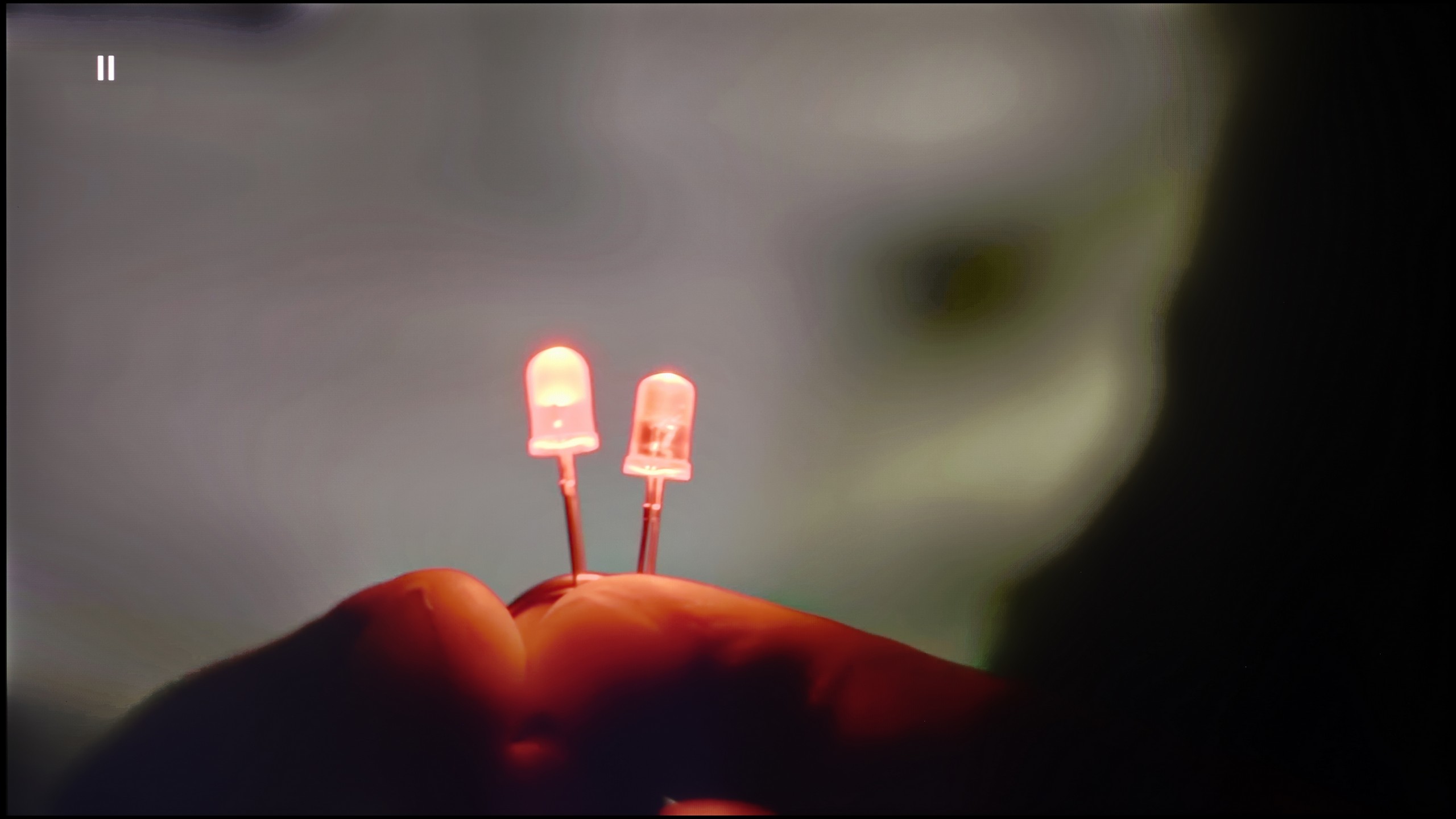
Image without overscan on the SD signal
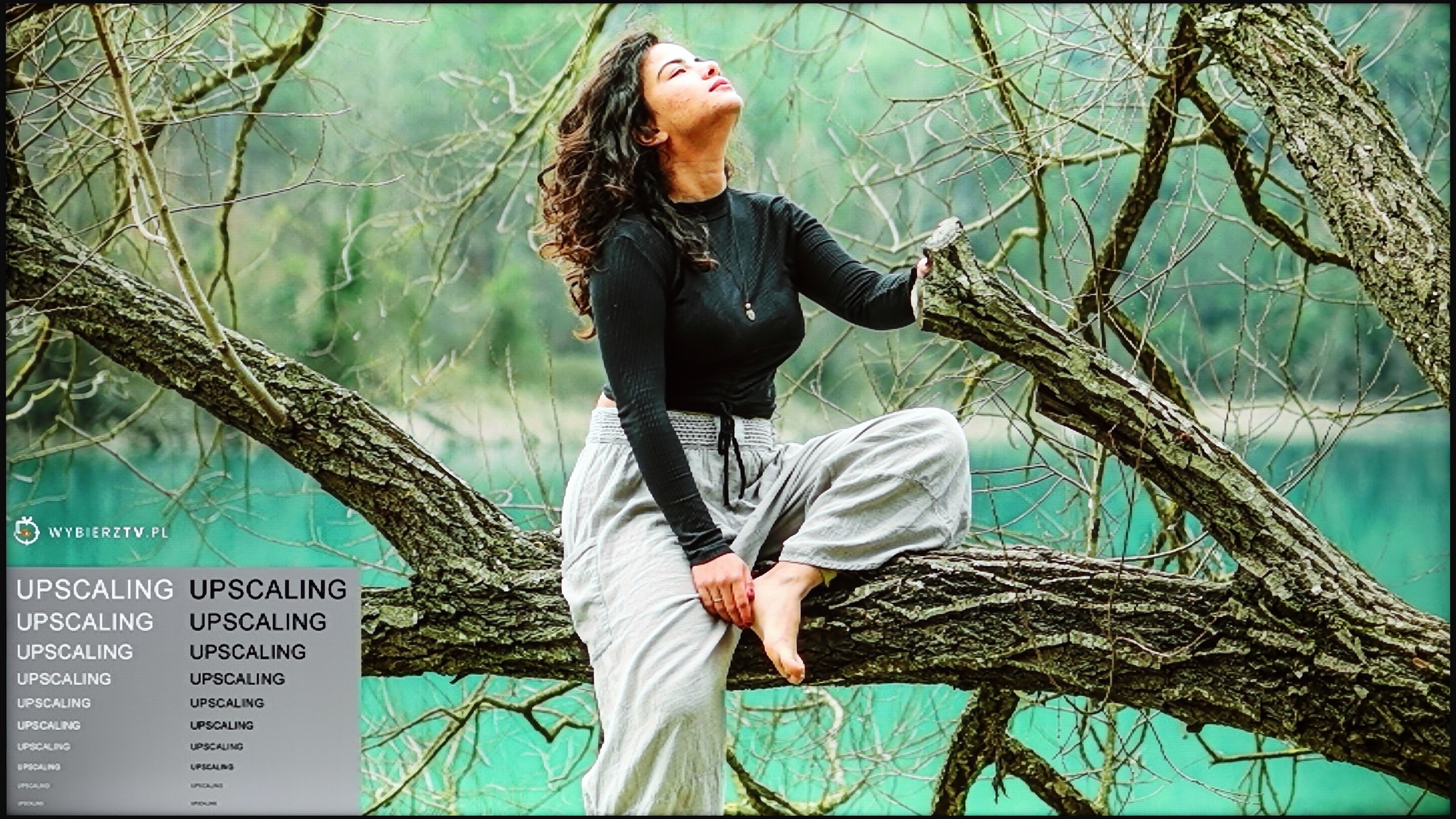
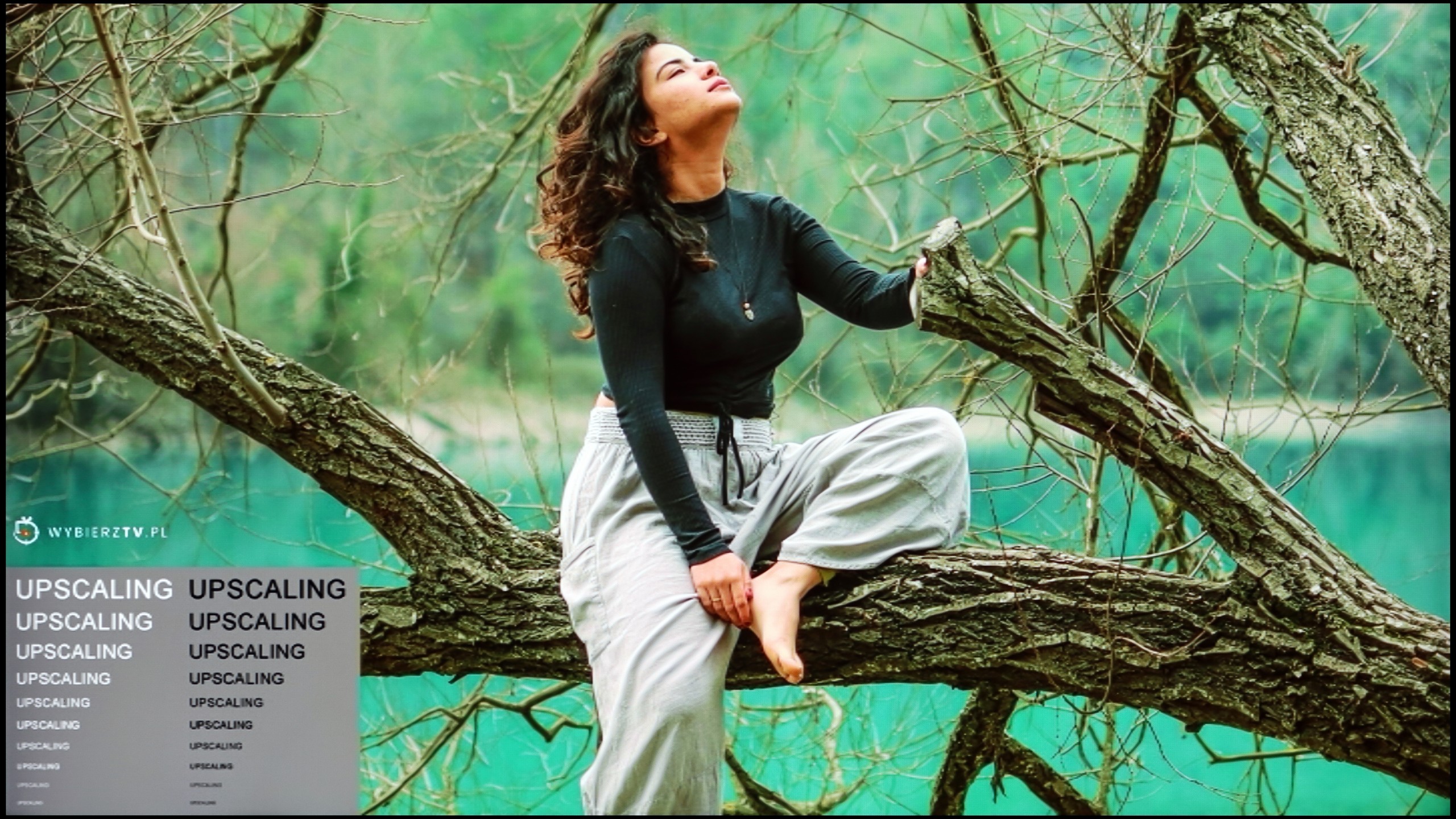
The version with the IPS matrix performed significantly worse here. Image scaling was uneven – this was particularly noticeable in lower-quality materials, where edges became jagged and the image looked less detailed. At times, there was also a sense of slight blurriness that detracted from sharpness and made the overall presentation seem less polished than in the VA version. The tonal smoothing function turned out to be a lifesaver. At the medium setting, it worked very well – it didn't ruin the image with excessive softening, while smoothing out colors in such a way that everyday content gained consistency. The difference was especially visible with television programs or streaming materials of poorer compression quality, where the television with the function enabled presented itself much better. This is one of those features that is worth keeping active because it significantly enhances the reception of everyday materials.
If someone is worried about possible "steps" when connecting colors, there is a simple way in the QNED86A. Just turn on the feature called Smooth Gradation and set it to medium level. Then the TV really smooths out all those unwanted transitions – especially in older productions – and does it in such a way that the film grain doesn't disappear, nor do strange artifacts appear. In other words, you can use it without worry.
The upscaling itself also turns out quite well. Of course, there are no miracles here – with lower quality sources, you can observe characteristic jaggedness. Fortunately, there is a sharpness slider in the menu, and if someone prefers a more "softer" image, it can be quickly adjusted to their taste.
Blur and motion smoothness
4.5/10
7.8/10
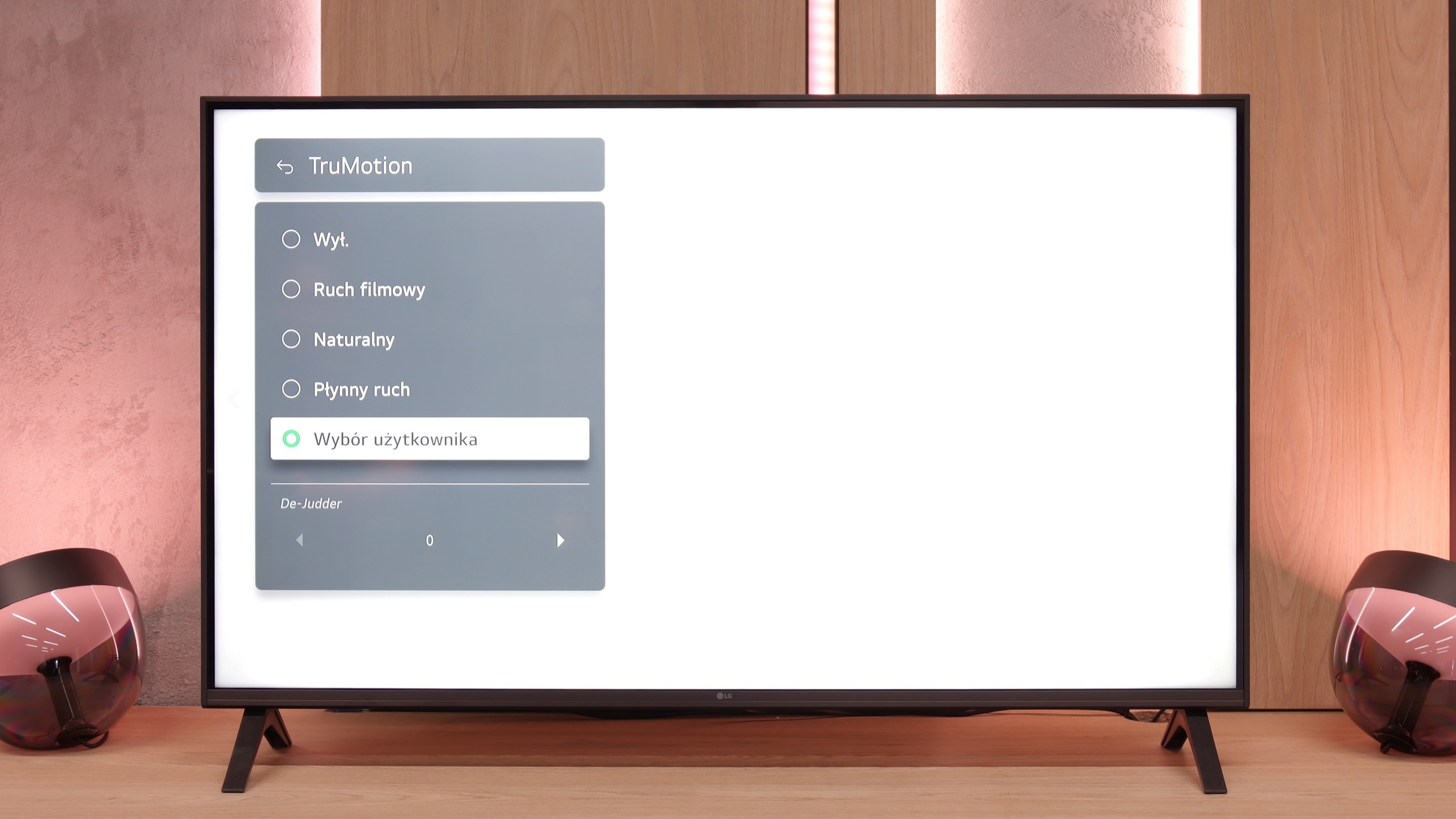
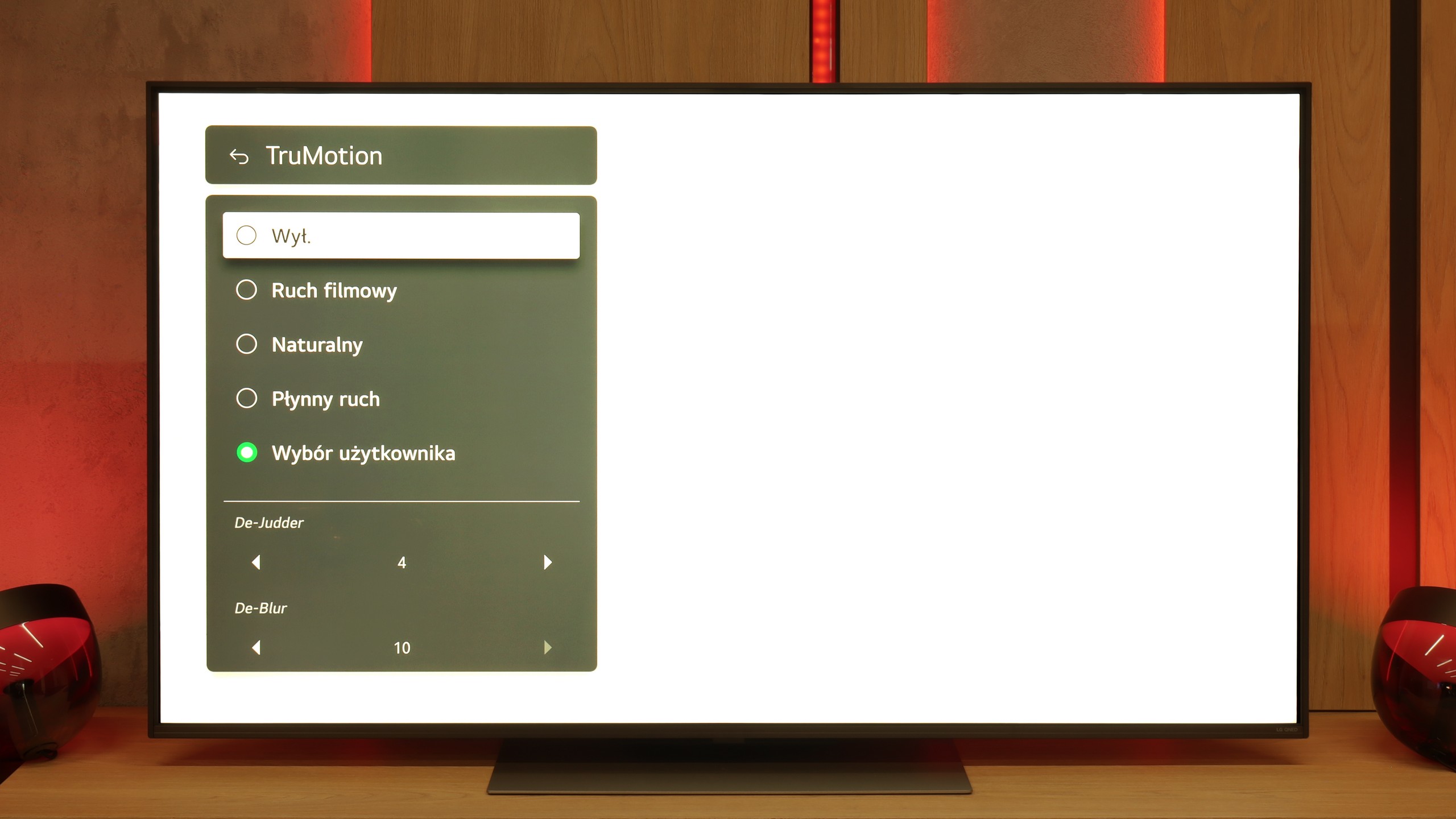
Blur (native resolution, maximum refresh rate):
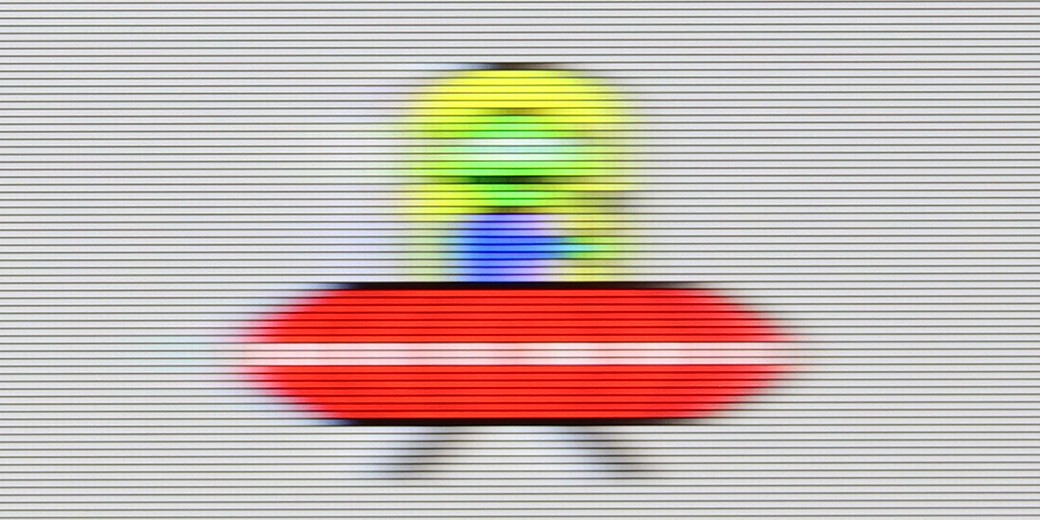
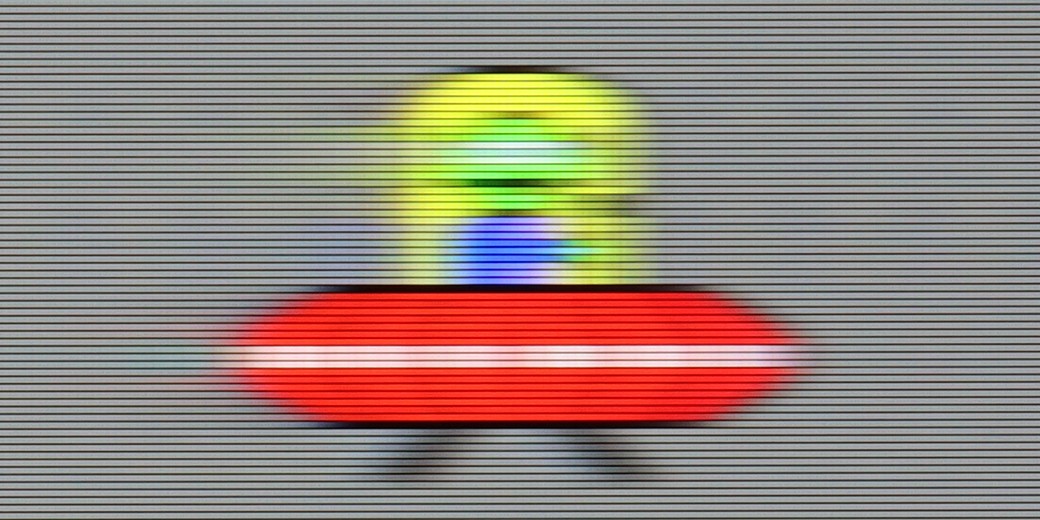
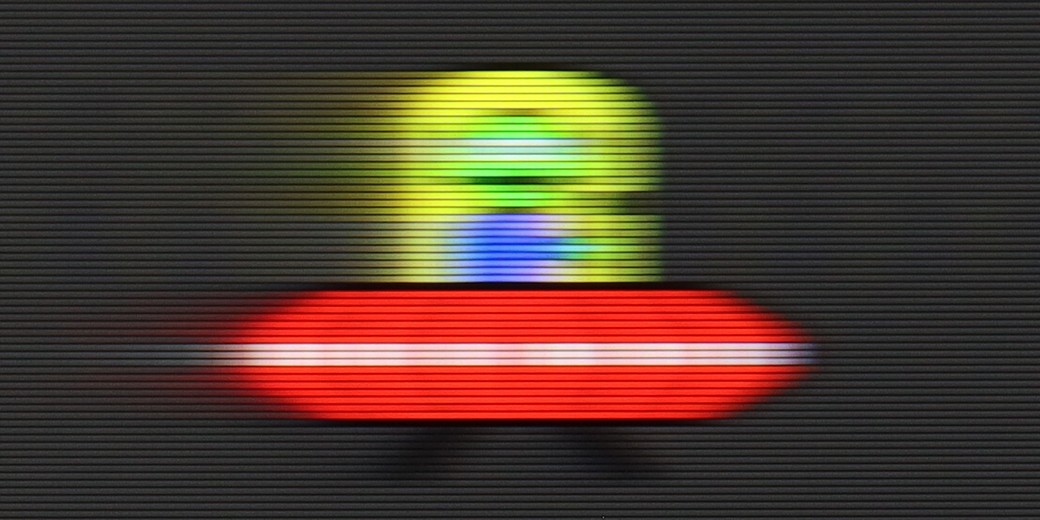
Blur (BFI function enabled):
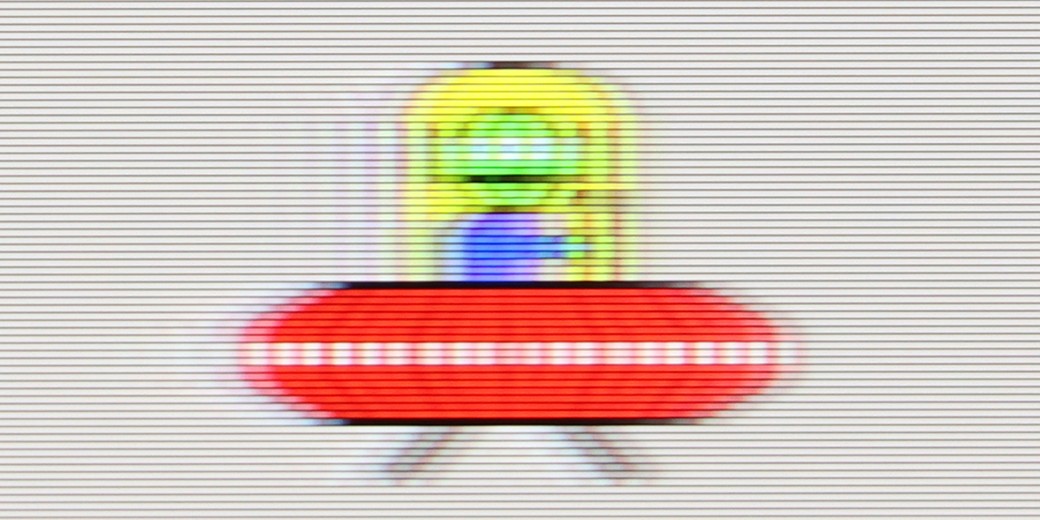
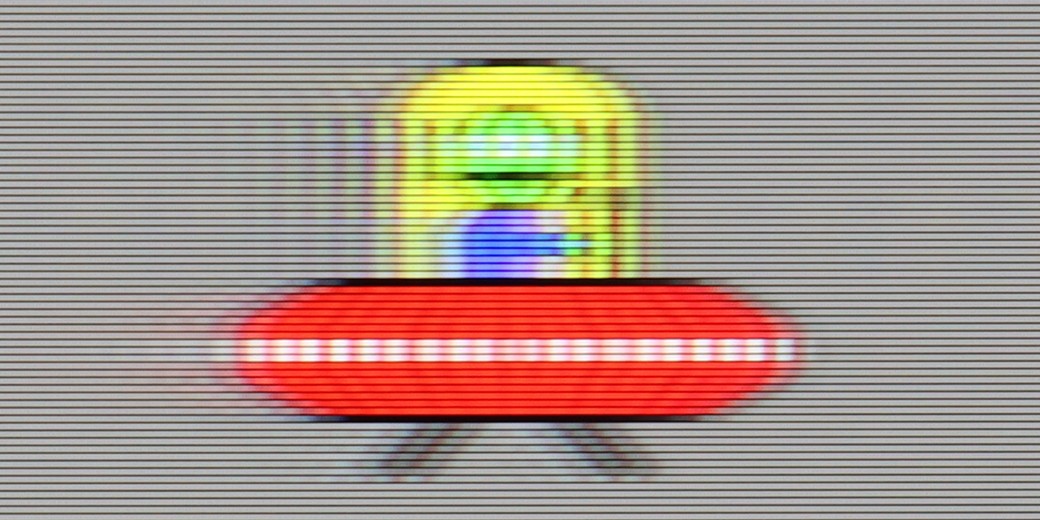
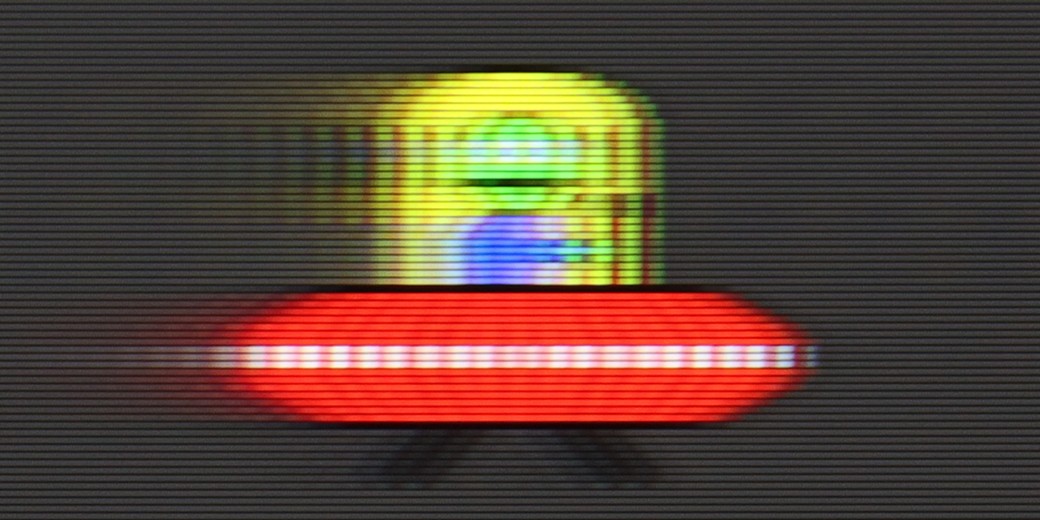
LG UA7500 is a television with a 60 Hz panel, so it's difficult to expect any excitement in this category. It's more of a screen intended for everyday content or an evening movie session rather than for following dynamic sporting events or playing action games. It's clear that the manufacturer designed this model specifically for that group of viewers – and in that regard, it works properly. We have access to the TruMotion feature, which is a motion smoother. It's simple, with just one slider, but it can make a noticeable difference. At lower settings, the picture looks more raw and cinematic, while at higher values, the motion becomes smoother and more pleasant to the eye.
The QNED86A is equipped with a 120 Hz refresh rate panel, so right from the start, it's safe to say that it's suitable for both sports and gaming. And indeed, this is true – the image looks smooth, and motion blur is not very noticeable. IPS panels have always had some issues with this, and you can sometimes notice slight blurring here as well, especially in very dynamic scenes, but it's not something that ruins watching a match or a fast-paced game. For movie and sports fans, LG has added the traditional TruMotion smoother. In the menu, we have two sliders – one for movies (De-Judder), the other for sports (De-Blur). The first adds missing frames and allows you to adjust the character of motion – from raw, cinematic to more fluid, "theatrical." The second enhances sharpness during dynamic actions, so it's worth turning it up a bit if you're watching a lot of sports.
Console compatibility and gaming features
6/10
9.8/10
- ALLM
- VRR
- VRR range48 - 60Hz48 - 120Hz
- Dolby Vision Game Mode
- Correct implementation of HGIG
- 1080p@120Hz
- 1440p@120Hz
- 4K@120Hz
- Game bar
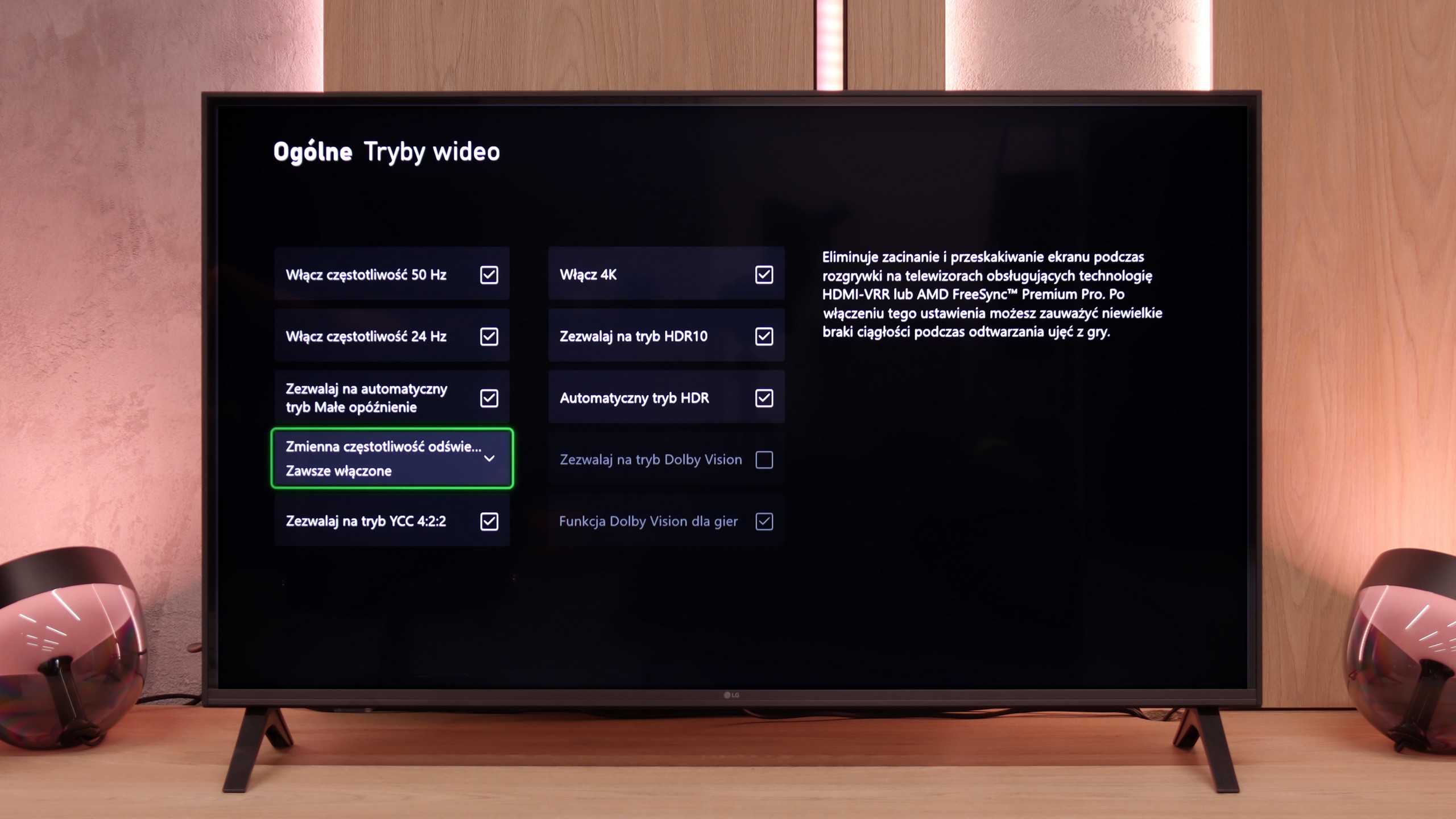
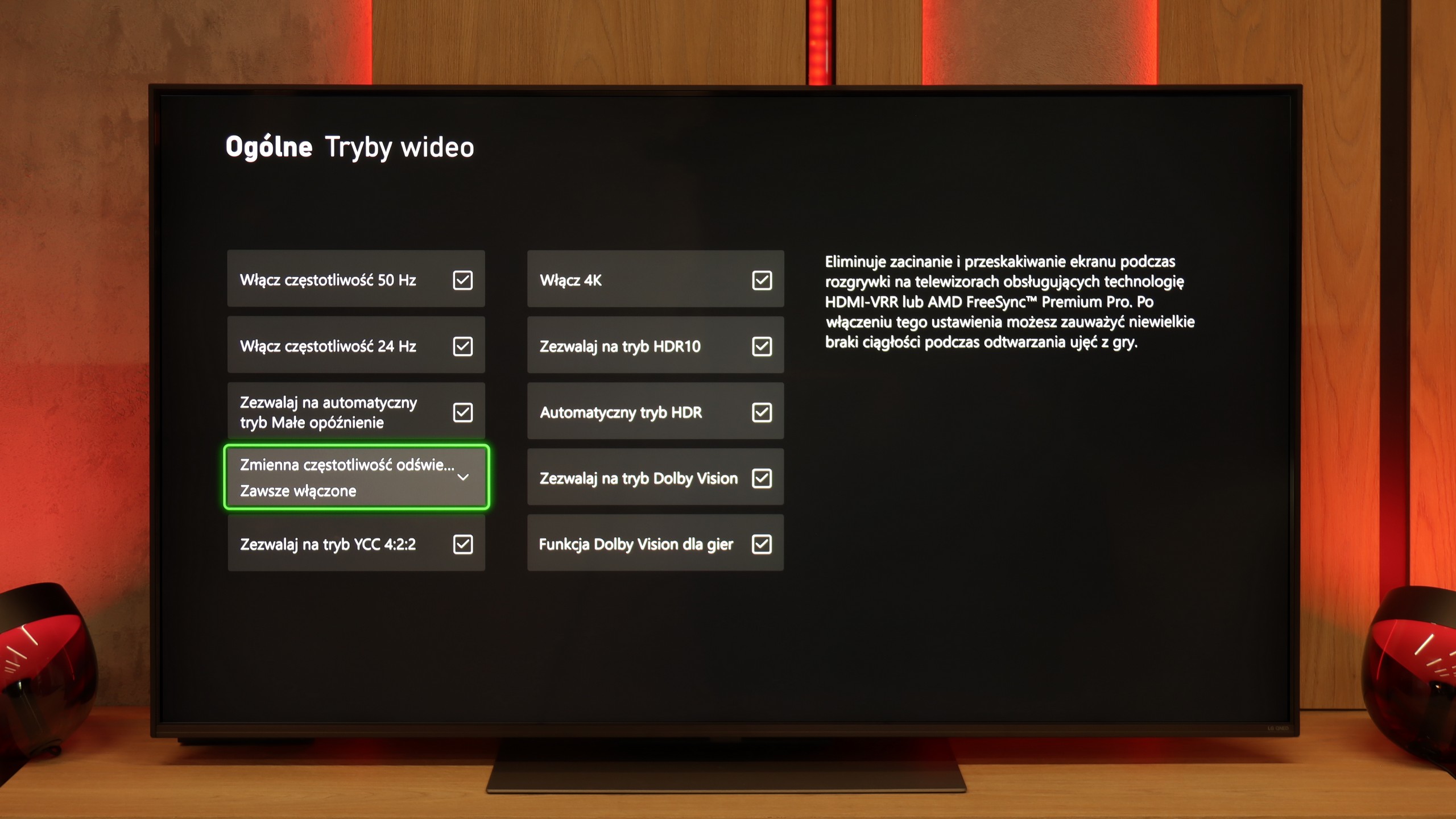
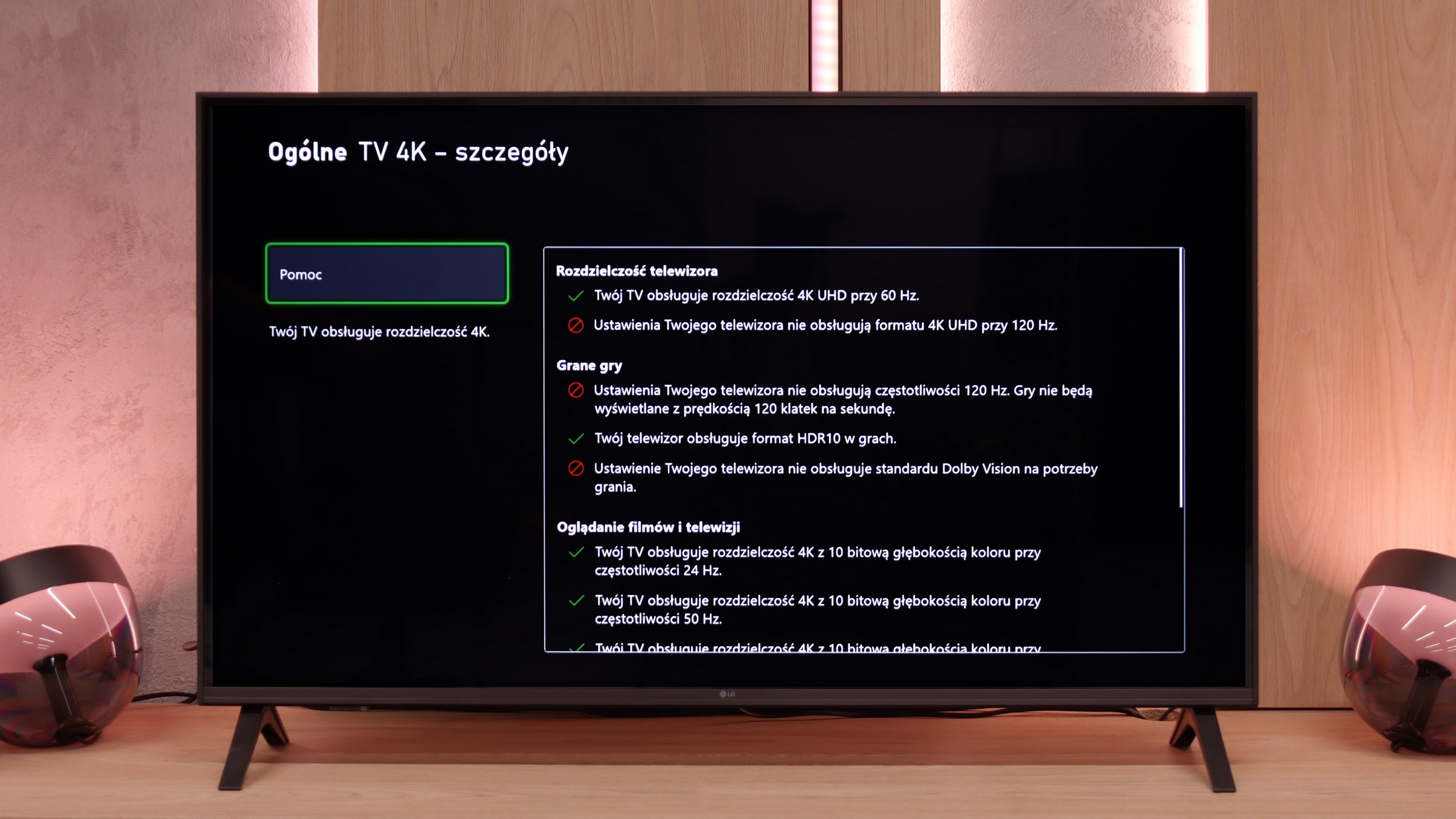
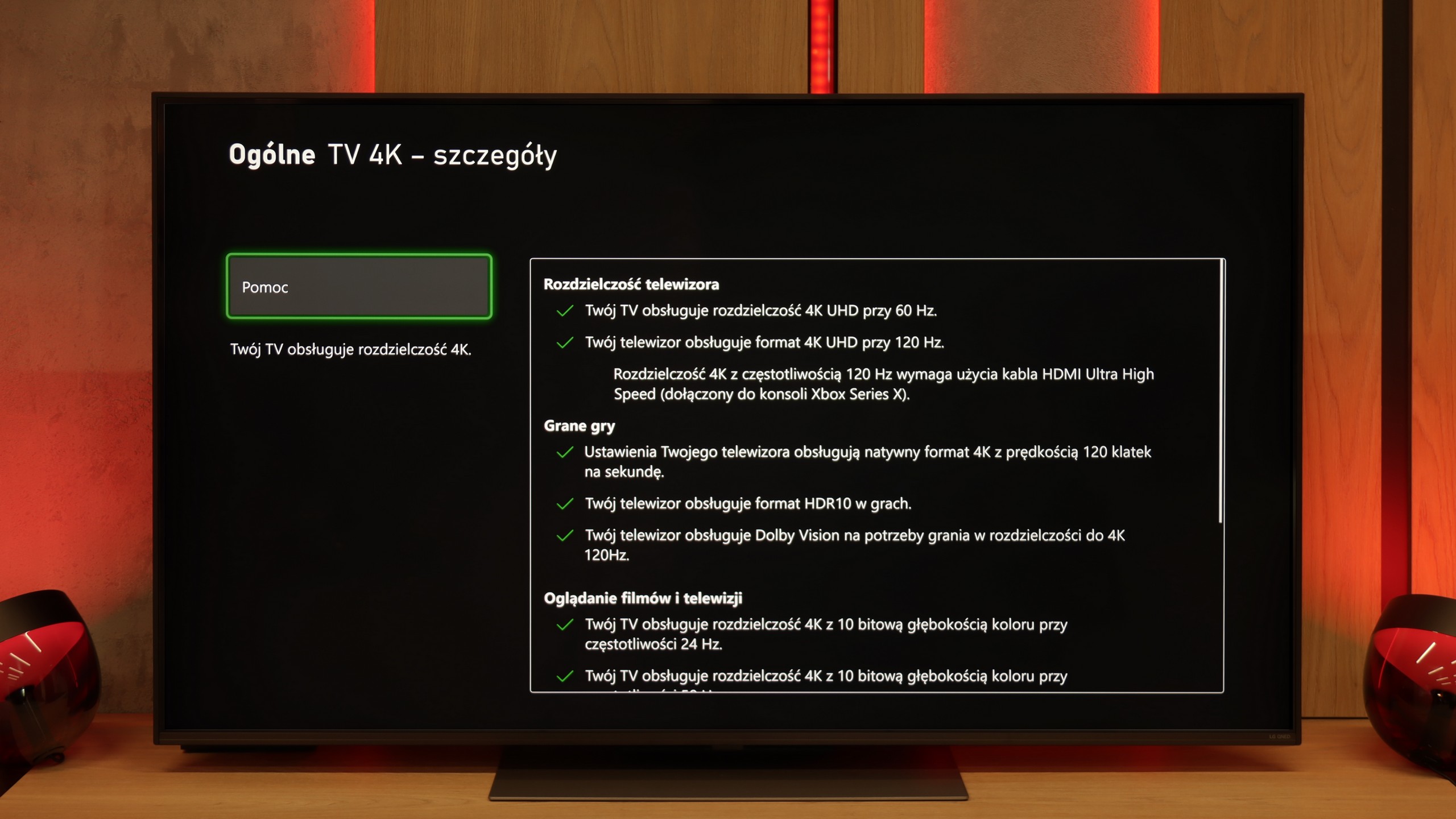
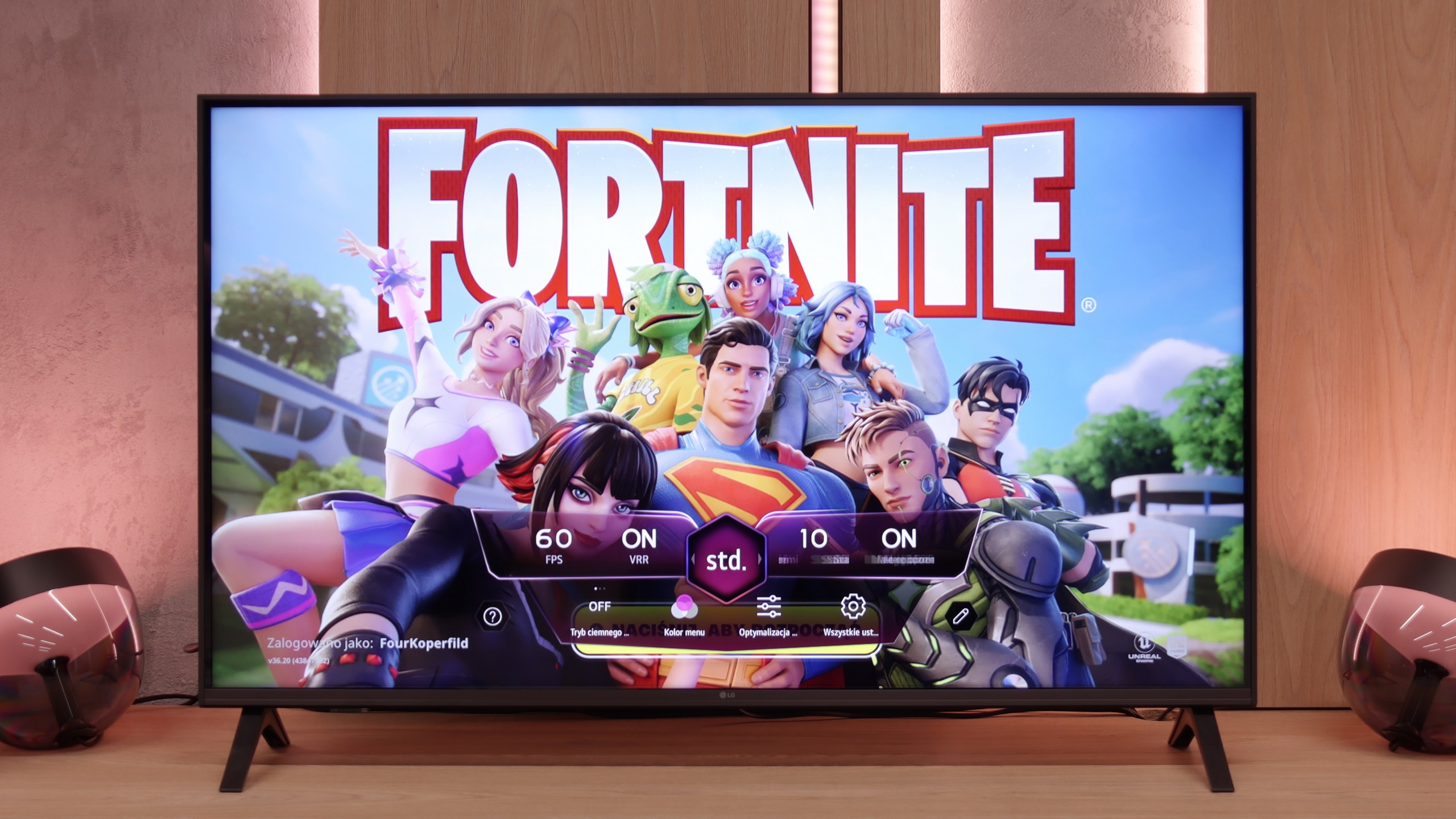
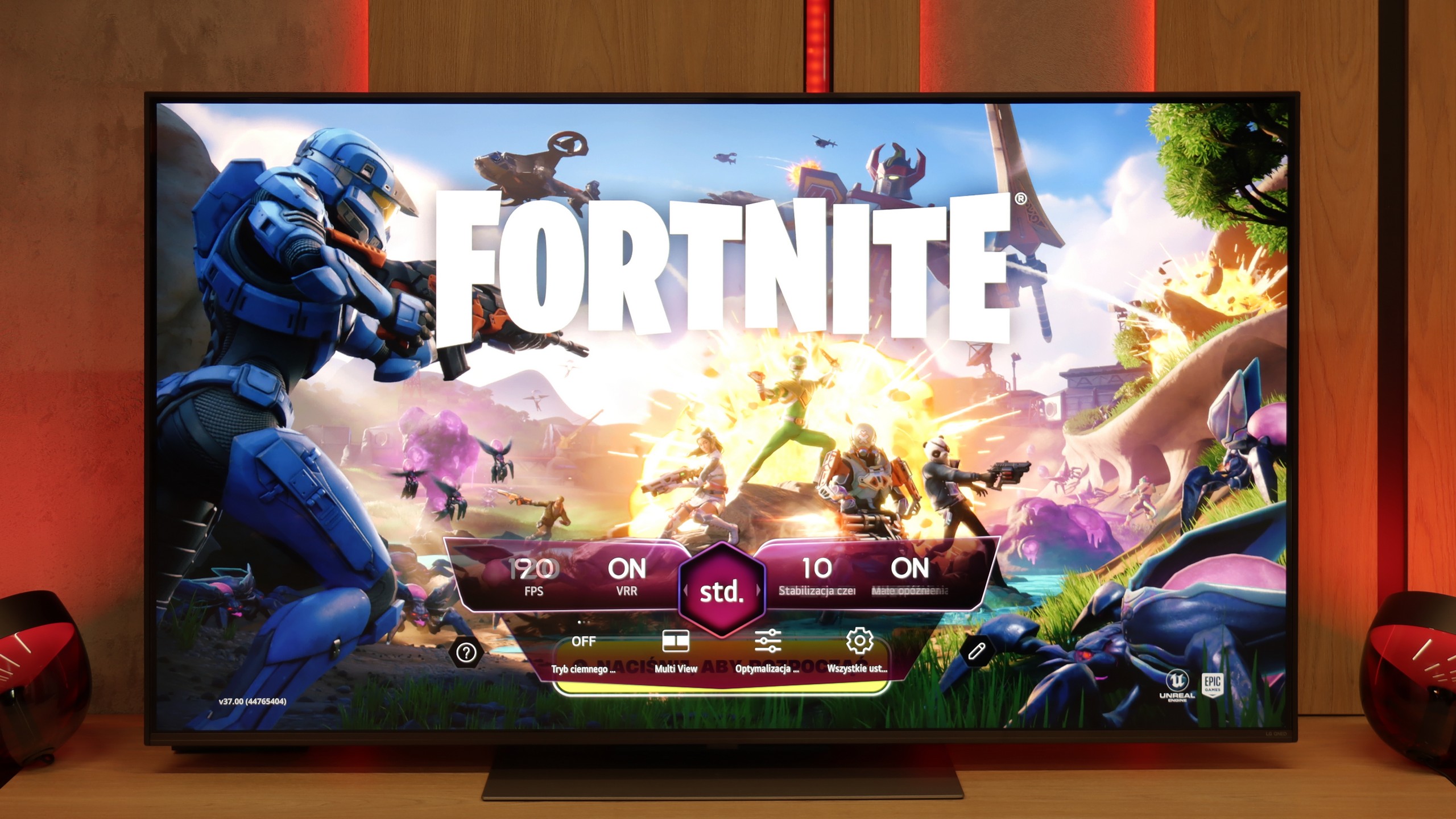
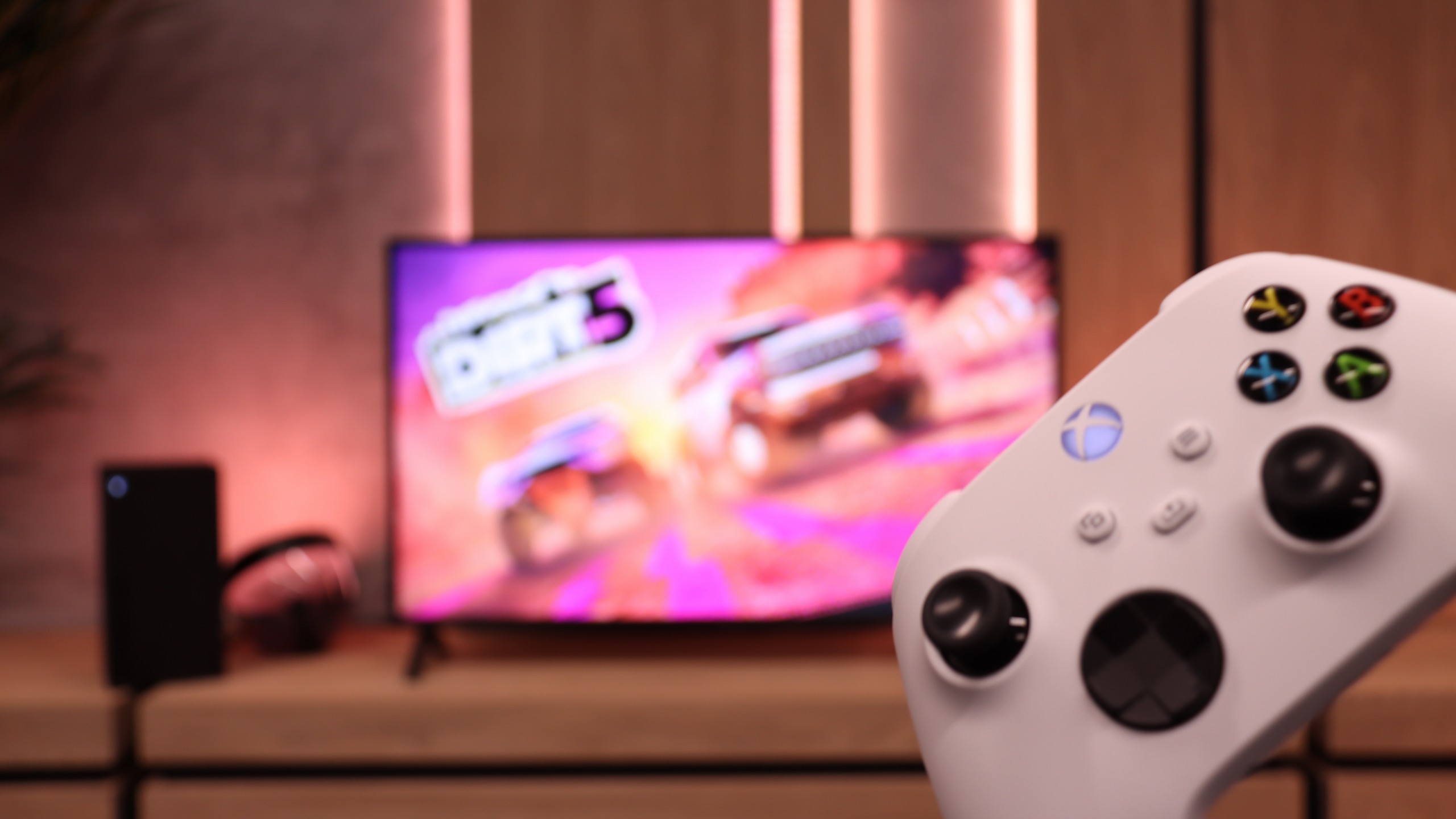
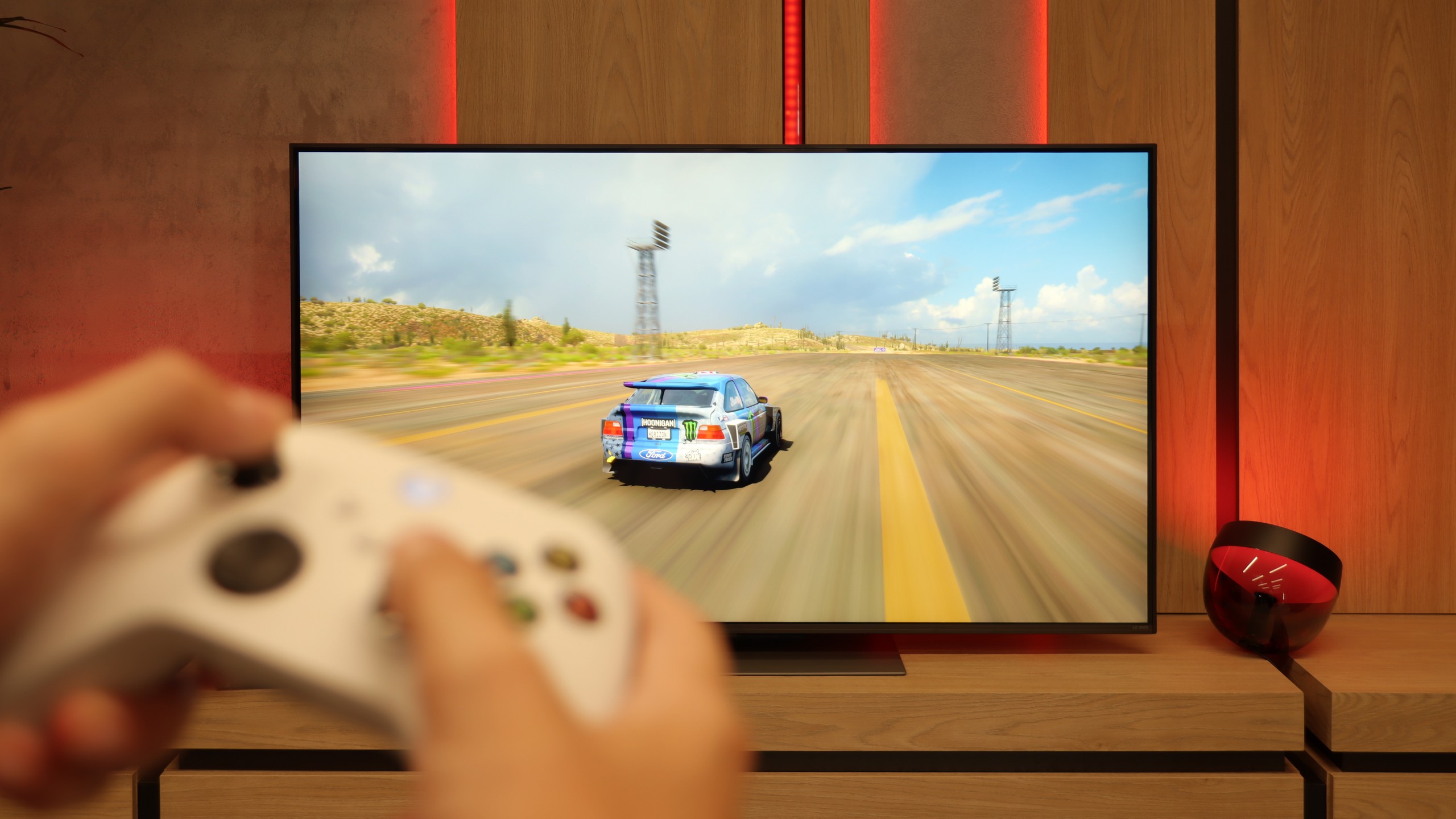
LG UA7500 is a television that can be confidently recommended for "casual" gamers. While it lacks a 120 Hz panel and HDMI 2.1 ports, making full use of the potential of modern consoles out of the question, the manufacturer has included a few additions that can enhance the gaming experience. Notably, the Game Bar deserves mention – a very nicely designed panel that allows quick access to and modification of the most important settings. From this panel, we have access to features such as ALLM mode (automatic switching to game mode) and frame synchronization, which is VRR. The range of VRR is limited – it operates from 48 to 60 Hz – but the mere presence of this feature in such an affordable television is impressive.
Additionally, it supports HGiG, which is a calibration mode for HDR specifically for gaming. This sounds good, but based on testing experience, we already know that in the case of the UA7500, this option doesn't make much sense. The television doesn't handle HDR very well, so paradoxically, we achieved better results with this feature turned off. This is another signal that the UA7500 is more of a screen for occasional gamers who value simplicity and comfort rather than for those looking for a complete experience from the latest consoles.
In terms of gaming, the LG QNED86A6A is a complete tool. It features four HDMI 2.1 ports with full bandwidth of 48 Gb/s, which means that whether you connect a PlayStation 5, Xbox Series X, or a powerful PC – everything will work at full 4K 120 Hz with support for all features. This is a big plus, as some competitors still have only two such ports, which can be problematic with a larger number of devices. It also has VRR, or variable refresh rate, which eliminates screen tearing, and ALLM, which automatically activates game mode when the console is turned on. There’s also Dolby Vision Gaming and a proper implementation of the HGiG format, so titles supporting these formats look more vivid and detailed. Added to all of this is the Game Optimizer – a kind of control center for the gamer. From this level, you can view image parameters in real-time, quickly change modes, activate additional features, or adjust image settings to your preferences. The LG QNED86A6A essentially has everything one can expect from a modern gaming television.
Input lag
10/10
9.9/10
SDR
HDR
Dolby Vision
A delay of less than 10 ms is a result that more expensive models could easily envy. This allows games to run exceptionally responsively, with every action on the controller immediately visible on the screen. This is one of the strongest features of this television, especially for those who enjoy firing up a console from time to time.
There's really nothing to complain about here. The QNED86A6A achieves excellent results – around 5 ms for 120 Hz content and about 15 ms for 60 Hz. These are values that will easily satisfy both console gamers and those who connect a PC to the TV. The response to movements is instantaneous, so you can forget about delays between the image and the action on the controller.
Compatibility with PC
6/10
8/10
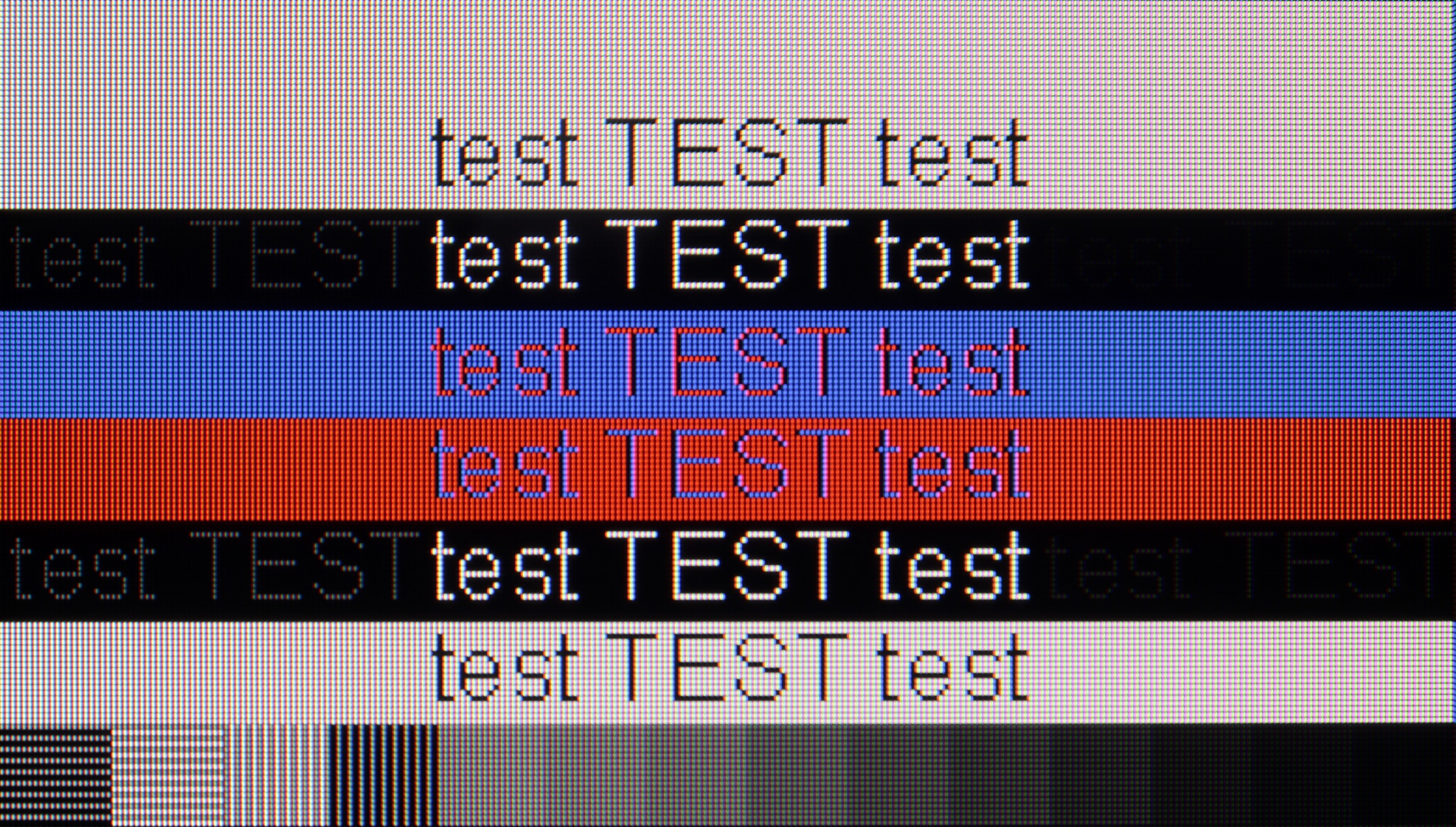
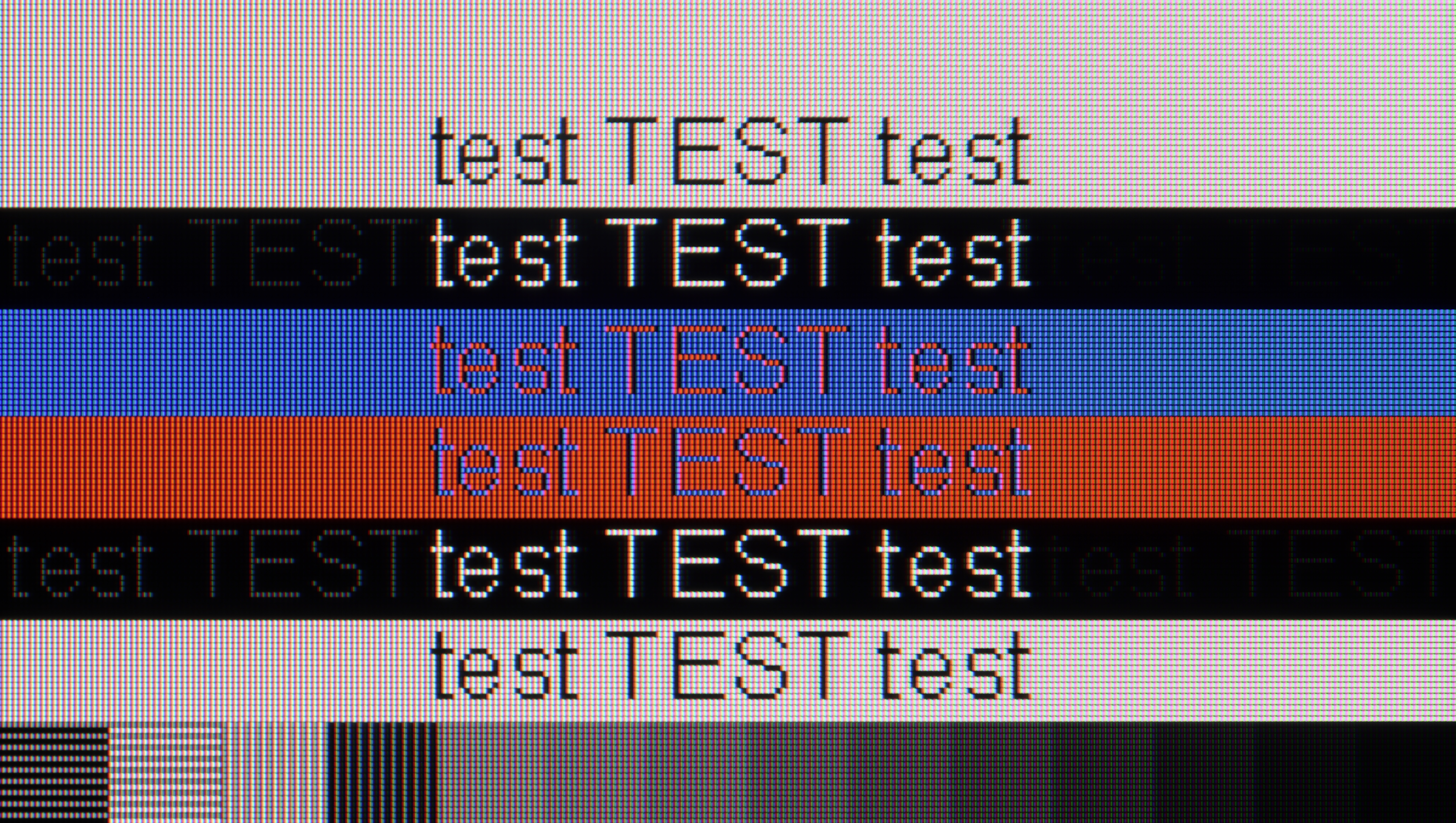
In the 43-inch variant equipped with an IPS panel, the LG UA7500 performs excellently as a computer work tool. Thanks to the use of this specific panel, the readability of the fonts is at a remarkable level – text looks sharp and clear even during prolonged office work. Additionally, it supports chroma 4:4:4, so colorful fonts, icons, and interface elements look phenomenal. This makes the UA7500 perform exceptionally well as an occasional monitor. It is not a screen designed for avid gamers, but in the context of work and everyday use of a PC, it performs great.
The LG QNED86A, thanks to its IPS matrix, full RGB subpixel layout, and correct implementation of chroma 4:4:4, makes fonts look stunning. Text is sharp, clear, and legible, making this TV great for office work. This is important because this year the model is also debuting in a 43" size, and such a variant can comfortably land on a desk and serve as a large monitor. Of course, some users who opt for the 43" will be gamers, and there are also no complaints here. The TV supports 4K at 120 Hz, so gameplay is smooth and enjoyable. It’s a bit of a shame that there's no higher refresh rate mode like the 144Hz declared by the manufacturer, as PC gamers would surely appreciate that. Nevertheless, the QNED86A6A performs really well as a monitor for gaming and work.
Viewing angles
6.4/10
6.9/10
The biggest advantage of the IPS variant in the LG UA7500 is the viewing angles. Even when we sit far to the side, the image maintains its consistency – colors do not fade dramatically, and the screen brightness remains at a decent level. It is this type of panel that makes the television work well in rooms where people often watch TV together, sitting in different places. It is clear that IPS has no problem maintaining stable color reproduction at greater angles, which facilitates viewing in larger groups. However, it should be added that the contrast is still limited, so even if the image from the side looks even, it still lacks depth, especially in dark scenes. Therefore, IPS makes up for it with a wide range of angles, but at the cost of blacks remaining average regardless of perspective.
QNED86A6A performs very well in this regard. The IPS panel used here ensures that the image retains its brightness and color saturation even when viewed at an angle. There is no fading effect that often appears in cheaper TVs with VA panels. Of course, there is no comparison to the level offered by organic panels, where colors and contrast hold up perfectly at almost any angle. But for an LCD TV, it is definitely one of the better results and is easily sufficient for watching movies or sports together on the couch with a larger group.
TV efficiency during daytime
4/10
5.8/10
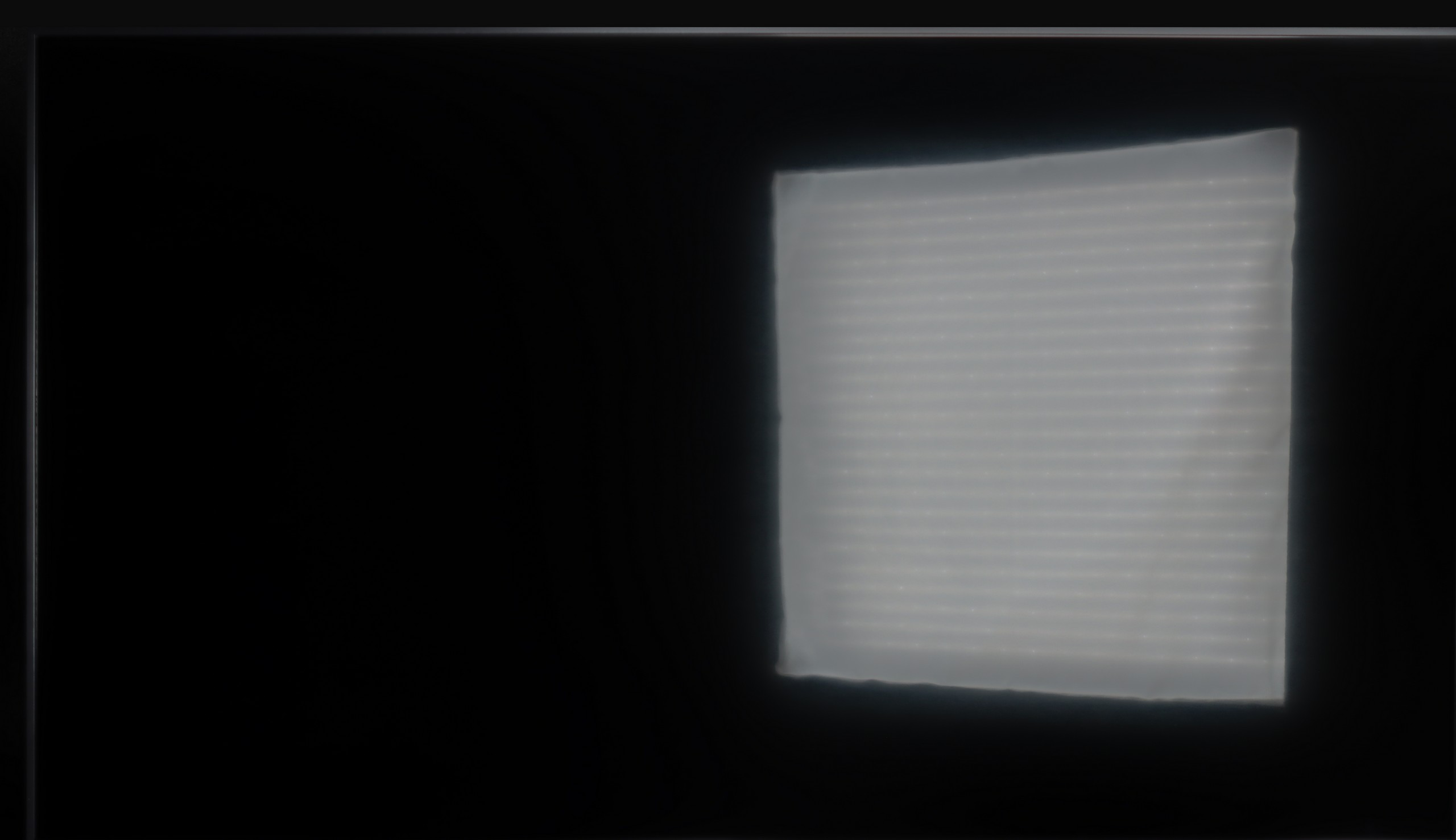
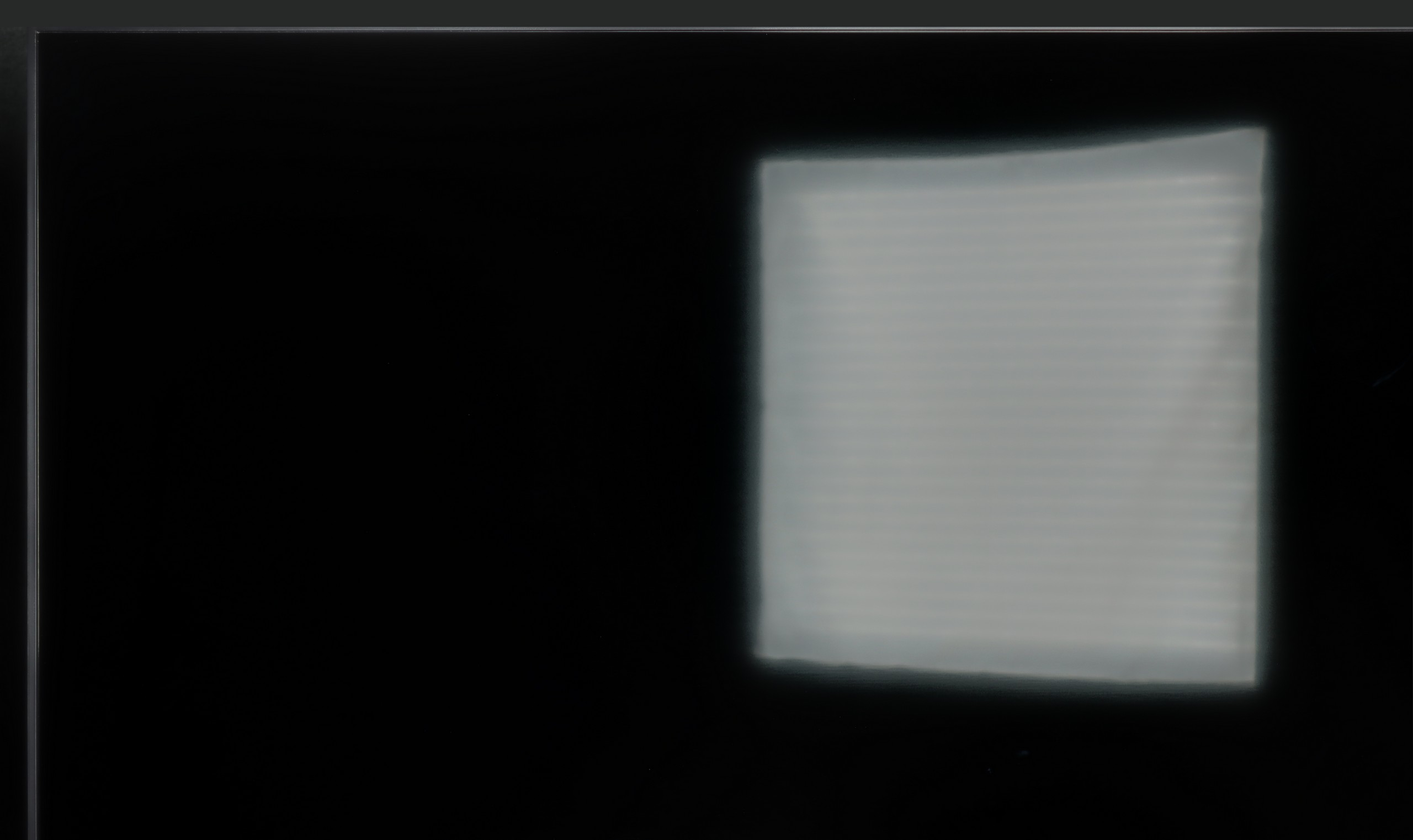
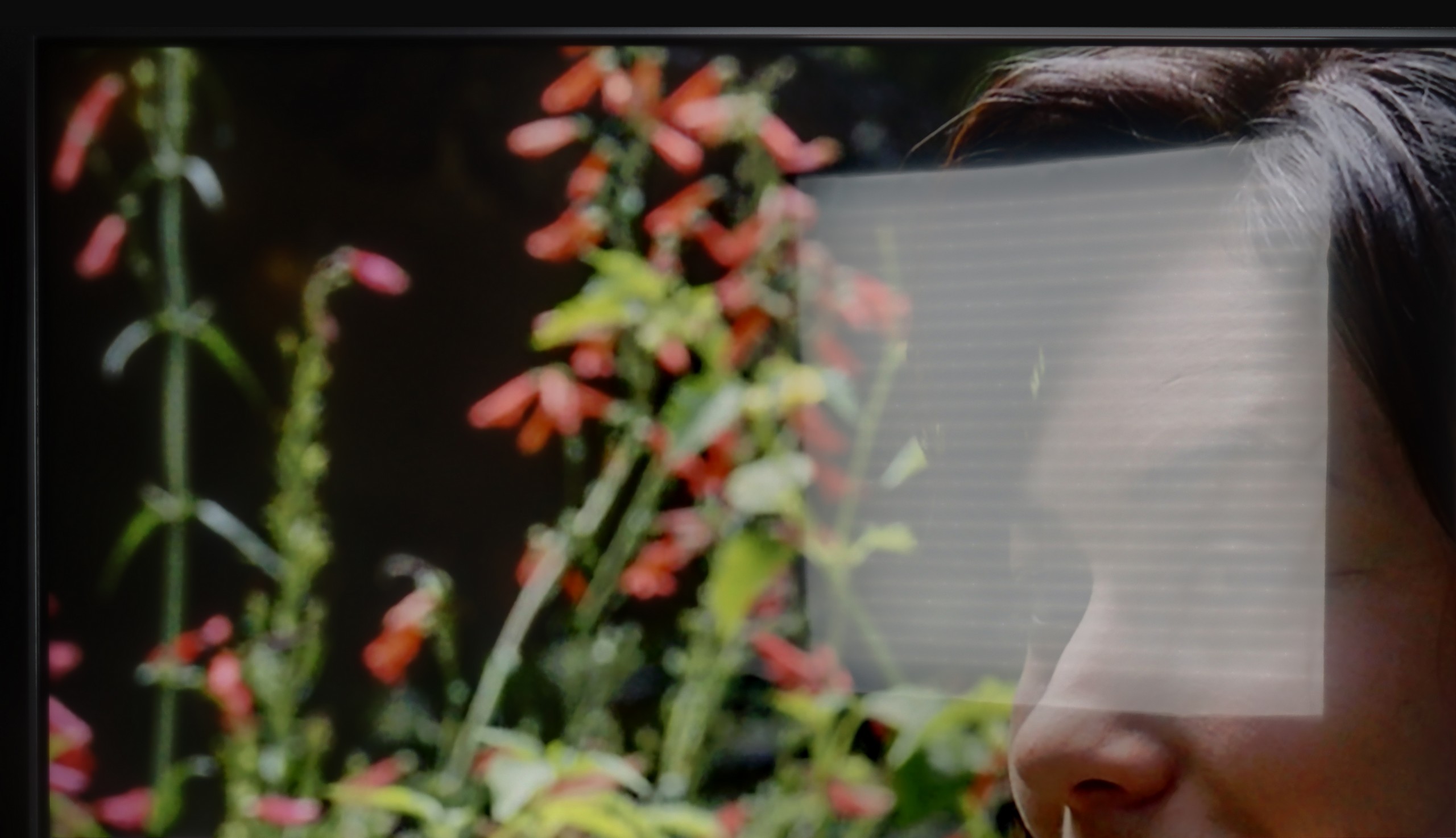
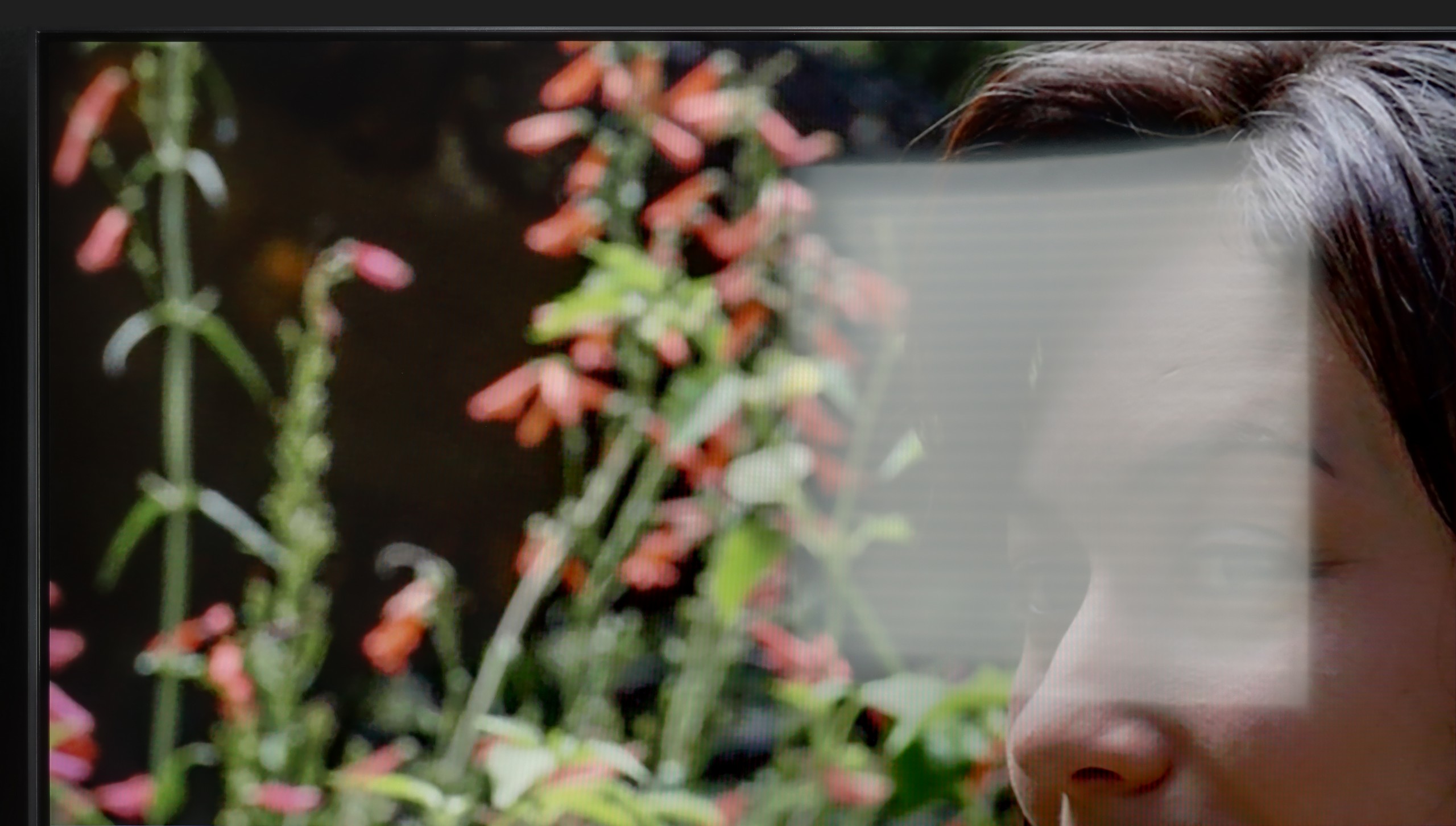
Matrix brightness
Average luminance SDR
LG QNED86A / QNED85A / QNED87A: 462 cd/m2
LG UA75006LA (IPS): 247 cd/m2
The IPS variant performs worse in this regard. The coating is the same – it moderately reduces reflections – but the brightness is lower, around 250 nits. This means that on sunny days, the screen appears noticeably darker and loses readability more easily. The colors still maintain their accuracy and do not fade excessively, but the lack of additional brightness reserve is noticeable. In practice, the television will work well in rooms where light does not directly hit the screen, whereas in brighter conditions, IPS can quickly show its limitations.
QNED86A6A is not a brightness master, but it manages just fine. Thanks to the moderately high brightness of the panel and quite decent glare reduction, the television performs well in typical, moderately lit living rooms. The image remains clear, and colors do not lose their intensity in daylight. However, let’s not kid ourselves; this is not a screen that will handle extremely bright conditions, where sunlight pours in through huge windows and floods the room.
Details about the matrix
Subpixel Structure:
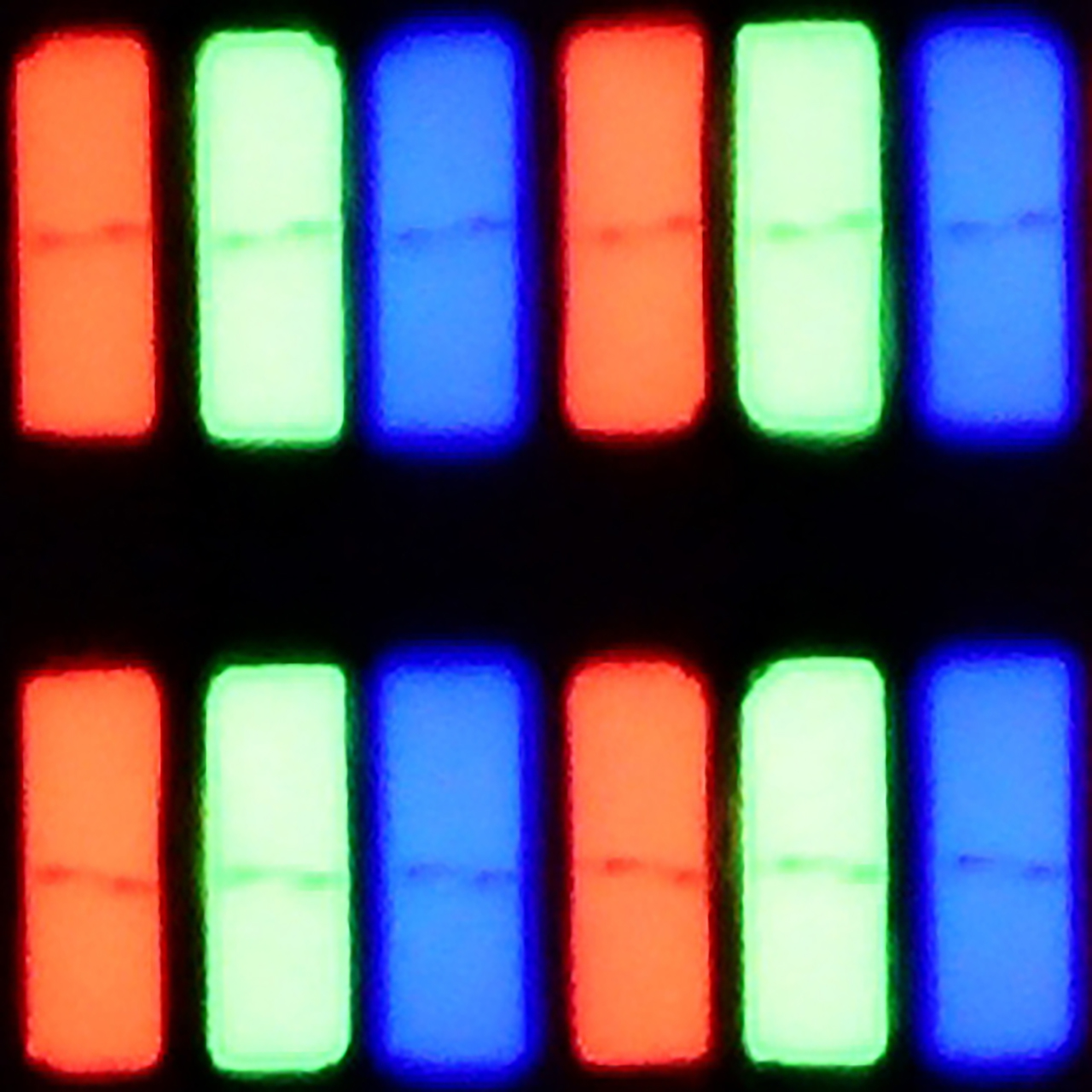
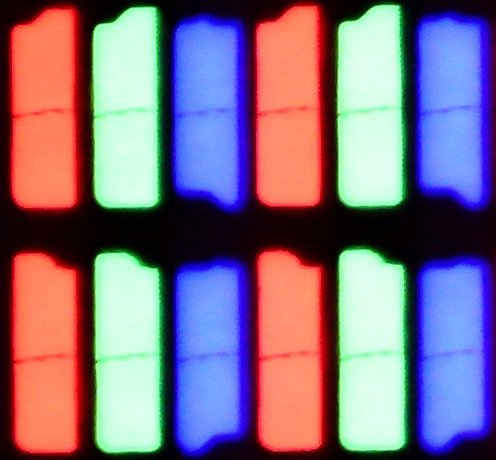
Panel uniformity and thermal imaging:
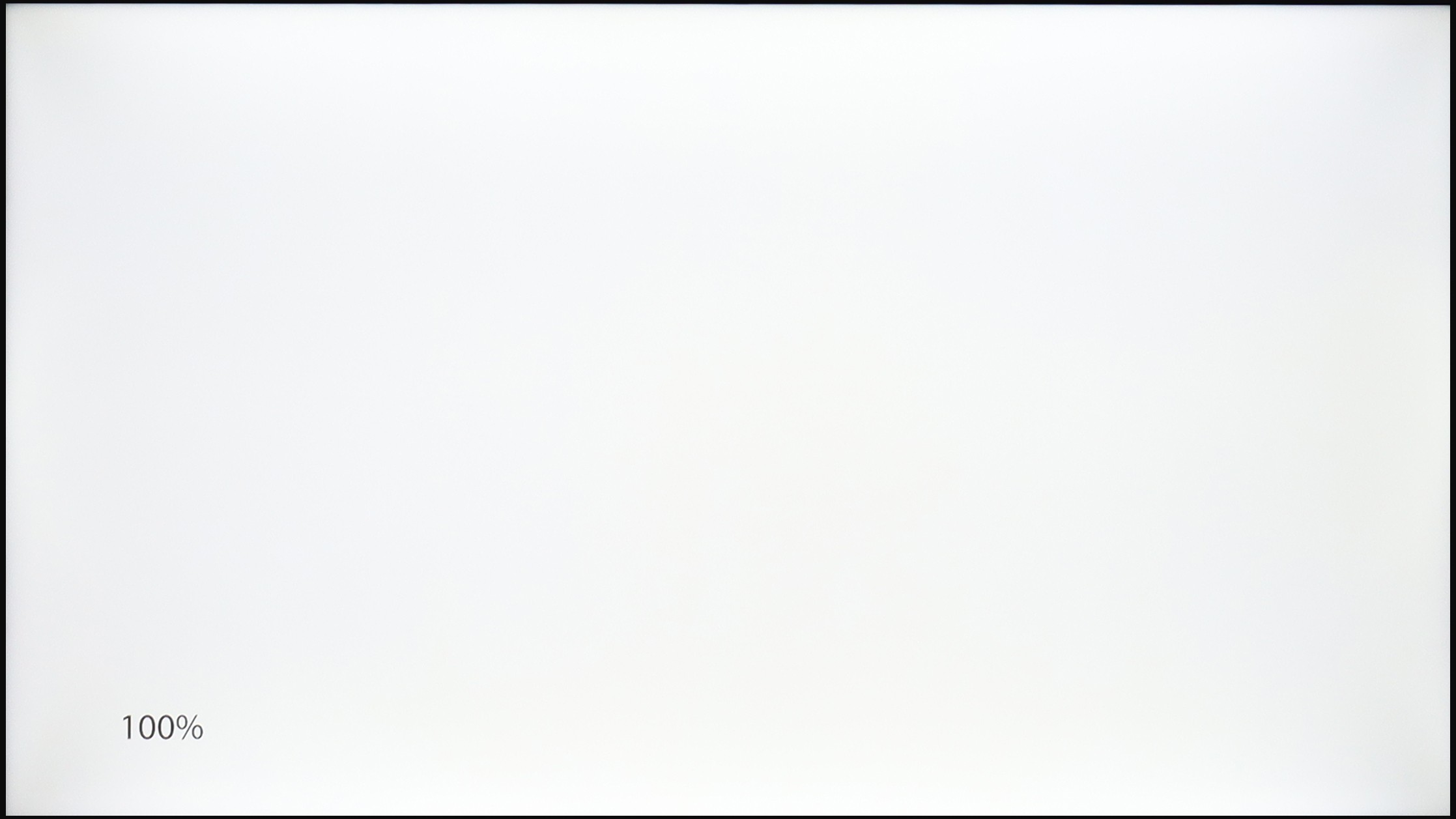
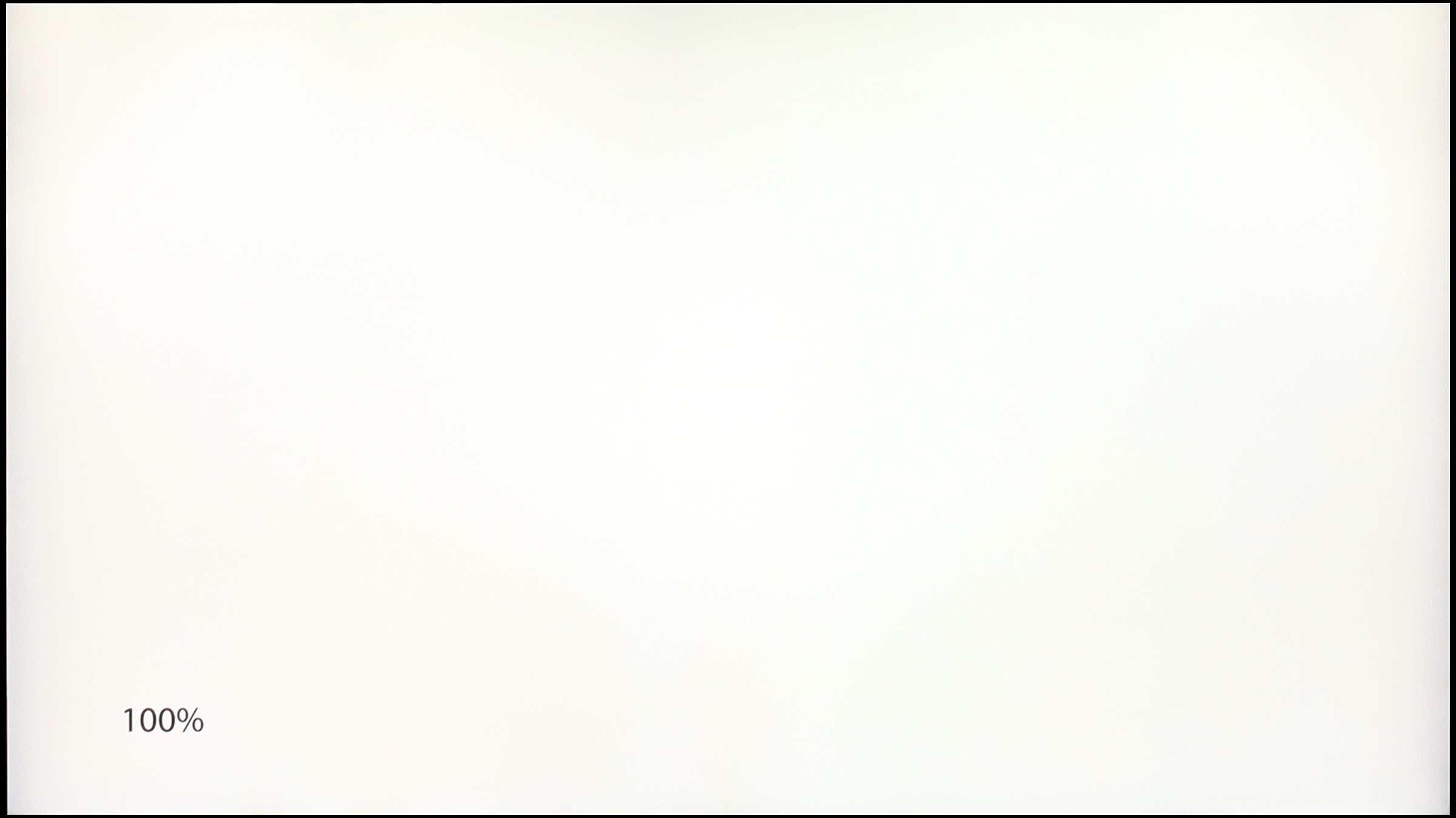
LG UA75006LA (IPS)
LG QNED86A / QNED85A / QNED87A
TV features
7/10
8.4/10
- HDMI inputs3 x HDMI 2.0, 0 x HDMI 2.10 x HDMI 2.0, 4 x HDMI 2.1 48Gbps
- OutputsToslink (Optical audio), eARC (HDMI), ARC (HDMI)Toslink (Optical audio), eARC (HDMI), ARC (HDMI)
- Network InterfacesWi-Fi 2.4GHz, Wi-Fi 5GHz, Ethernet (LAN) 100MbpsWi-Fi 2.4GHz, Wi-Fi 5GHz, Ethernet (LAN) 100Mbps
- TV receptionDVB-T, DVB-T2, DVB-S, DVB-S2, DVB-CDVB-T, DVB-T2, DVB-S, DVB-S2, DVB-C
Classic features:
- Recording to USB (terrestrial TV)
- Recording programming
- Picture in Picture (PiP)
- RF remote control (no need to aim at the screen)
- Backlit remote control
- Teletext
- Audio only mode
- Bluetooth headphones support
- Simultaneous Bluetooth headphones & TV audio
Smart features:
- AirPlay
- Screen mirroring (Windows Miracast)
- Voice search
- Voice search in native language
- Ability to connect a keyboard and mouse
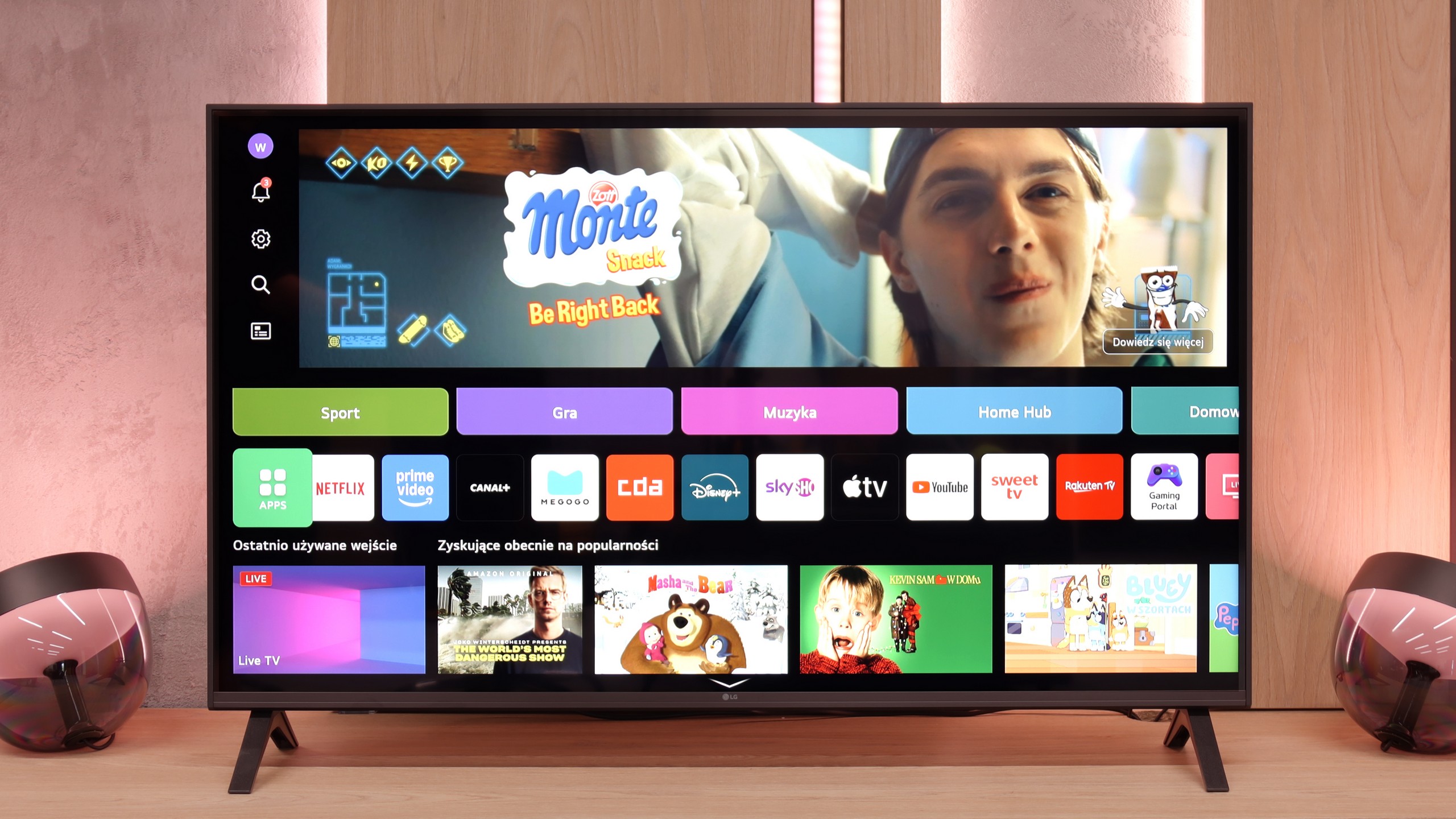
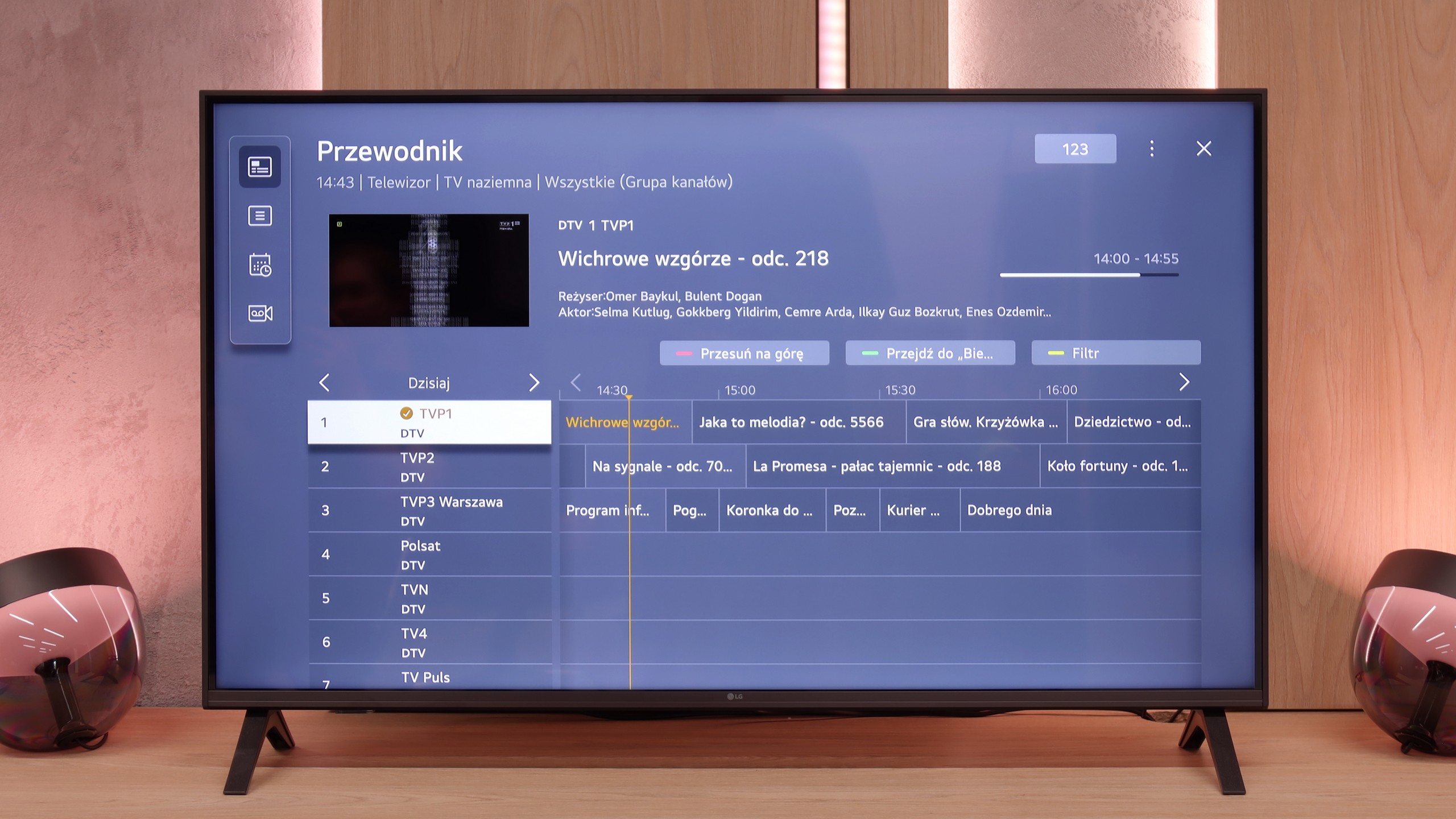
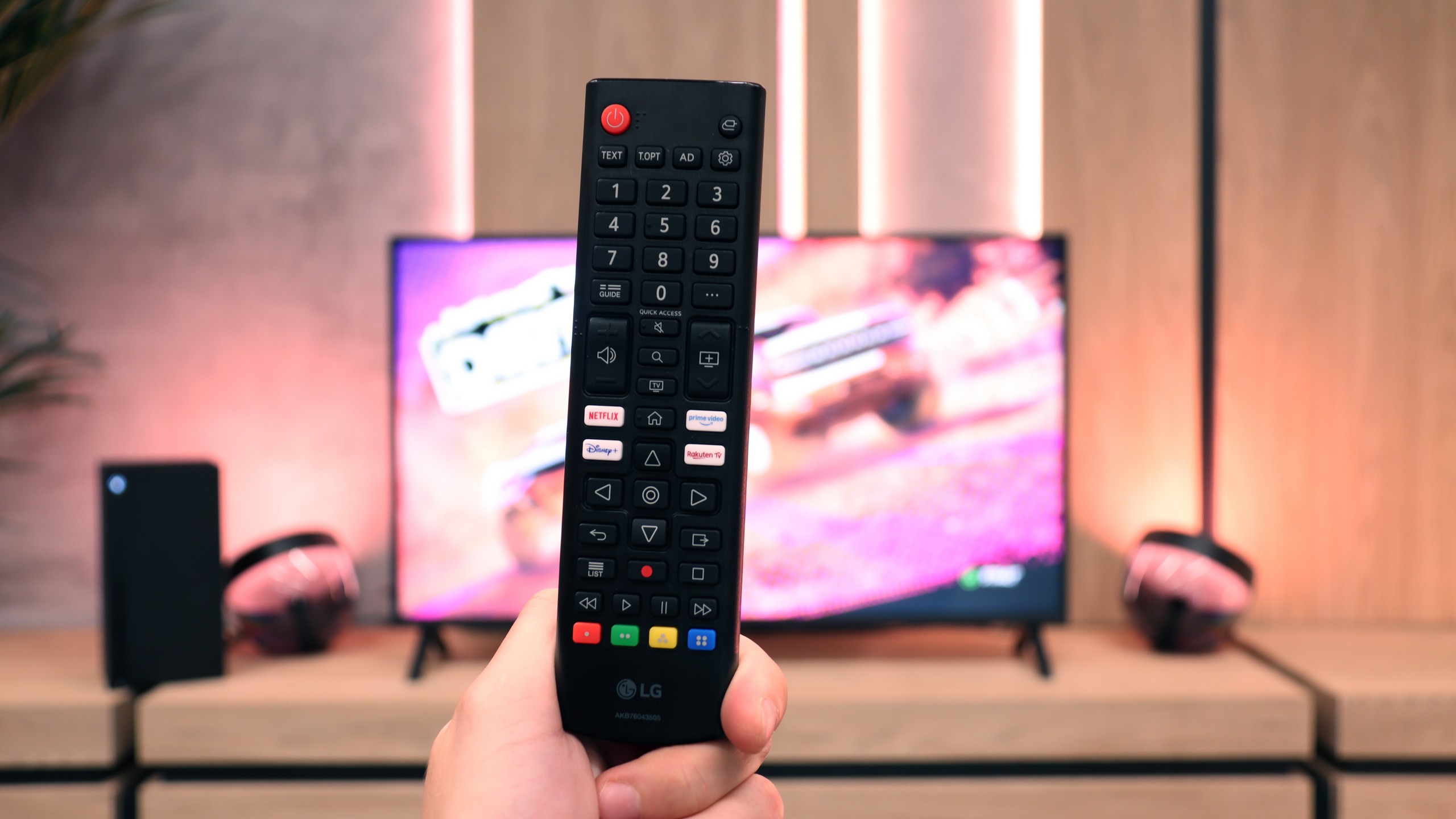
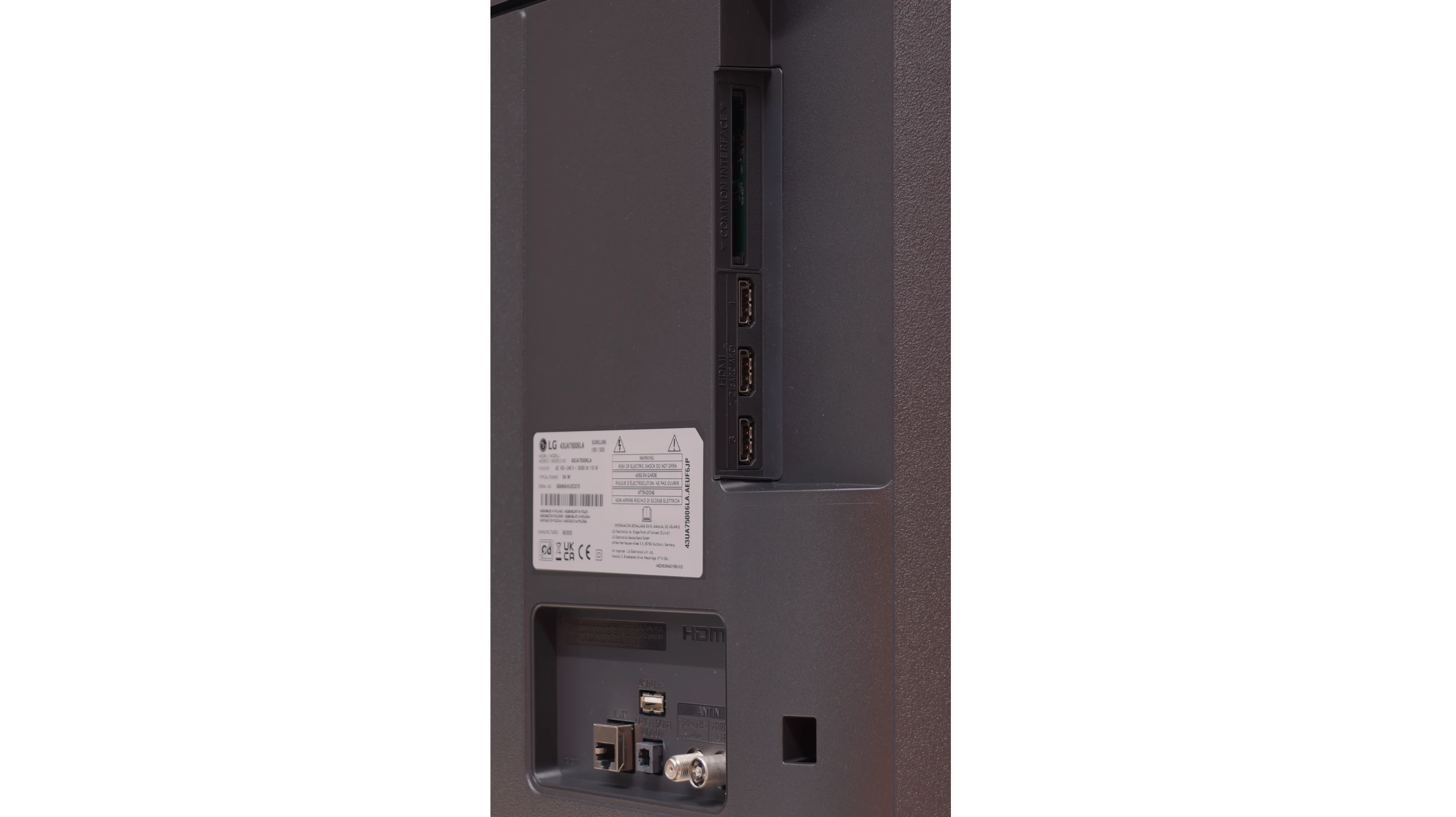
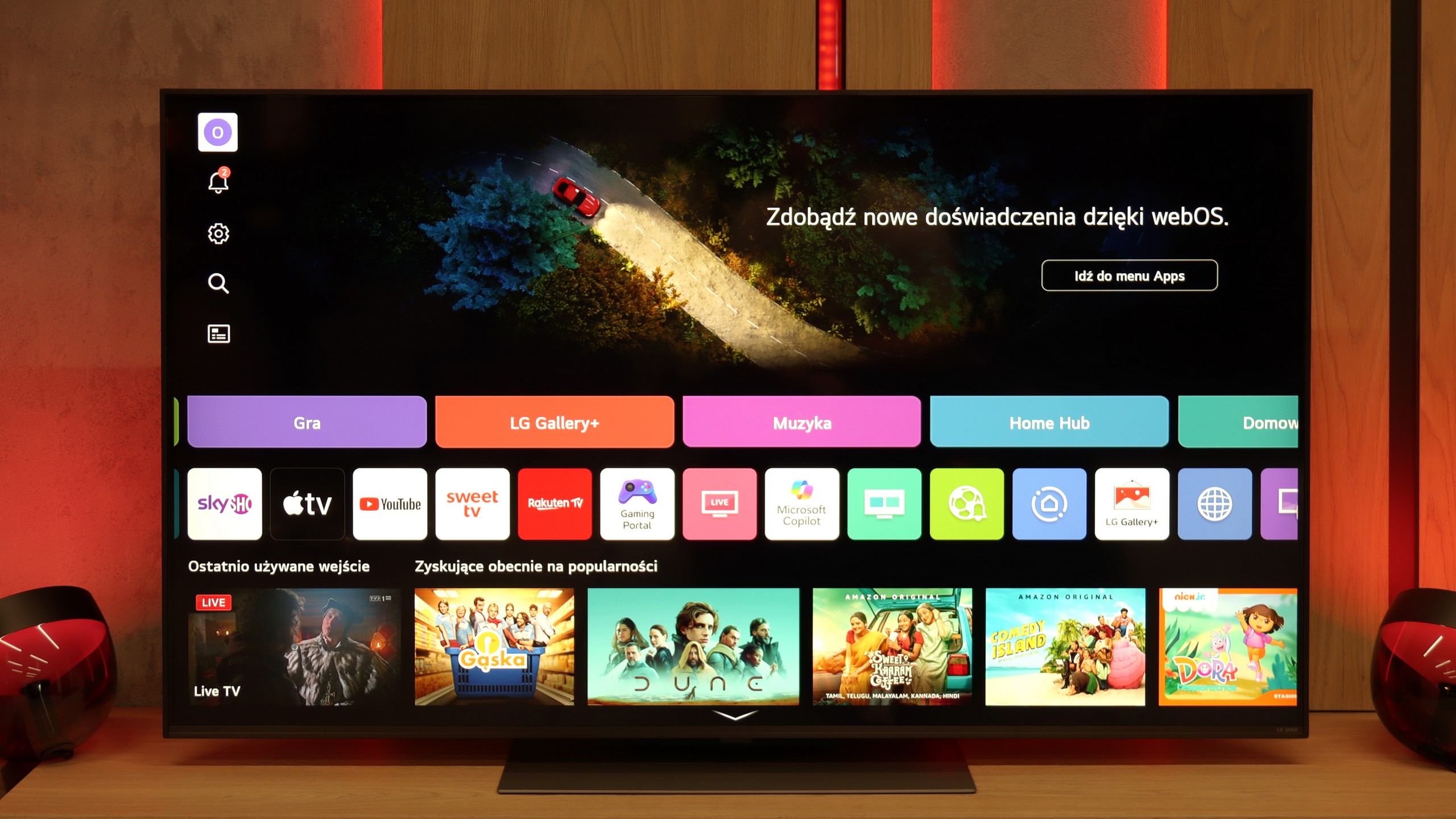
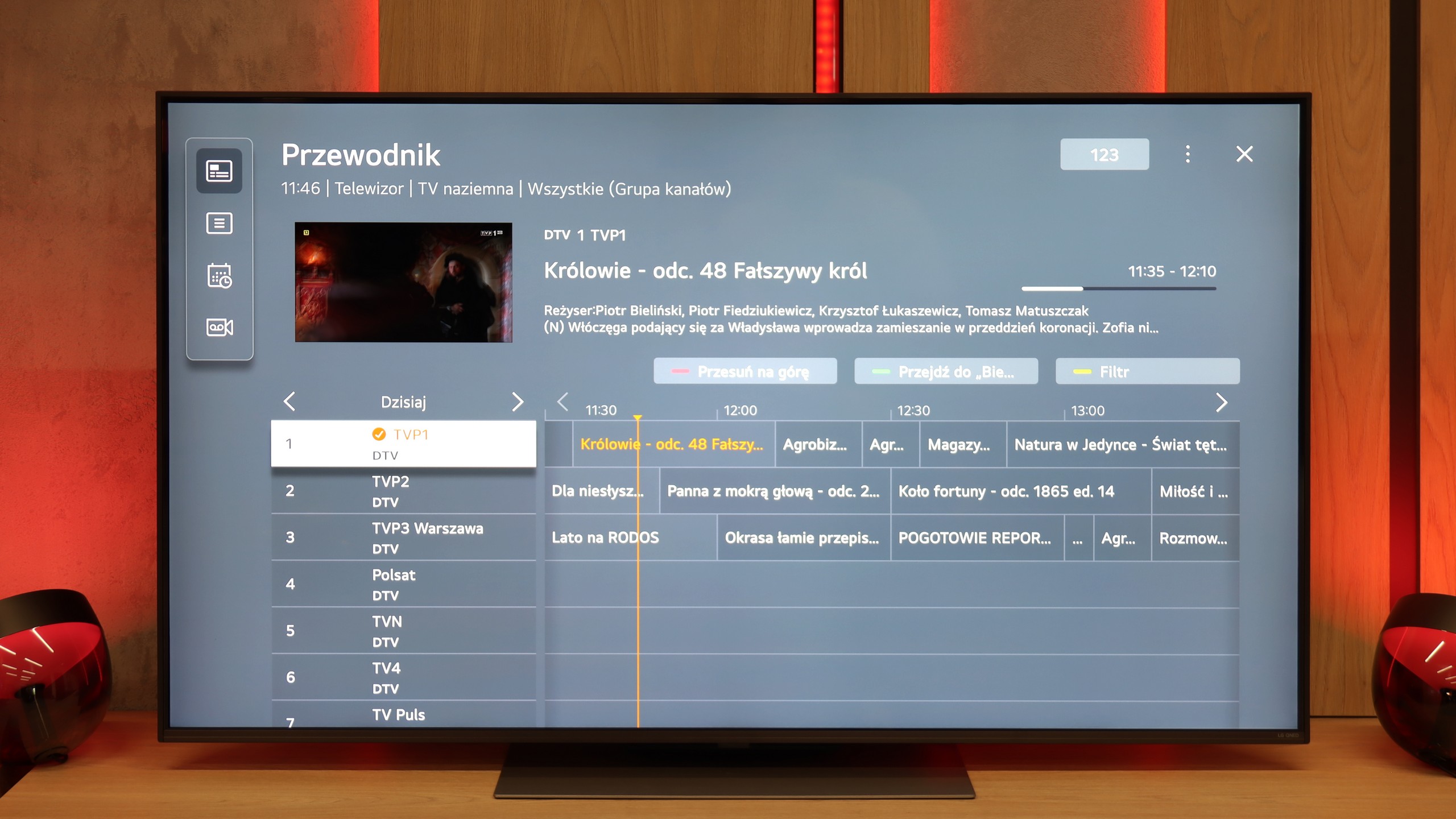
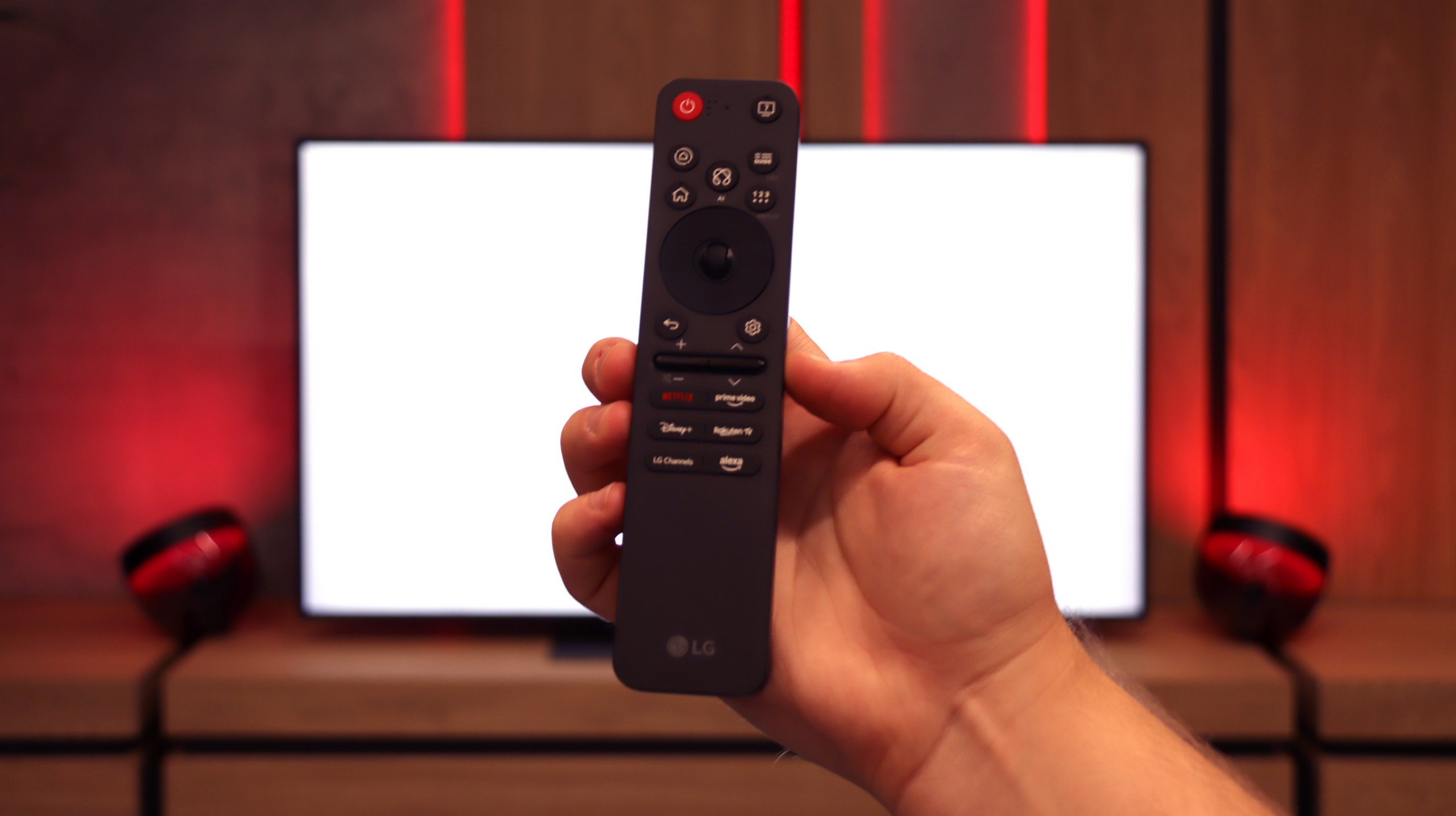
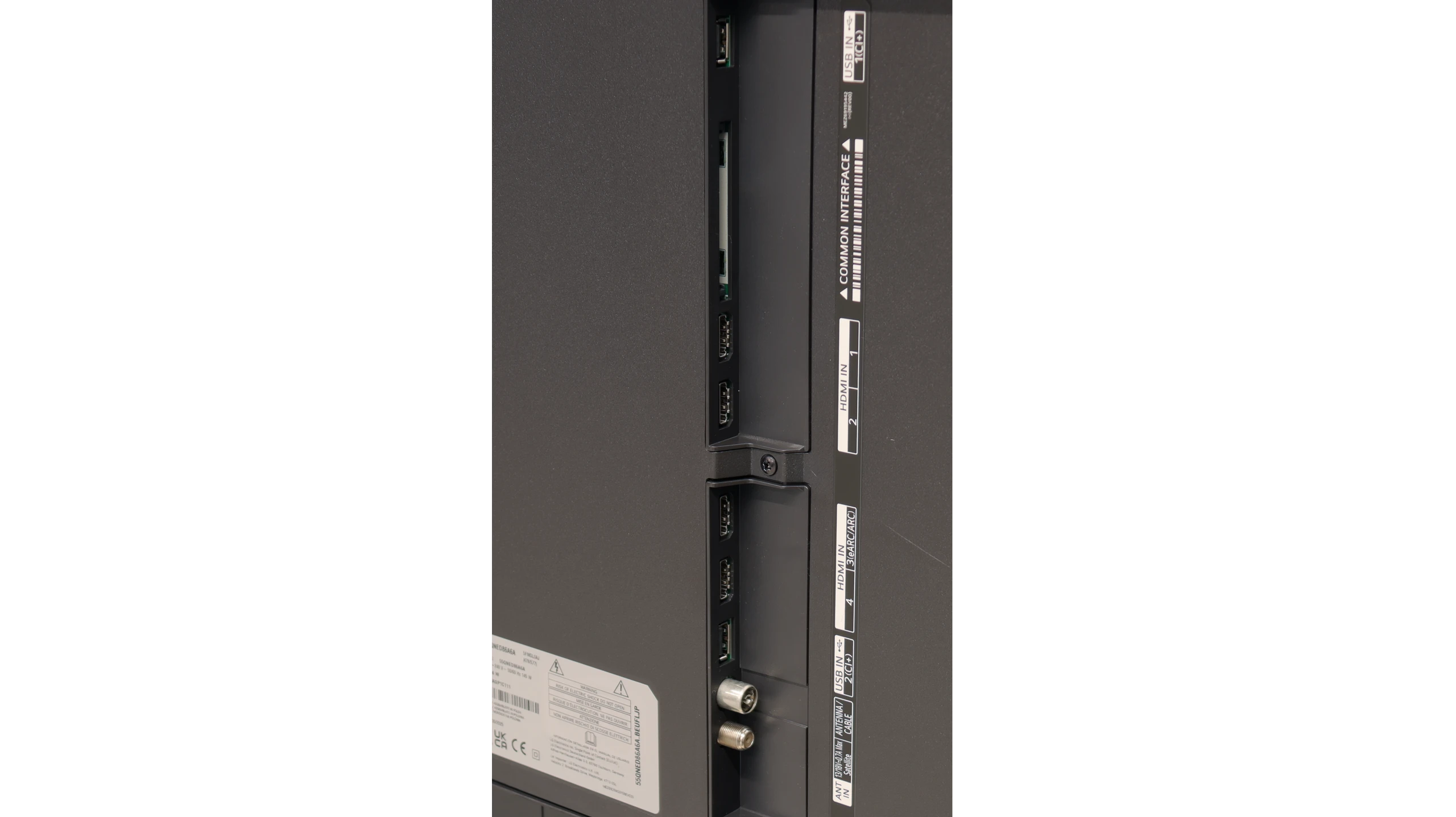
Smart Features: WebOS
A significant advantage of the LG UA7500 is the use of the webOS system. We gain access to a rich library of applications, support for AirPlay, screen mirroring, and many additional features that allow us to use the television in a truly convenient way. It’s easy to connect a smartphone, watch something from streaming services, or use music applications. However, a downside is that webOS remains quite a "heavy" system and does not operate as smoothly on the UA7500 as it does in more expensive models. The situation is not helped by the fact that the manufacturer did not equip us with a Magic remote with a cursor, which significantly speeds up navigation. We get a regular infrared remote, lacking that "magic" wand. Of course, it can be purchased separately, but considering the cost, it’s often better to pay extra for a higher LG model that already has this remote.
Classic Features
In more traditional use, the LG UA7500 also does not disappoint. The remote has been equipped with a numeric keypad and a considerable number of buttons, which will certainly be appreciated by users accustomed to older solutions. Additionally, there is the ability to record programs to USB from built-in tuners and a quite readable EPG interface that makes planning a television viewing easier. A downside remains the fact that the remote always requires aiming at the screen – but we believe that most more traditional users can forgive it, viewing it as a familiar and proven tool.
Smart Features: webOS
QNED86A6A runs on the well-known webOS – a system that has been a strong point of LG TVs for years. Everything operates quickly and stably, and apps launch without significant delays, though the interface can be somewhat overwhelmed by advertisements at times. Fortunately, the convenience is more noticeable in daily use than the shortcomings. A significant advantage is the Magic Remote, which allows you to control the cursor like a mouse – it's one of those features that you can easily get used to and later find hard to give up. The new version of the remote is slimmer as it has been stripped of the numeric keypad. Some will appreciate the simplicity, while others will miss the classic set of buttons; it's more a matter of habit.
Classic Features
Onboard, there are also a few solutions that are not always obvious in 2025. There is the ability to record programs from built-in DVB-T2 tuners onto USB, so you can calmly return to a match or series at any moment. In the evening, Bluetooth headphone support will come in handy – especially if someone in the house falls asleep faster than we do. Additionally, there is a full set of HDMI 2.1 ports with eARC support and audio formats like Dolby Digital and Dolby Atmos.
Playing files from USB
8.2/10
8.9/10
Supported photo formats:
Maximum photo resolution:
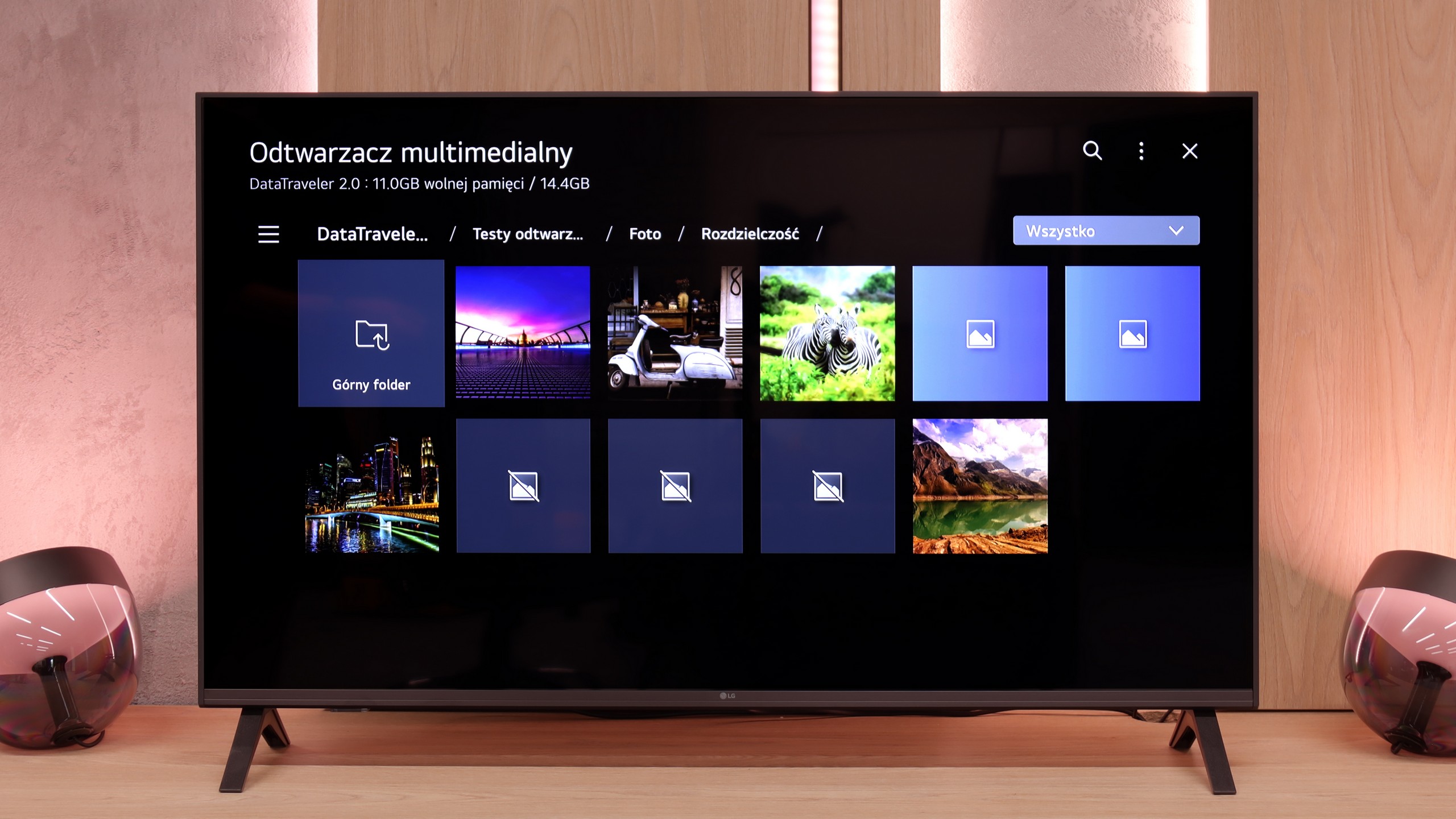
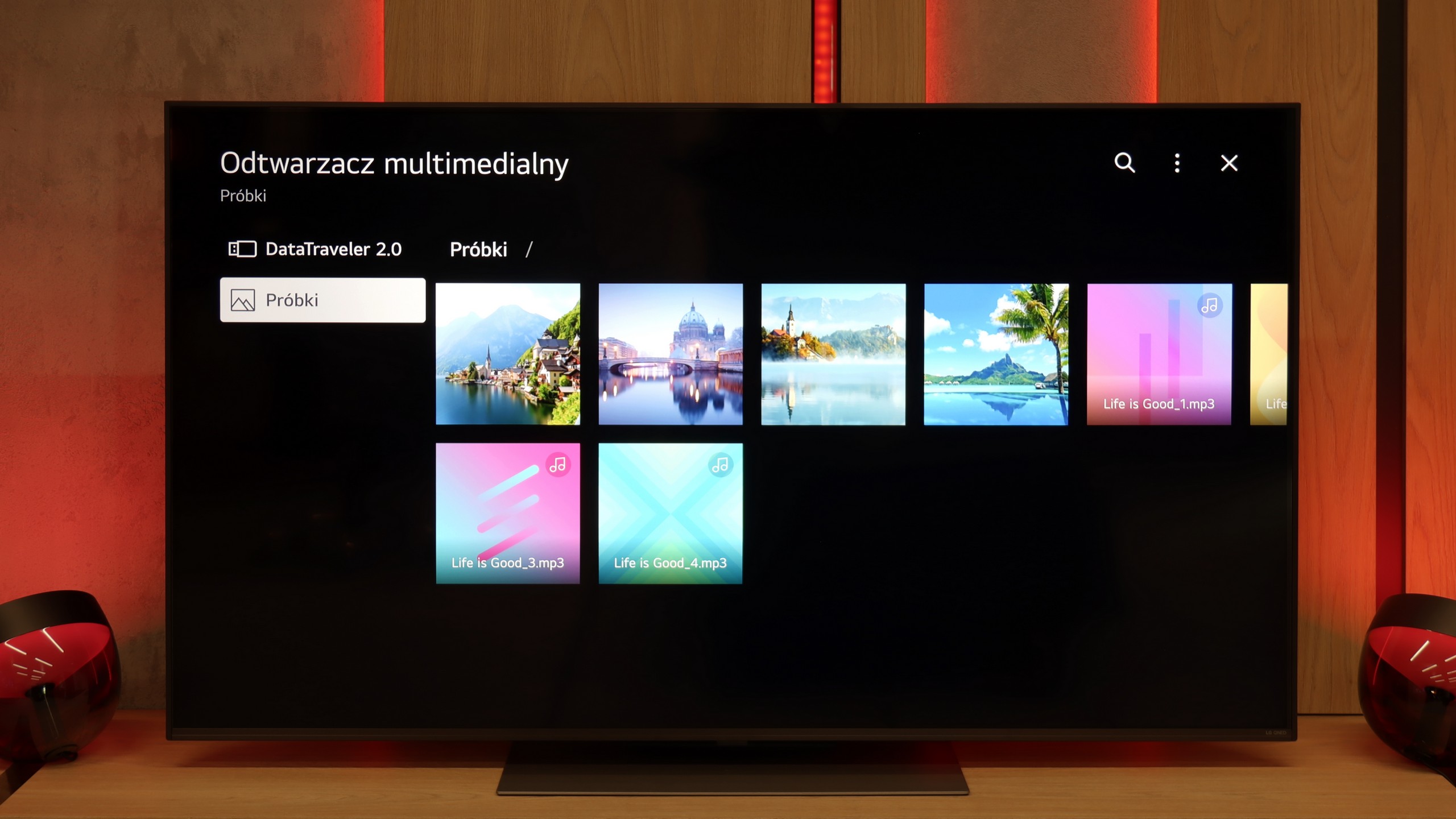
The media player in the UA7500 works fine – movies and music start without major problems, and this should be sufficient for most people. However, one thing caught our attention: the television does not play all photo formats. In practice, this means that if we upload photos directly from the smartphone to the USB drive, some may simply not open. It’s a minor detail, but it’s worth keeping in mind. Fortunately, you can always use wireless screen mirroring and show photos on the screen in another way.
The built-in media player in the QNED86A6A performs quite well with the most popular audio and video formats. During testing, we had no trouble playing MP4, MKV, or MP3 files; everything played smoothly without glitches. The TV also handled most images, although here we encountered a typical barrier for many manufacturers – the lack of full support for the HEIC format from Apple. So, if you regularly use an iPhone and store photos in this standard, you'll need to convert them beforehand or, preferably, transfer them using AirPlay. Other than that, it's hard to find fault as the built-in solution is really decent.
Apps
9.1/10
9.1/10














































Sound
6/10
6/10
- Maximum volume81dB84dB
- Dolby Digital Plus 7.1
- Dolby True HD 7.1
- Dolby Atmos in Dolby Digital Plus (JOC)
- Dolby Atmos in Dolby True HD
- DTS:X in DTS-HD MA
- DTS-HD Master Audio
In terms of sound, the LG UA7500 does not impress with powerful bass or the highest volume, but it plays surprisingly well. Our impression was that it performs better than most of the cheapest budget TVs and is really quite good for everyday use. It will be just right for news, shows, or series.
In terms of sound, the QNED86A6A performs quite decently, but let's not hide it – this is not the level that will impress home cinema enthusiasts. The sound is clean and clear, dialogues are easily heard, but overall it sounds rather flat and there is definitely a lack of solid bass. For everyday watching of television, streaming services, or news, this is an acceptable level; however, if you plan to watch movies or play games more often, even a basic soundbar will make a significant difference.
Sound Quality Test
No sound test video
Acoustic Measurements
81dBC (Max)
75dBC
84dBC (Max)
75dBC
